

South Africa Travel Guide
Last Updated: November 10, 2023
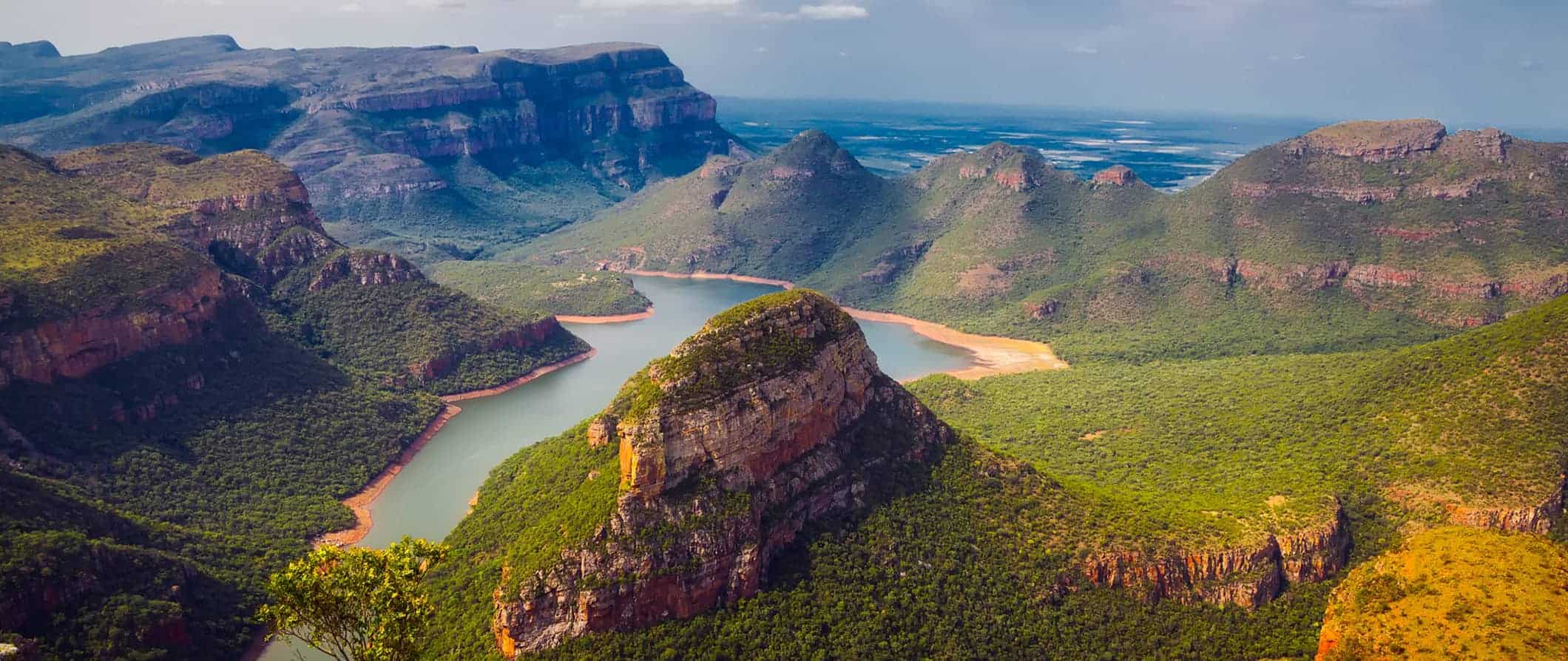
Offering amazing safaris, rugged mountains, world-class wineries, an endless coastline, and lively cities like Cape Town , South Africa is a magical destination that is often overlooked by budget travelers.
Annexed by the Dutch and British before gaining independence in 1931, South Africa struggled with apartheid from 1948 all the way until 1990. The remnants of that dark time can still be seen around the country today, however, things have been improving and the country has been moving forward in leaps and bounds.
While South Africa still struggles with corruption and petty crime (be sure to watch your stuff while you’re here) , its rich but tumultuous history, incredible natural beauty, and international culture make it a worthwhile stop on any round-the-world itinerary. It also has the most UNESCO sites in all of Africa!
This travel guide to South Africa can help you plan the perfect trip without breaking the bank to ensure you make the most of your time in this incredible country.
Table of Contents
- Things to See and Do
- Typical Costs
- Suggested Budget
- Money-Saving Tips
- Where to Stay
- How to Get Around
- How to Stay Safe
- Best Places to Book Your Trip
- Related Blogs on South Africa
Top 5 Things to See and Do in South Africa
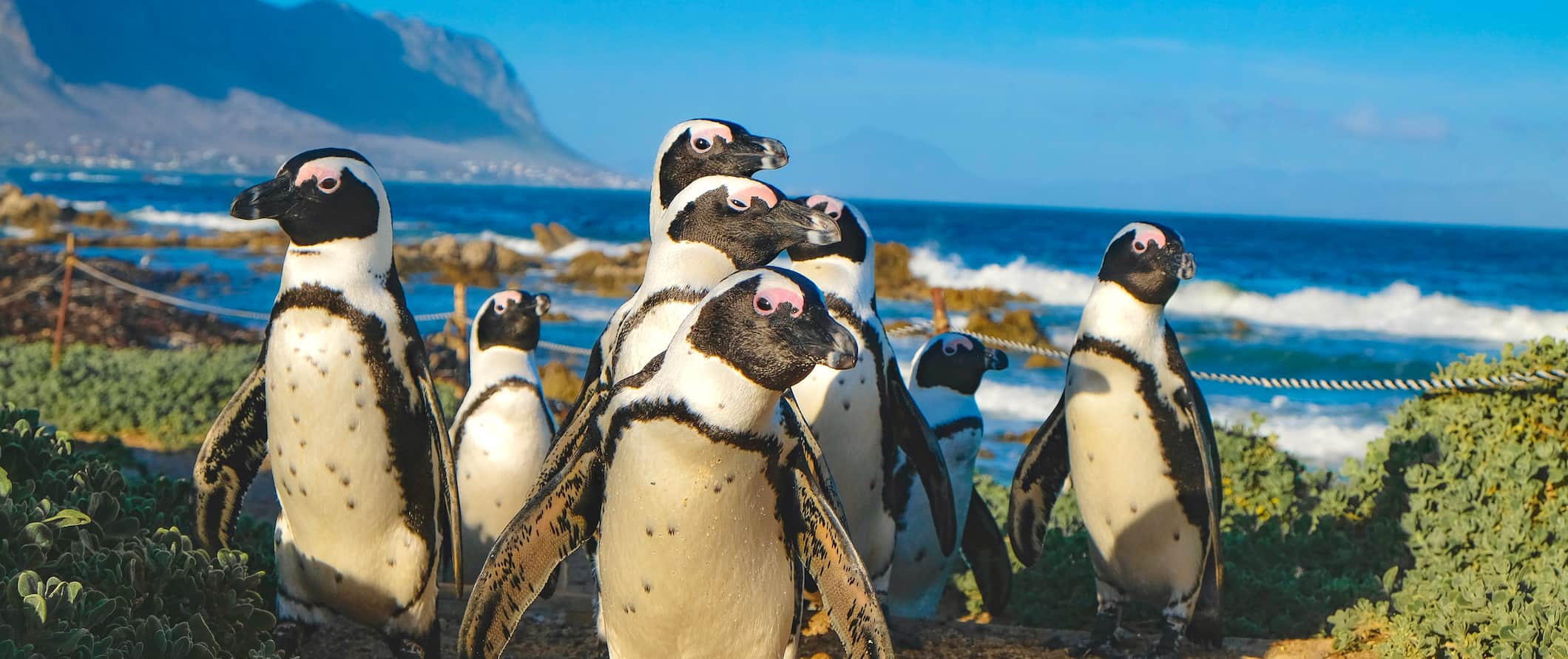
1. Enjoy Cape Town
Hike up Table Mountain, explore Kirstenbosch Botanical Gardens, tan on pristine beaches, visit Robben Island, and go on a wine tour. Cape Town has it all, so spend as much time as you can here. There’s also lots to see outside the city, including Boulders Beach ( where you can see penguins ) and Cape Point.
2. Learn about Apartheid’s tragic past
Gain a deeper understanding of South Africa by visiting the Apartheid Museum in Joburg, taking a tour of Robben Island (where Nelson Mandela spent 18 years in prison), and exploring Soweto (SOuth WEstern TOwnships), a township created by the Apartheid government in Gauteng. It’s a dark, eye-opening era to learn about.
3. Explore Kruger National Park
Kruger National Park is the biggest, most popular, and busiest game reserve in the country. It’s a huge park with over 2 million hectares (almost 5 million acres) of space brimming with wildlife (including the Big 5). A basic three-day budget safari costs about 12,000 ZAR.
4. Drive the Garden Route
This route stretches along the Indian Ocean from Mossel Bay to St Francis, offering beautiful landscapes, serene beaches, picturesque towns, scenic wetlands, and sprawling wineries along the way. The journey is only about 200 kilometers (125 miles), but don’t rush — it’s best to spend a few days stopping and exploring as you go.
5. Day trip to Eswatini (formerly Swaziland)
Formerly called Swaziland, this tiny country was renamed in 2018 (Eswatini means “land of the Swazis”). There are several large game parks and reserves here, making it a great destination for more wildlife spotting. Be sure to visit Hlane Royal National Park. Borders can be a bit slow, so check the wait times before you go.
Other Things to See and Do in South Africa
1. partake in extreme sports.
South Africa offers over 100 extreme sports, including bungee jumping, sandboarding, skydiving, parasailing, jungle zip-lining, scuba diving, and more! Prices vary but expect skydiving to cost around 2,800-3,100 ZAR and bungee jumping to cost around 1,400 ZAR. The world’s third-highest bungee jump point, at Bloukrans Bridge, is here in South Africa (it’s 216 meters/708 feet). If you’re going to go cage diving with sharks, make sure you avoid companies that chum the waters to entice the sharks as that isn’t an ethical or sustainable practice.
2. Explore KwaZulu-Natal
People flock to the South African province of KwaZulu-Natal (KZN) on the east coast to relax, tan, ride the waves, eat amazing food, drink, and spot animals. KwaZulu-Natal’s game-rich Zululand and Elephant Coast in the north provide great wildlife spotting. This is also the birthplace of so many famous and powerful South Africans, including former presidents, the founder of the African National Congress, anti-apartheid leaders, and one of the most influential monarchs of the Zulu Kingdom, Shaka Zulu (1787-1828). KZN has diverse landscapes, interesting activities, and a mix of city life and rural-tribal life. One thing that’s consistent throughout the region is the level of pride in the Zulu culture.
3. Surf the waves
Dungeons Beach, near Cape Town, is a great place to spend some time if you have experience riding gigantic waves. Really — only surf here if you’re a seasoned professional, as the cold water and unpredictable waters are dangerous for new surfers. Beginners should visit Jeffreys Bay (J-Bay), about 75 kilometers (47 miles) west of Port Elizabeth, which is famous for its awesome right-hand point breaking waves. Muizenberg on False Bay is one of the best options for winter longboarding when the north-westerly wind picks up, and Durban has waves ideal for newbies and pro surfers alike. Group surfing lessons cost around 350 ZAR, including equipment.
4. Explore the Cango Caves
These caves, located in the Swartberg Mountains in the Western Cape Province, are 20 million years old and stretch for 4 kilometers (2.5 miles). You can see the exquisite stalagmite formations during the subterranean tours and learn about its history from the Interpretive Center. The standard tour costs 150 ZAR, while a more adventurous (and longer) tour is 220 ZAR, though you should only take this tour if you’re comfortable crawling through very tight spaces. Wear sensible footwear when visiting.
5. Hike Table Mountain
One of the best things in Cape Town is hiking up Table Mountain. It’s a steep, tiring climb that takes around two hours, but the views are worth it. There’s a nice little cafe and a cobblestoned area to walk around at the top so you can relax and admire the view when you’re done. Once you successfully reach the summit, you can take the cable car back down. A one-way ticket is 210 ZAR for adults or 320-390 ZAR for round-trip tickets. Be sure to dress appropriately and bring water as the weather can change quite quickly.
6. Admire the Big Tree in Tsitsikamma National Park
Estimated to be about 800 years old, this majestic Yellowwood tree is located in the Tsitsikamma National Park along South Africa’s Garden Route. This tree of epic proportions stands 36.6 meters (120 feet) high and has a trunk circumference of 9 meters (30 feet). There is a 500 meter (1,640 foot) wooden walkway through the indigenous forest leading to this tree, and from there, you can journey onto a 3-4 kilometer (1.5-2.5-mile) walk if you follow the Ratel Nature Walk signposts. Admission is 12 ZAR. While you’re here, you can also hike many of the other trails in the park, which stretches 80 kilometers (50 miles) along the coastline.
7. Sleep in Gandhi’s house
Did you know that Mahatma Gandhi spent 21 years in South Africa? While he was there, Gandhi’s close friend and German architect Hermann Kallenbach designed and built this farmhouse in 1907, which then served as Gandhi’s South African base from 1908-09. The house is called Satyagraha House and is situated in Orchards, Johannesburg. It’s the spot from which Gandhi developed his plan for passive resistance against the British Empire. It’s been beautifully restored and provides free day visits or overnight stays in one of its seven rooms (prices from 3,080 ZAR).
8. Drive the Namaqualand Flower Route
The Namaqualand Flower Route is a 650-kilometer (404-mile) drive from Yzerfontein to Richtersveld National Park. While you can drive it in one day, most people break it up into sections and take a few days to do it. This region bursts into a sea of color every spring (mainly mid-August and mid-September, peaking in August) when over 4,000 species of flowers bloom. Head north to Springbok, and then make your way down in a southerly direction so the flowers are facing you. The flowers are best viewed on non-overcast days between 10:30am-4pm, so plan your trip accordingly. The Goegap Nature Reserve provides picnic areas and overnight facilities as well. Expect to pay between 320-1,200 ZAR per night.
9. Visit the wineries
South Africa is one of the biggest wine exporters in the world, exporting over 300 million liters (80 million gallons) of wine each year. Visit the vineyards to taste some incredibly fresh wine against a serene, mountainous backdrop. Cape Town is most popular for these tours, but there are great wine regions all over the country, including the Coastal Region, Klein Karoo, Breede River Valley, Olifants River, and Cape South Coast. Jump on an 8-hour day tour that goes from winery to winery, sampling all sorts of wine while learning all about the history of winemaking in South Africa. Tours start at 950 ZAR for a half-day tour.
10. Drive the Sani Pass to the Roof of Africa
Drive the Sani Pass Mountain route in Lesotho — the only route over the Drakensberg escarpment into the mountainous Kingdom of Lesotho. Since it first opened in 1955, the Sani Pass has offered an exhilarating journey as it twists and turns upwards through rocky cliffs that peak at 2,873 meters (9,425 feet) above sea level (hence the name “the Roof of Africa”). Only 4×4 vehicles are allowed on the road, which is treacherous and has been the site of countless accidents. As an alternative to attempting the drive yourself, several tour operators offer day tours, generally costing 940 ZAR. Afterward, bask in your victory as you enjoy a drink at Sani Mountain Lodge, known for being the highest pub in Africa!
11. See the Durban Beachfront
For decades the Golden Mile beachfront in Durban has been popular with cyclists, joggers, and leisurely strollers. You can also explore the Indian District, where dealers in traditional kurtas and saris hawk incense, ornately embroidered fabrics, and aromatic spices. Other sights in the city include visiting the KwaMuhle Museum, the Durban Botanical Gardens, the Tala Game Reserve, the Inanda Heritage Trail, or seeing a Sharks rugby game. Surfing is another popular activity here thanks to the ideal oceanic conditions.
12. Tour Riemvasmaak Community Conservancy
In 1973, under apartheid, 1,500 people were forcibly removed from this area. After the elections in 1994, they were able to return and now welcome visitors to their community. The park is located in the Kalahari Desert, making for some stark — but beautiful — landscapes, with unique rock formations and translucent green fluorite mineral deposits. There are many 4×4, hiking, and mountain biking trails here, as well as plenty of hot springs. There are small guesthouses and camping plots if you’d like to stay overnight.
13. See the penguins
The African penguin is the only penguin to breed on the continent. You can see them at Boulders Beach or Stoney Point Nature Reserve at Betty’s Bay (both locations are a short drive from Cape Town). You don’t often get to see penguins outside of zoos, so it’s definitely worth the drive to see this colony of penguins living their best lives on the beach. Try to arrive before 11am to get the best view of the penguins with the fewest crowds around. Entrance fees range from 25-152 ZAR and full-day guided tours cost 780 ZAR.
14. Surf the waves at Muizenberg Beach
Known for its iconic multi-colored huts on the boardwalk, this is a laid-back neighborhood in Cape Town with a multi-cultural vibe. If you want to hit the waves, you can rent a board for as little as 250 ZAR and a wetsuit 150 ZAR for the day (also available for cheaper by the hour). If you don’t know how to surf, you can also register for SUP or surf lessons at one of the surf shops nearby. Group surf lessons are 235-310 ZAR.
15. Safari in other national parks
While Kruger gets all the love, check out Pilanesberg National Park, Addo National Park, Umfolozi National Park, and the St. Lucia Wetlands. Without the crowds of Kruger, you’ll have ample opportunity to get up close to elephants, lions, leopards, rhinos, and more. From Johannesburg, the Madikwe Game Reserve, Pilanesberg Game Reserve, and the Dinokeng Game Reserve are just some of the options for nearby safaris.
16. Go whale watching
South Africa is one of the best places in the world to go whale watching. If you’re visiting between June and November, there’s an excellent chance of spotting Southern right whales, Bryde’s whales, and orcas. The town of Hermanus, located 120 kilometers (75 miles) southeast of Cape Town, is the base for many of the best whale-watching companies in the country. Some reputable companies include Southern Right Charters, Hermanus Whale Cruises, and Xplora Tours. Expect to pay around 900-1,020 ZAR for a two-hour tour.
For more information on specific cities in South Africa, check out these guides:
- Cape Town Travel Guide
South Africa Travel Costs
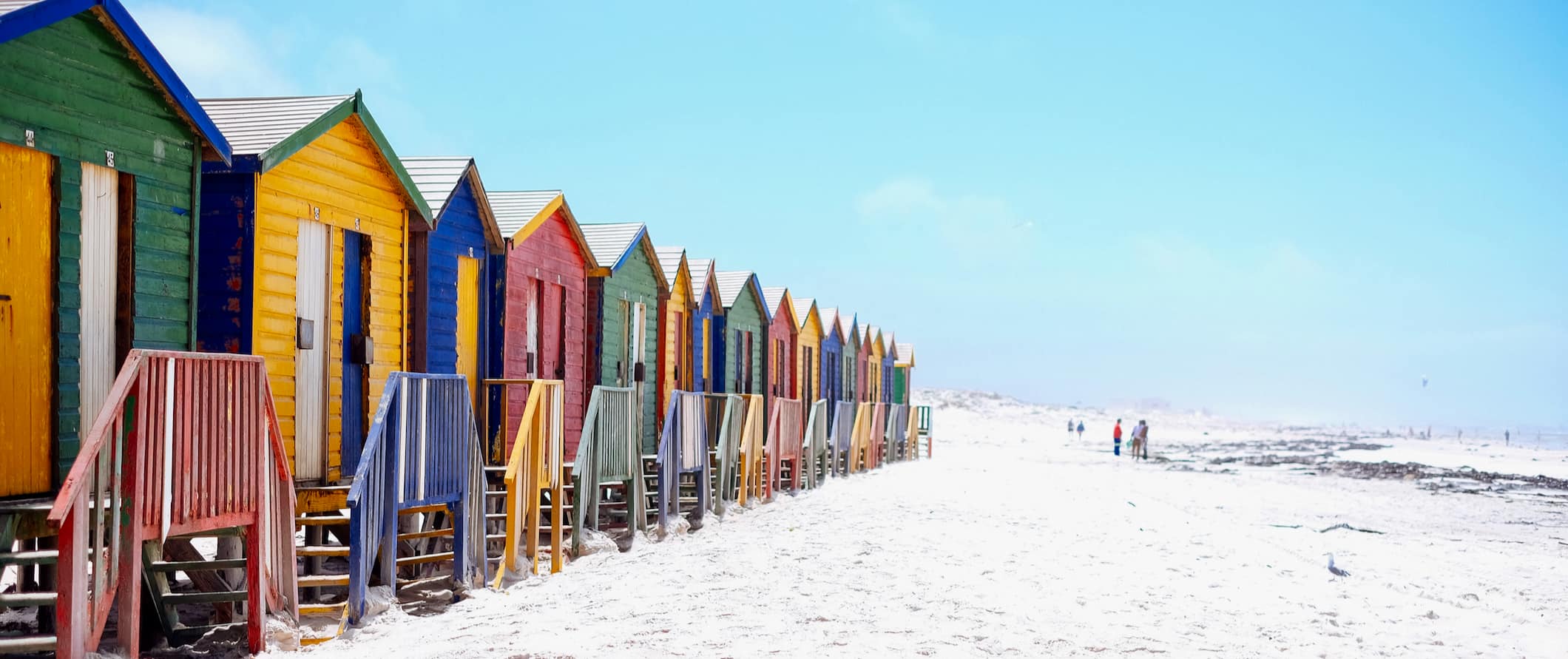
Accommodation – A bed in a 4-8-bed hostel dorm costs 250-300 ZAR per night, and around 215-230 ZAR per night for a dorm with 10 or more beds. A private double room costs 600-935 ZAR. Free Wi-Fi is standard and many hostels also include free breakfast and/or have a kitchen, as well as a swimming pool.
For those traveling with a tent, campgrounds can be found all around the country. Expect to pay between 100-400 ZAR per night, depending on the facilities and location.
If you are looking for a hotel, budget hotels range from about 850-1,200 ZAR for a twin or double in big cities and get cheaper in more rural areas. Standard amenities include Wi-Fi, private bathrooms, and air-conditioning. For a hotel with amenities like free breakfast and a swimming pool, expect to pay at least 900 ZAR per night.
Generally, accommodation prices are higher in Cape Town and Johannesburg and inside of any national parks. If you want to cut your prices, think about staying away from the city center, in lesser visited towns, and outside of the national parks when you’re going on a safari.
In the low season, you can find hostels and hotels for 10-20% cheaper.
Airbnb is also an option around the country, though it’s most commonly available in larger urban areas. A private room costs 300-600 ZAR per night while an entire home or apartment costs at least 700-900 ZAR.
Food – Due to its history of colonization and immigration, South African cuisine is a mix of indigenous, Dutch, British, Indian, and Malaysian culinary traditions.
Above all, South Africa is known for its meaty meals. A favorite pastime of South Africans is the braai , an open-air barbeque that originated in the townships of Johannesburg. Often served with your plate of barbeque are chakalaka , a dish of onions, tomatoes, peppers, carrots, and beans, and pap, a maize porridge.
Other popular dishes include bobotie (a baked dish of curry-spiced minced meat with egg on top) and potjiekos (a stew with meat, veggies, and potatoes). Common desserts include melktert (a custard tart) and malva pudding (like sticky toffee pudding).
Overall, restaurants in South Africa are pretty affordable. At a café, some coffee and a small meal cost 100 ZAR. At a casual restaurant serving traditional South African cuisine, expect to pay around 150 ZAR for a meal.
In terms of traditional barbeque, prices for one person vary, but are usually between 100-220 ZAR. Be sure to try biltong (thinly sliced air-dried meat), droewors (air-dried sausage), and boerewors (farmers sausage) if you’re a meat-eater.
A delicious dish that originated in the Indian community is bunny chow, a spicy curry served in a bread bowl that can also be served vegetarian. This dish is usually found at street food and takeaway spots, costing around 65-90 ZAR. At a sit-down Indian restaurant, expect to pay 90-140 ZAR for a typical curry meal.
In terms of fast food, a meal at Nando’s or another fast-food chain costs about 60-85 ZAR per person. A Chinese takeout meal costs around 75-125 ZAR.
At a nicer restaurant, a three-course meal with wine costs 280-320 ZAR per person, though you can find some main dishes for around 120 ZAR. In the same types of restaurants, a burger is 100-130 ZAR, a whole pizza is 120-160 ZAR, and a pasta dish is 90-155 ZAR.
Expect to pay around 30-35 ZAR for a beer and 50-70 ZAR for a cocktail. A glass of wine is 45-60 ZAR, while a bottle costs 120-250 ZAR. A bottle of water is 11 ZAR, soda is 20 ZAR, and a cappuccino is 25 ZAR.
The low-cost alternative to eating out is to buy groceries. A week’s worth of basic groceries for one person costs around 400-550 ZAR. This gets you basic staples like rice or pasta, seasonal produce, and some meat or fish. If you want to keep costs low, avoid expensive items like chicken, beef, and cheese.
Backpacking South Africa Suggested Budgets
On a backpacker’s budget of 850 ZAR per day, you can stay in a hostel, cook most of your meals, limit your drinking, do mostly free activities (walking tours, enjoying nature), and use public transportation to get around.
On a mid-range budget of about 1,900 ZAR per day, you can stay in a private hostel or Airbnb room, eat out for most meals, enjoy a few drinks, take the occasional taxi to get around, and do more paid activities like going on a safari or taking surf lessons.
On a “luxury” budget of 3,600 ZAR or more per day, you can stay in a hotel, eat out anywhere you want, rent a car, do more safaris and adventure sports, drink more, and do whatever else you want. This is just the ground floor for luxury though. The sky is the limit!
You can use the chart below to get some idea of how much you need to budget daily, depending on your travel style. Keep in mind these are daily averages — some days you’ll spend more, some days you’ll spend less (you might spend less every day). We just want to give you a general idea of how to make your budget. Prices are in ZAR.
South Africa Travel Guide: Money-Saving Tips
It doesn’t cost a lot of money to travel around South Africa. Except for adventure sports and tours, everything is relatively cheap. But that doesn’t mean you can’t save more money! Here are some tips for saving money in South Africa:
- Pitch a tent – Most hostels have yards that they allow travelers to pitch a tent in. It costs much less and you still have the option to use the bathroom, kitchen, and other amenities.
- Work for your room and board – South Africa has plenty of farms and an active WWOOFing community. If you’re looking to stay for a while, cut your food and accommodation costs by spending some time working on a winery or farm.
- Sleep on the train – The Shosholoza Meyl train service connects Johannesburg, Cape Town, Durban, Port Elizabeth, East London, Komatipoort, and Musina. Prices vary depending on where you are going, but a one-way ticket from Cape Town to Johannesburg costs around 690 ZAR and takes over 24 hours.
- Rent a car – Renting your own car is the best way to get around South Africa since the buses can be quite slow. Prices vary depending on what sort of vehicle you get, but they are generally around 500 ZAR per day.
- Drink in hostels – Most hostels have a small bar where socializing after a day of sightseeing is the thing to do. Local beer and wine can be purchased cheaper here than most bars and restaurants. If you’re going to drink, this is the place to do it!
- Cook your own food – Purchase groceries at discount supermarkets like Pick n’ Pay or Checkers to prepare meals at your hostel. This will cut down your costs significantly!
- Bring a water bottle – The tap water here is generally not safe outside of urban areas so bring a reusable water bottle with a filter to save money and reduce your plastic use. LifeStraw is my go-to brand as their bottles have built-in filters to ensure your water is always clean and safe.
Where to Stay in South Africa
Looking for a budget-friendly place to rest your head in South Africa? Here are some of my suggested places to stay:
- 91 Loop (Cape Town)
- Never at Home Green point (Cape Town)
- Curiocity Backpackers (Johannesburg)
- Kruger Inn Backpackers (Kruger)
- The Kingdom Resort (Pilanesburg)
- 1322 Backpackers International (Pretoria)
How to Get Around South Africa
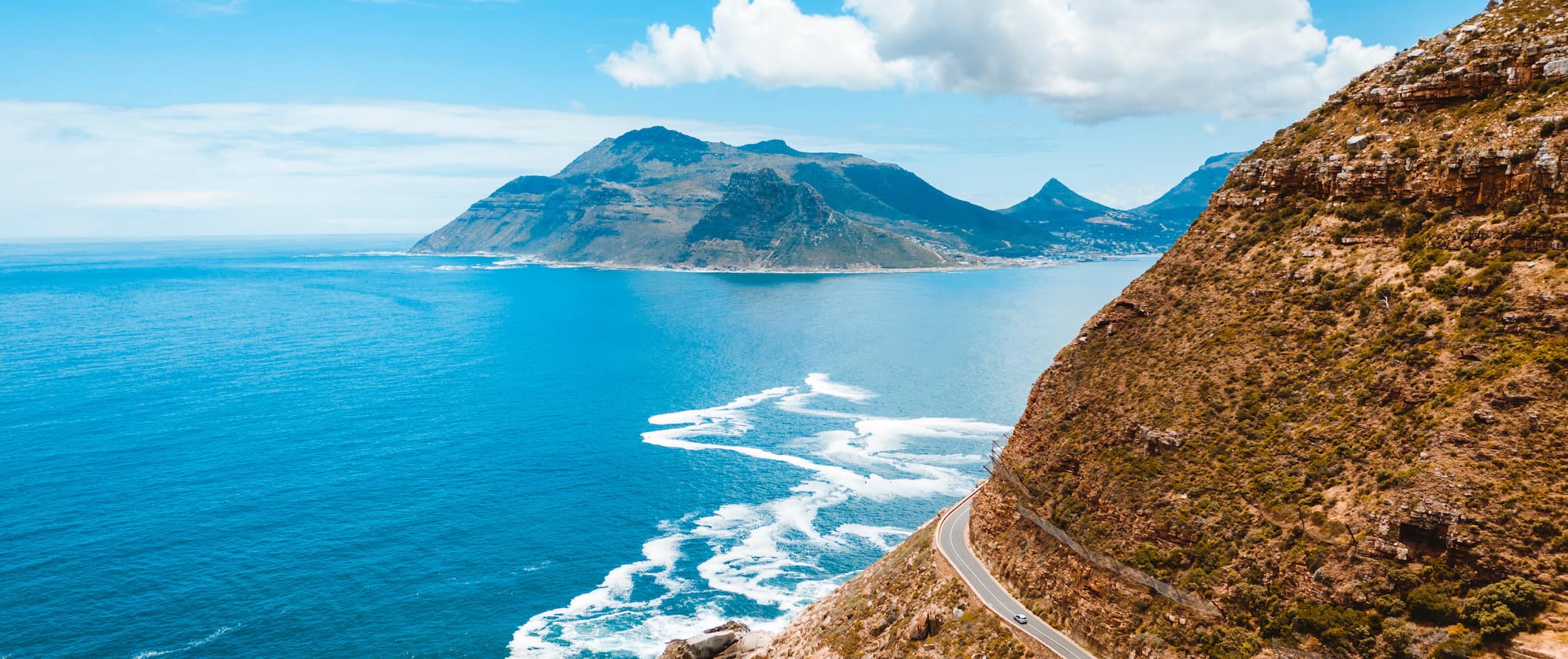
Public Transportation – Public transportation is available in the larger cities, though it is notoriously unreliable (and I wouldn’t recommend taking buses or vans within the cities for safety reasons). I also definitely don’t recommend taking the metro around Pretoria or Johannesburg as they’re not safe.
If you must use public transportation, I only recommend MyCiTi buses in Cape Town, which costs 7-13 ZAR for up to 20 kilometers (12 miles), and the People Mover in Durban (6 ZAR per ride, or 16.50 ZAR for a day pass).
Taxi – Instead of buses, minibusses, or shared taxis, I suggest calling for a private taxi. Rates are generally low and vary between cities. In Cape Town, rates average 12 ZAR per kilometer, often with a minimum charge of 30 ZAR.
Ridesharing – Even safer than taxis is Uber, which is available in Cape Town, Johannesburg, Pretoria, Durban, and Port Elizabeth. This is how I recommend getting around if you’ll have phone service while you’re there.
Bus – Buses are generally the most reliable public transportation between cities, with trips costing anywhere from 250-700 ZAR. The most popular operators are:
- City to City
Since Greyhound pulled out of South Africa in 2021, Intercape is now the main bus provider, with an extensive reach throughout the country. For longer distances, you can choose a more comfortable reclining seat on their overnight Sleepliner bus.
City to City offers a less expensive, no-frills service that goes to many off-the-beaten-track places, including townships and mining towns.
In terms of prices for main routes, the 18-hour bus from Cape Town to Johannesburg costs around 380-600 ZAR, while the 8.5-hour bus from Durban to Pretoria is 225 ZAR.
To find bus routes and prices, use BusBud .
Train – Train rides are less common but more comfortable and safer than buses. Shosholoza Meyl (South African Railways) has long-distance trains that serve Cape Town, Port Elizabeth, Bloemfontein, Durban, East London, Johannesburg, Queenstown, and East London. They’re comfortable and safe, making various stops at smaller towns along the way. Both tourist and economy classes are affordable options.
The overnight journey from Johannesburg to Cape Town costs around 750 ZAR and is a gorgeous ride with a dining car, showers, and accommodation in a two- or four-berth compartment (if available, couples are given coupes and single travelers and groups are put in compartments). If you are traveling alone and you want a coupe to yourself, you’ll need to buy two tickets.
The economy class is fine for shorter daytime trips; however, it doesn’t have sleeping carriages and is not a comfortable or safe option for overnight travel.
Tourist-class sleepers can get fully booked a month or so ahead, especially on popular routes, so plan ahead.
For those who are interested in luxury, the famous Blue Train , which runs from Pretoria to Cape Town, costs 38,000 ZAR for a luxury double berth. The trip lasts a few days and includes wine, cigars, great food, and comfortable compartments. It’s the fanciest way to see the country!
Flying – Depending on the route, domestic fares are generally affordable. It costs 750 ZAR from Cape Town to Johannesburg, 1,000 ZAR from Cape Town to Durban, or 600 ZAR from Pretoria to Durban. The main budget airlines are Kulula and FlySafair.
Car Rental – If you plan on exploring a lot, a small car can be rented for 500 ZAR per day. Check with your hostel to see if they recommend a certain company to book from. Otherwise, Around About Cars, Avis, Budget, Hertz, and other car rental companies exist in South Africa. Make sure you get insurance and keep all the paperwork as accidents are not uncommon.
You can use your driving license from your home country, provided it is in English (or you have a certified translation). However, if you get stopped by the police, they usually ask to see your passport too so keep at least a photocopy in your car.
When to Go to South Africa
The best time to visit South Africa’s parks is from May to September. This is the dry season and wildlife is easier to spot because there’s less vegetation around waterholes, so you can see the animals as they gather to quench their thirst. As this is winter, mornings and nights are chilly.
May and September are wonderful times to visit because it is less cold and, especially in September, the wildlife viewing is excellent. Most days are sunny, there is little to no rain, and there are very few mosquitos.
The winters are mild and produce average highs of approximately 17°C (63°F). This is the low season, so the parks are not crowded (save for Kruger during school holidays).
The wet season (summer) runs from October to April. This is after the first rain, so the scenery turns green and the country looks lush and fresh. This is the best time for bird watching because most of the migratory birds are around. When it does rain, it doesn’t rain for long so you can usually wait it out. Seeing animals is harder since there are more lush landscapes and more places for the animals to be hidden or blocked by trees and bushes.
Parts of South Africa see summer highs get up to 28°C (81°F), with averages closer to 25°C (77°F). Prepare for much larger crowds in the national parks when there are school holidays.
Generally speaking, temperatures are more consistent throughout the year at the coast, while the arid/mountainous areas of the interior see the greatest fluctuation in seasonal temperatures. Even in the Kalahari Desert, nighttime temperatures can drop below freezing. It’s a good idea to pack for all occasions, as often people joke about how you can experience all four seasons in one day in South Africa.
How to Stay Safe in South Africa
South Africa requires extra vigilance because there’s a lot of petty crime here. While you’re unlikely to ever be in any real physical danger, petty crime and harassment are rampant. Avoid carrying expensive gear and lots of money, especially late at night. Always keep your valuables secure and never dress flashy. Do your best to fit in at all times so you don’t stand out as a target.
Don’t walk around alone late at night. If you have a rental car, keep your doors locked at all times to prevent theft and carjacking. Never leave anything in your vehicle overnight as break-ins can occur.
Solo female travelers will want to be cautious here. Avoid traveling alone when you can and don’t travel alone at night. Always keep an eye on your drink when out at the bar and be extra careful in crowded areas as sexual harassment isn’t uncommon.
Crime rates are higher in the townships (settlements established during apartheid for forced racial segregation), but that doesn’t mean avoid them altogether. Just visit during daylight hours, especially with a local guide.
Be extra careful in Johannesburg, where crime rates are the highest in the country (although again, it’s mostly petty crime). If you’re driving, pay attention to what’s happening behind your car as well as in the front. If someone exits a car and starts approaching you, move on quickly.
If you’re going to visit Hillbrow, Berea, Joubert Park and Yeoville make sure you do it with a local as these are riskier neighborhoods to explore on your own.
If you’re worried about getting ripped off, you can read about common travel scams to avoid here.
If you do experience an emergency, dial 10 111 for assistance.
Always trust your gut instinct and make copies of your personal documents, including your passport and ID. Forward your itinerary along to loved ones so they’ll know where you are.
For more in-depth coverage of how to stay safe in South Africa, check out this post we wrote that answers some frequently asked questions and concerns.
The most important piece of advice I can offer is to purchase good travel insurance. Travel insurance will protect you against illness, injury, theft, and cancellations. It’s comprehensive protection in case anything goes wrong. I never go on a trip without it as I’ve had to use it many times in the past. You can use the widget below to find the policy right for you:
South Africa Travel Guide: The Best Booking Resources
These are my favorite companies to use when I travel. They consistently have the best deals, offer world-class customer service and great value, and overall, are better than their competitors. They are the companies I use the most and are always the starting point in my search for travel deals.
- Skyscanner – Skyscanner is my favorite flight search engine. They search small websites and budget airlines that larger search sites tend to miss. They are hands down the number one place to start.
- Hostelworld – This is the best hostel accommodation site out there with the largest inventory, best search interface, and widest availability.
- Booking.com – The best all around booking site that constantly provides the cheapest and lowest rates. They have the widest selection of budget accommodation. In all my tests, they’ve always had the cheapest rates out of all the booking websites.
- Get Your Guide – Get Your Guide is a huge online marketplace for tours and excursions. They have tons of tour options available in cities all around the world, including everything from cooking classes, walking tours, street art lessons, and more!
- SafetyWing – Safety Wing offers convenient and affordable plans tailored to digital nomads and long-term travelers. They have cheap monthly plans, great customer service, and an easy-to-use claims process that makes it perfect for those on the road.
- LifeStraw – My go-to company for reusable water bottles with built-in filters so you can ensure your drinking water is always clean and safe.
- Unbound Merino – They make lightweight, durable, easy-to-clean travel clothing.
- Top Travel Credit Cards – Points are the best way to cut down travel expenses. Here’s my favorite point earning credit cards so you can get free travel!
South Africa Travel Guide: Related Articles
Want more info? Check out all the articles I’ve written on backpacking/traveling South Africa and continue planning your trip:
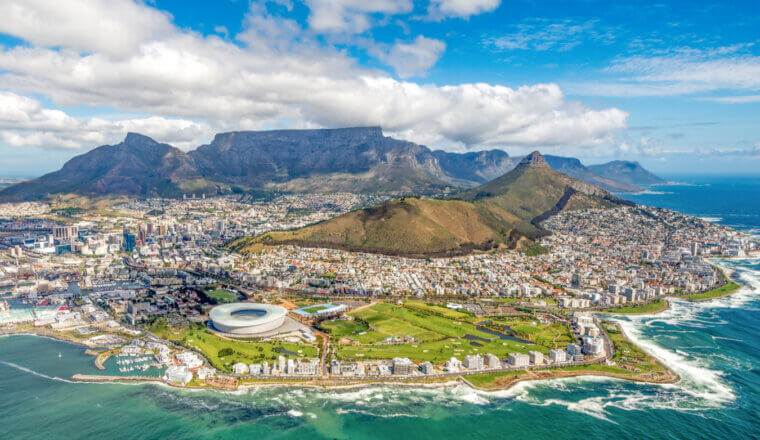
How to Save Money When You Visit Cape Town
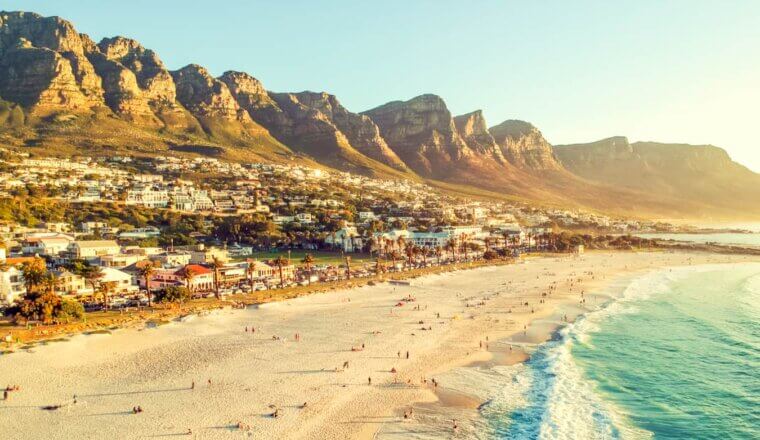
The 4 Best Hostels in Cape Town
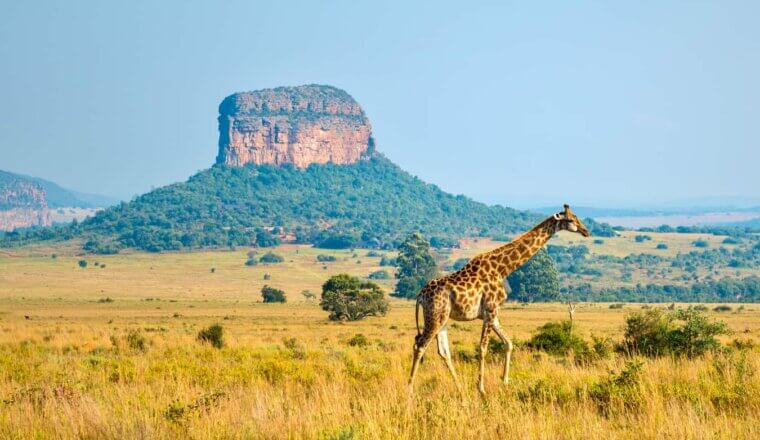
The 12 Best Things to Do in South Africa
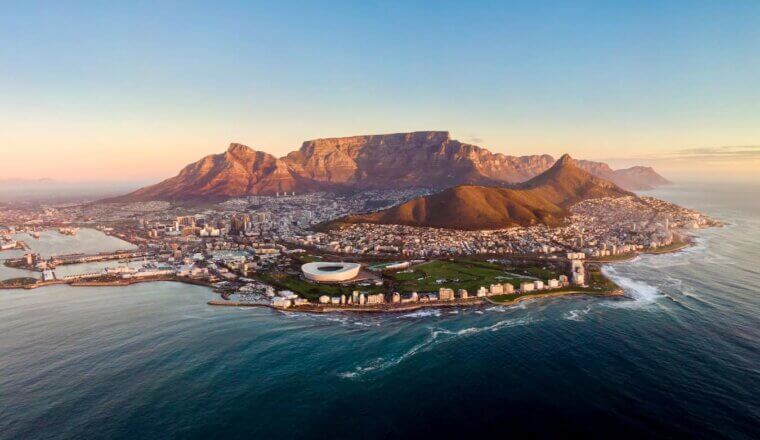
Cape Town Itinerary: What to See and Do in 4 (or More) Days
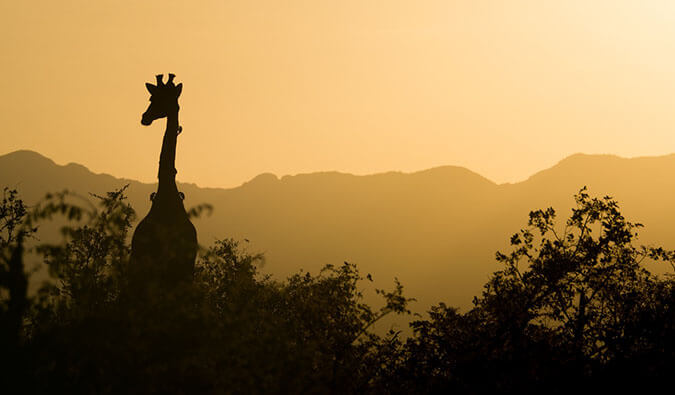
Six of the Greatest Safaris in Africa
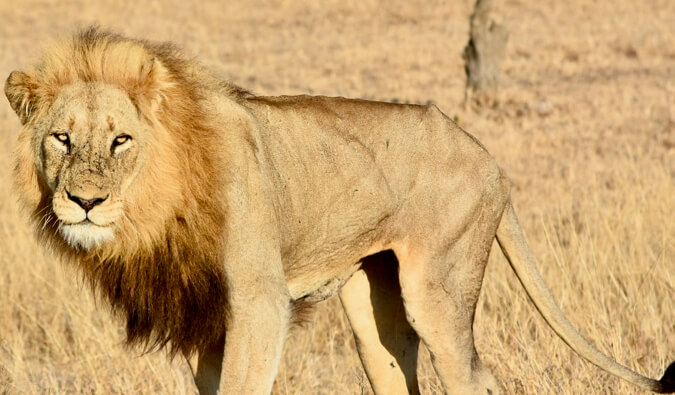
24 Photos from My Safari to Kruger National Park
Get your free travel starter kit.
Enter your email and get planning cheatsheets including a step by step checklist, packing list, tips cheat sheet, and more so you can plan like a pro!

- Where To Stay
- Transportation
- Booking Resources
- Related Blogs
Cookie policy
Wanderlust Movement | A South Africa Travel Blog
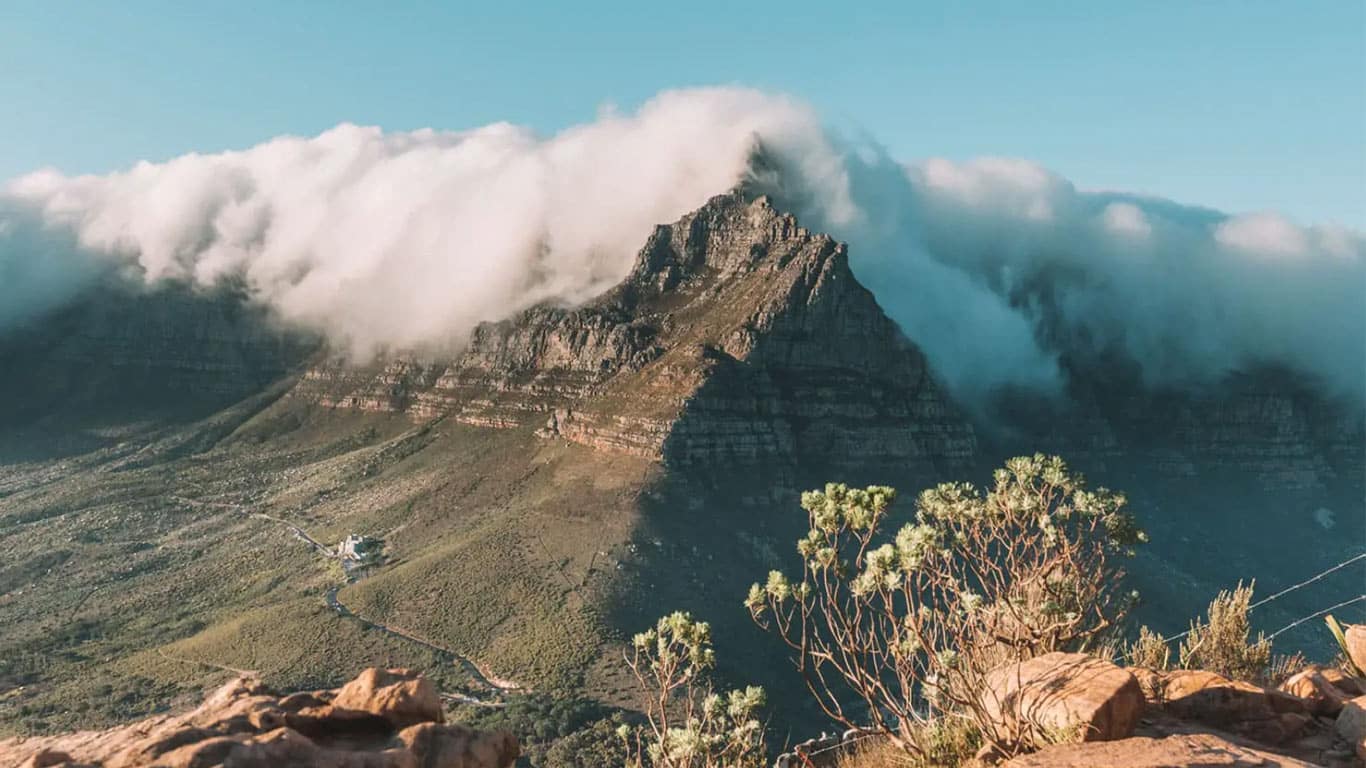
South Africa Travel Guide
Travel to South Africa, and two things will happen:
1.You’ll realise you ran out of time.
2.You’ll end up booking another trip with a much longer itinerary.
With a ridiculous amount of incredible things to do in South Africa, it’s impossible to fit all of the highlights into a single trip. After all, how do you choose between Big 5 game drives in the Kruger National Park or tracking down the famous black-maned lions in the Kgalagadi?
It’s a conundrum, and I’m here to help you plan your first (of many) trips to South Africa.
Destinations
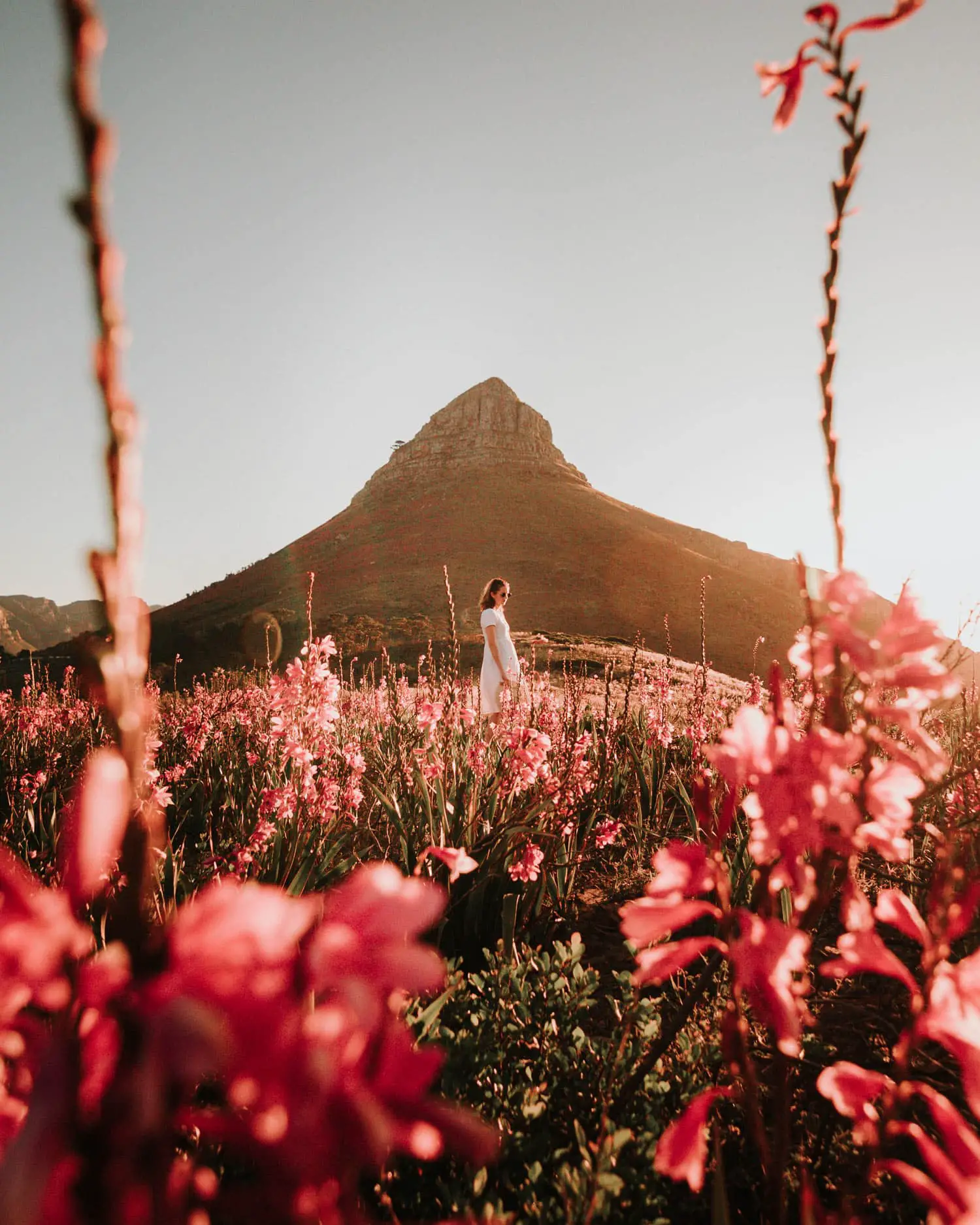
Johannesburg
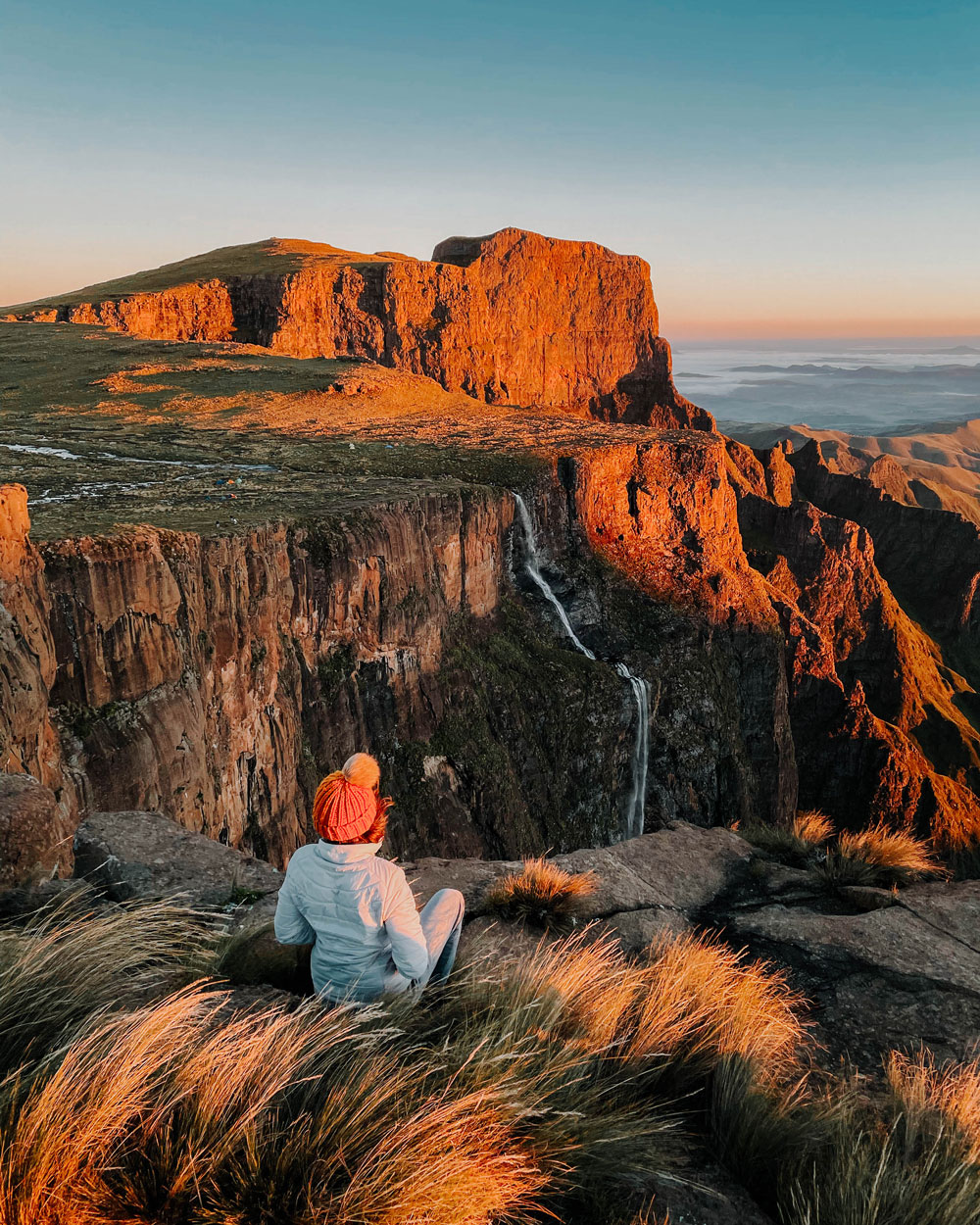
Drakensberg
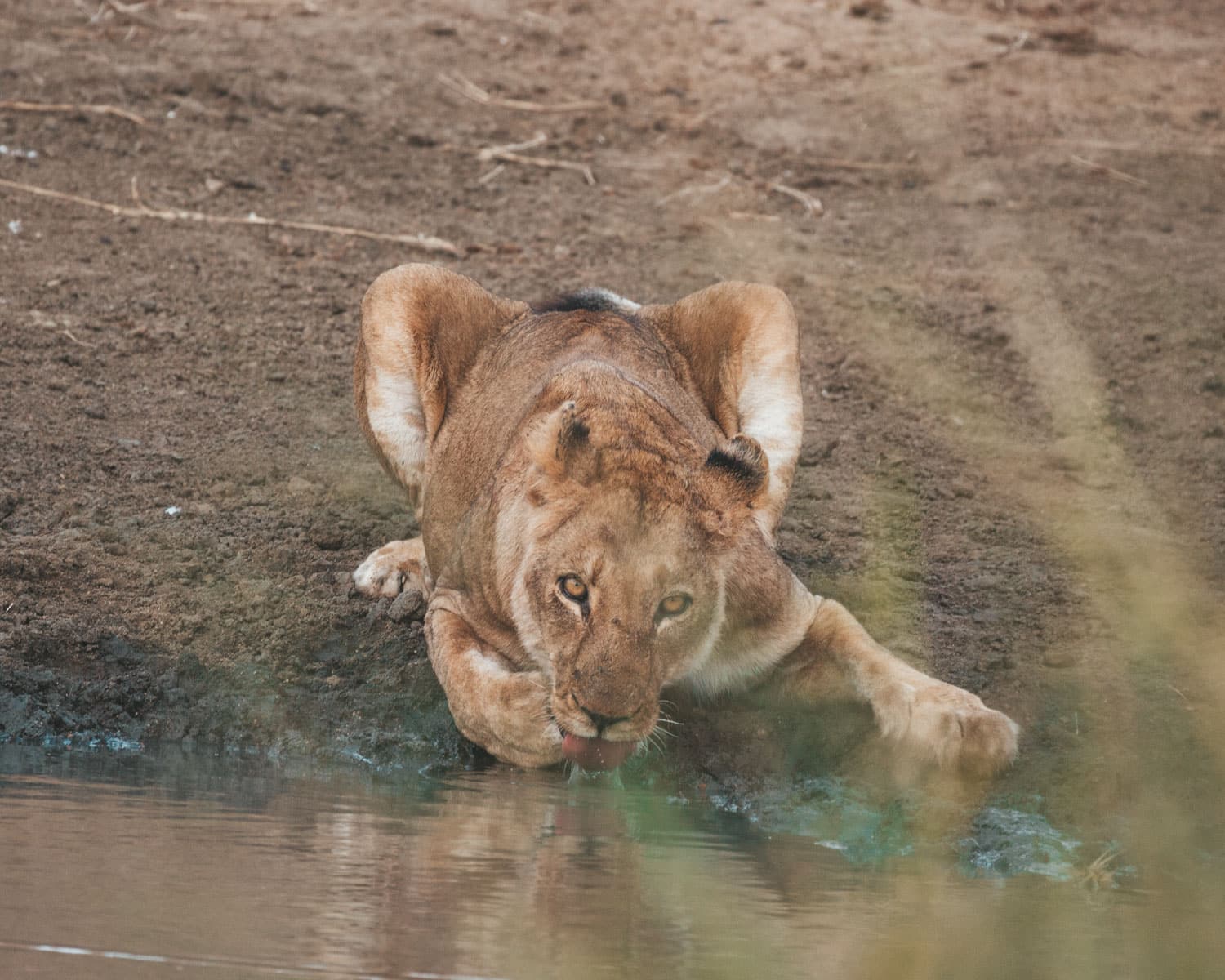
Kruger National Park
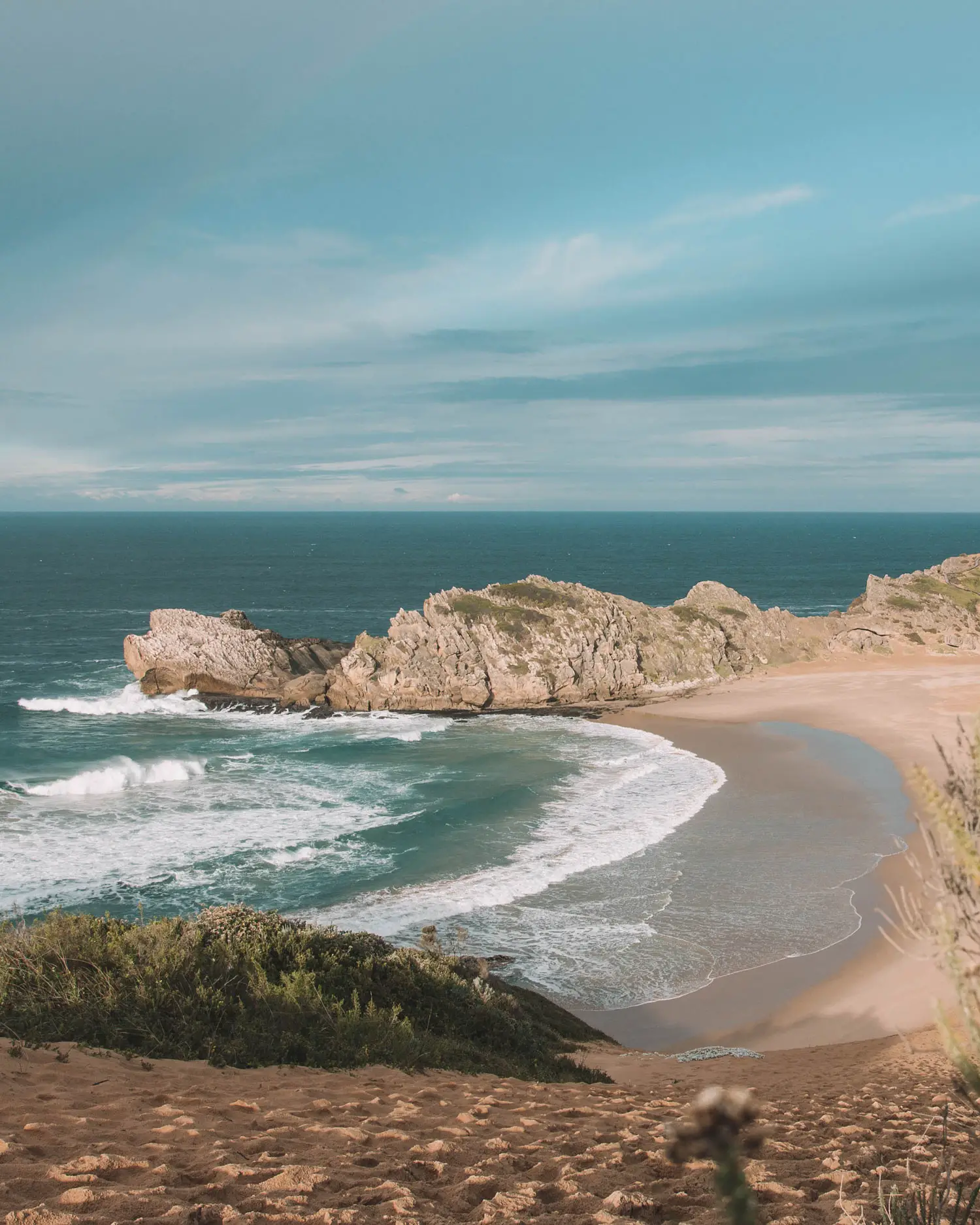
Garden Route
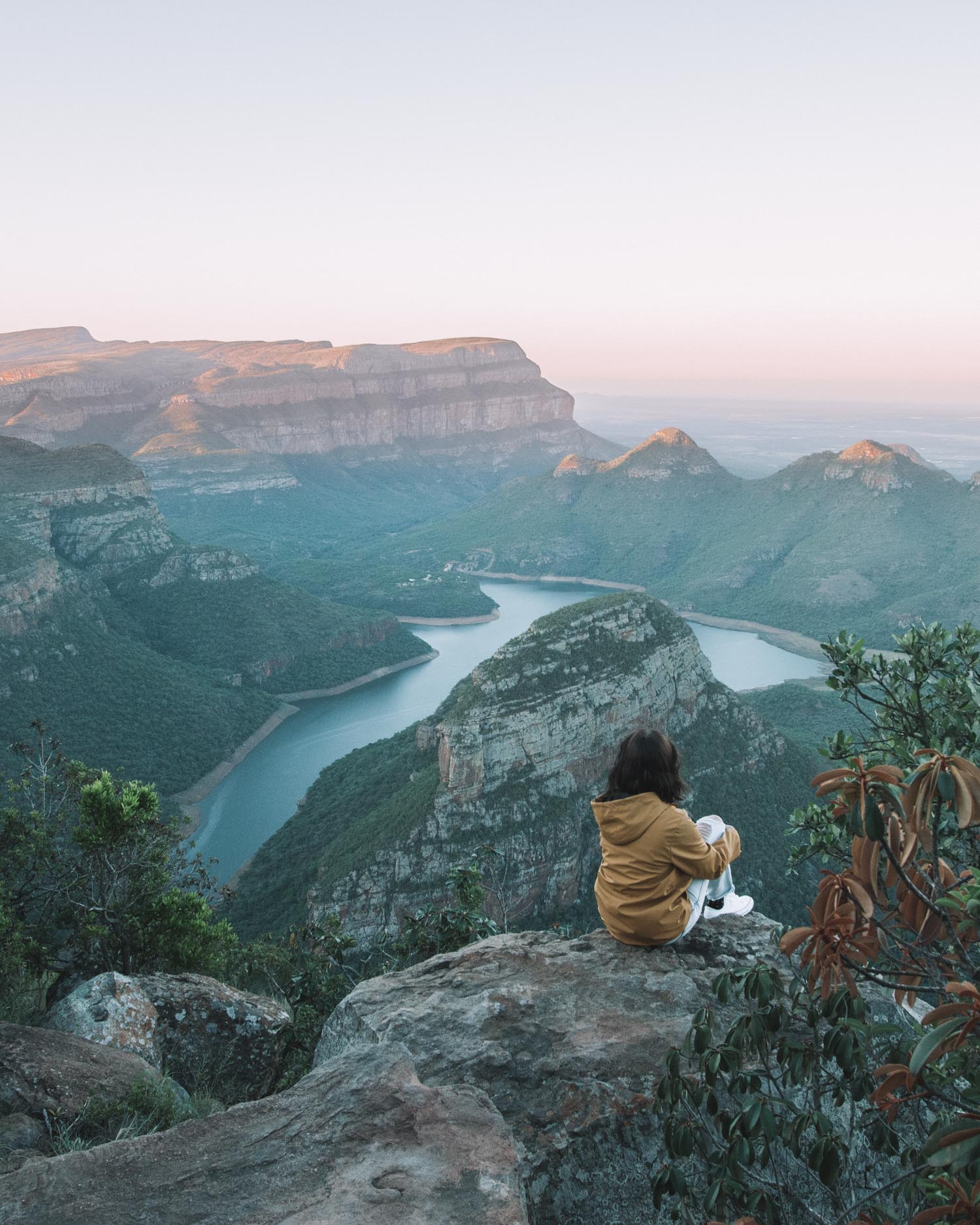
Plan Your Trip

What to See
Everything you need to know for your first trip to South Africa.

Getting Around
Tips for exploring South Africa by air, rail, bus, or car and how to rent a vehicle.

Best Time to Visit
Find out how the season will affect your budget and itinerary.

Things to Know

Money & Costs
Money-saving tips to help you travel to South Africa on a budget.

Best Road Trips
South Africa is the ultimate road trip destination. Here are my top picks.
South Africa TRAVEL GUIDEs
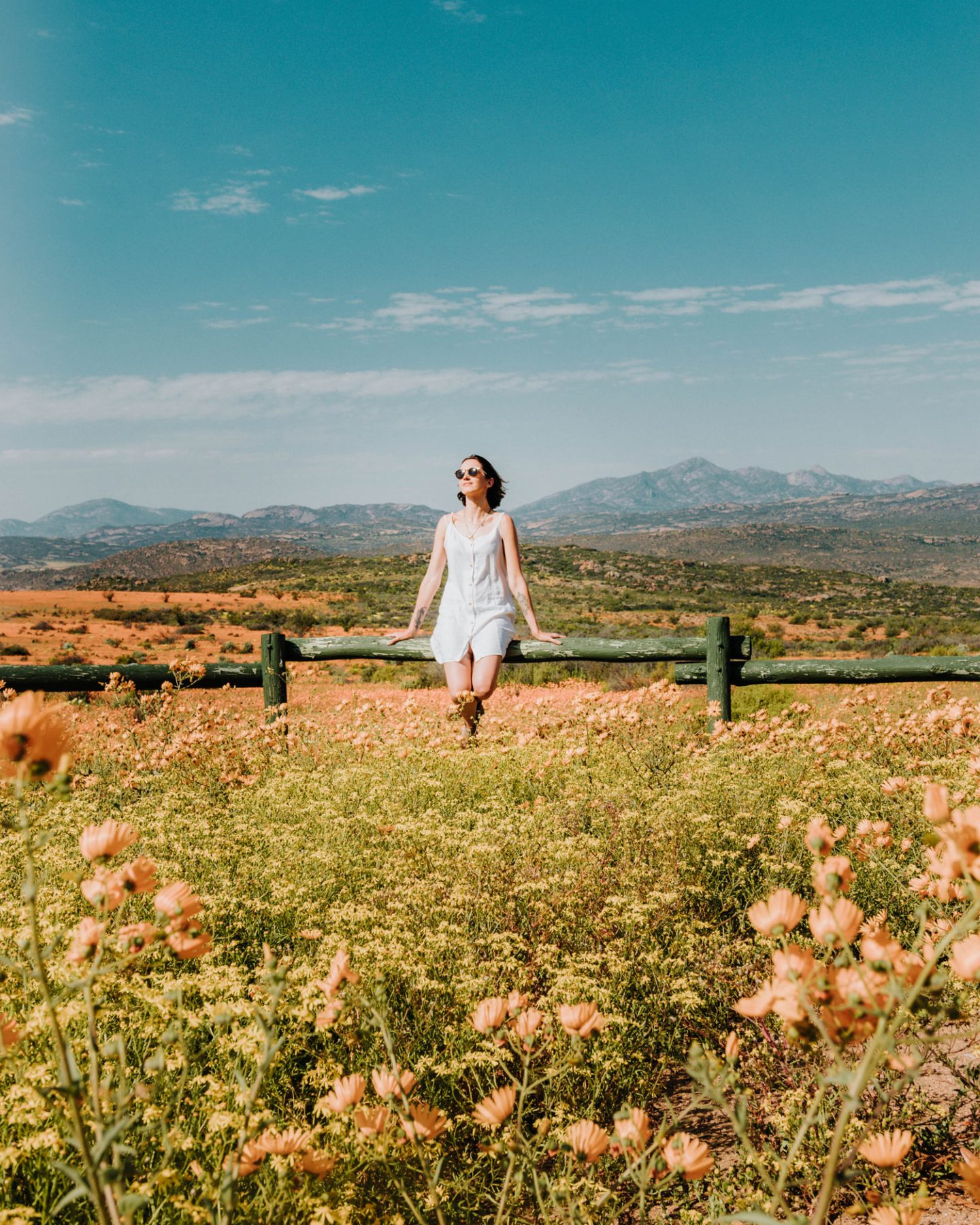
The Ultimate South Africa Bucket List
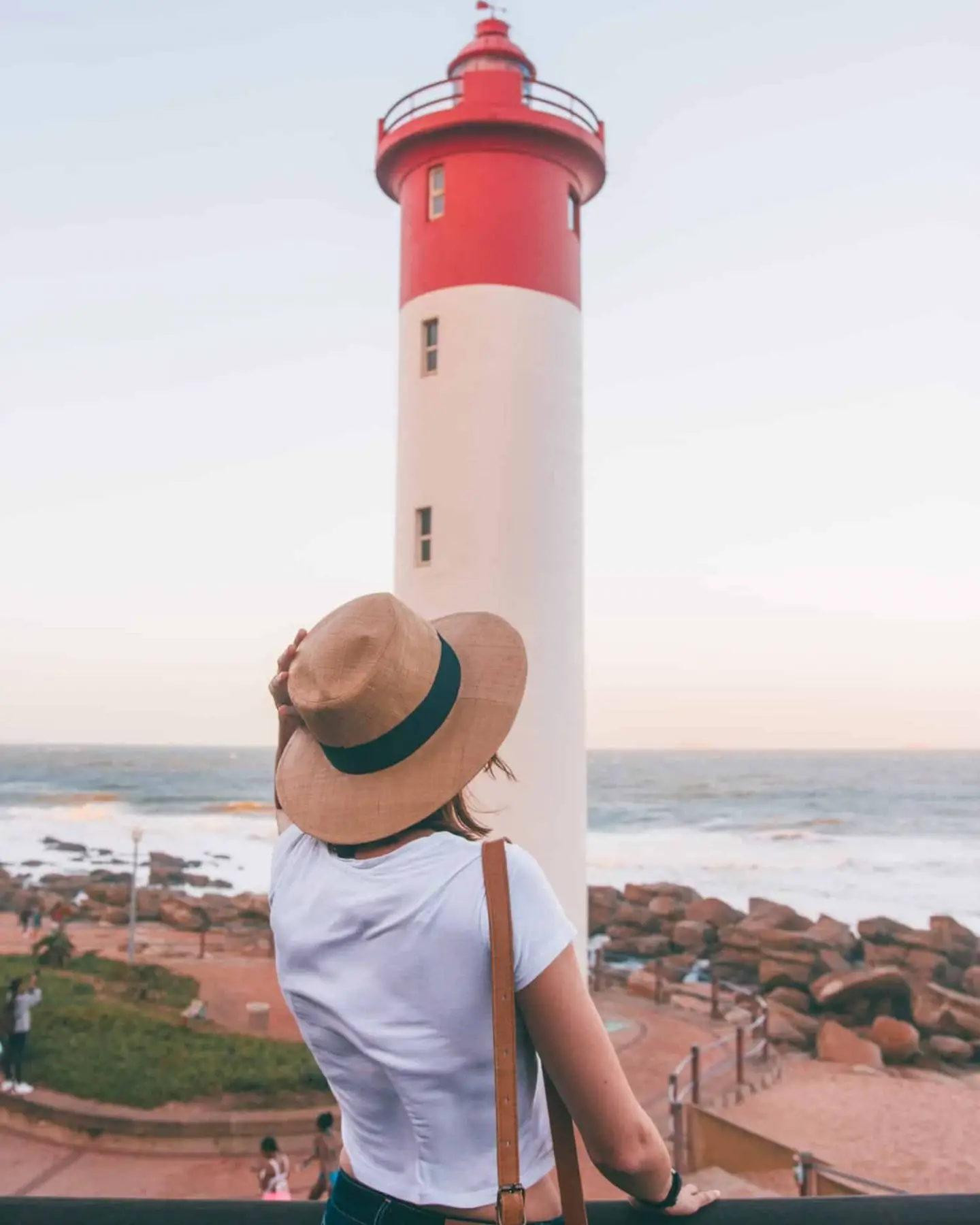
24+ Things to Do in Kwa-Zulu Natal
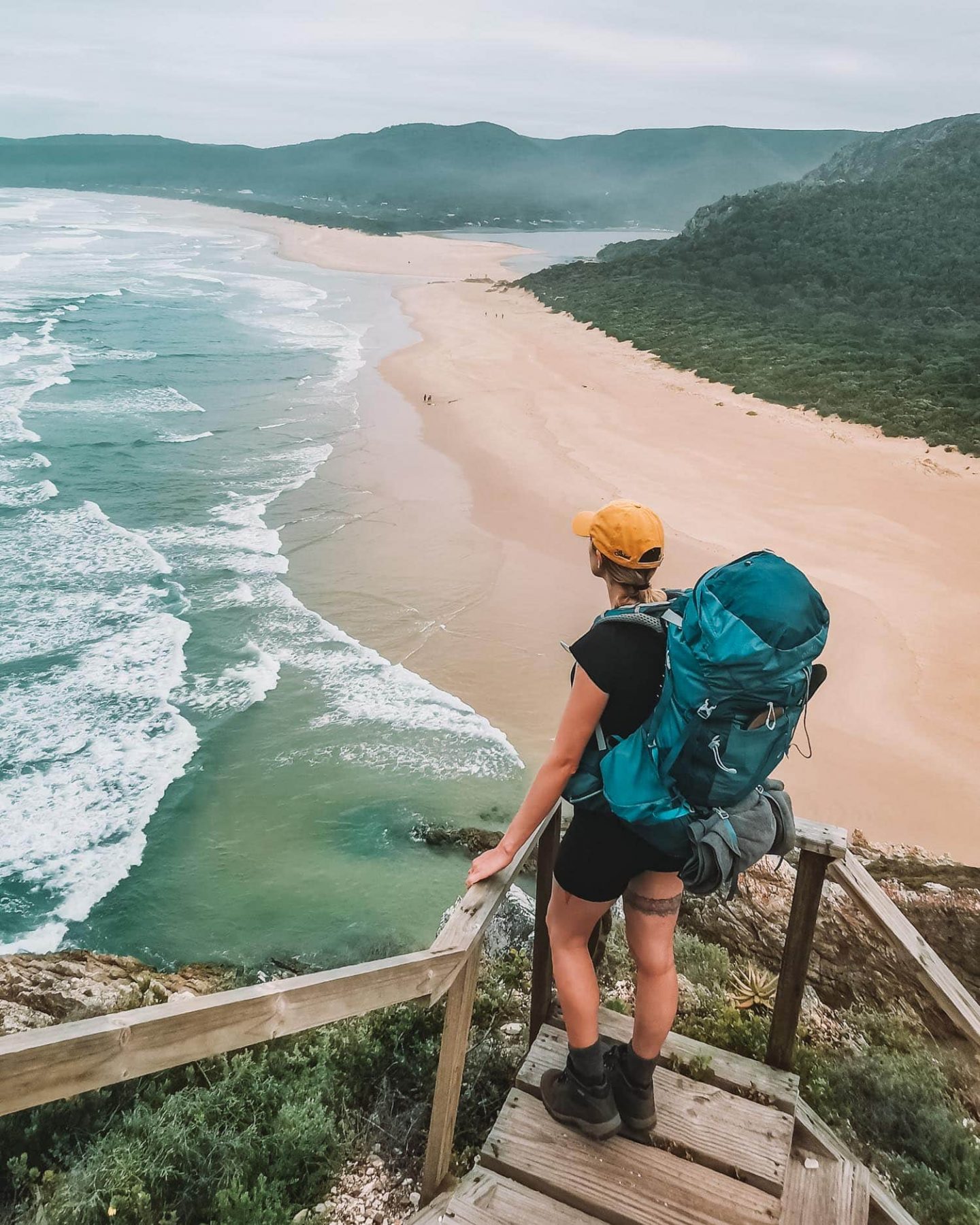
The Best Hikes in South Africa
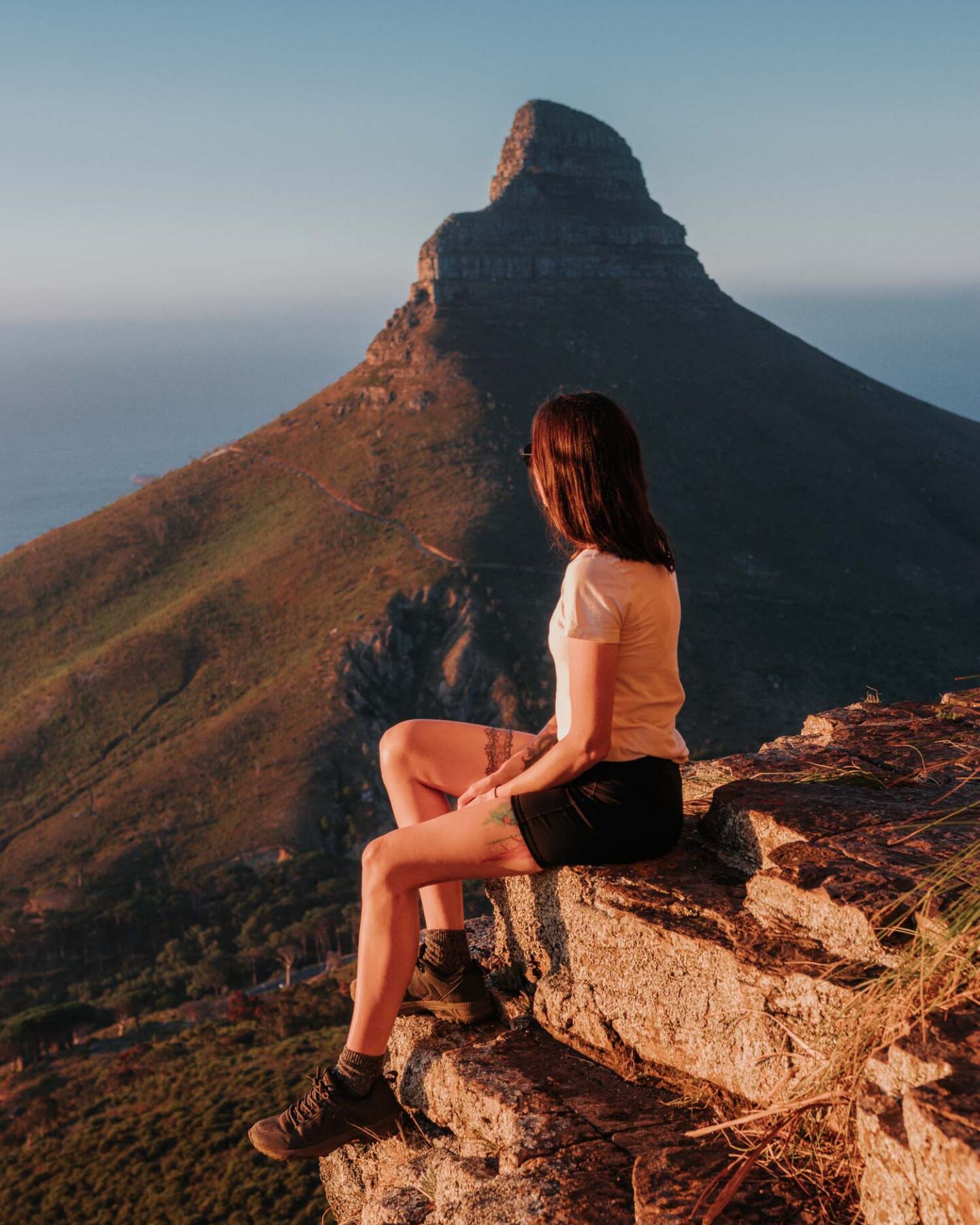
The Perfect 1-Week Cape Town Itinerary
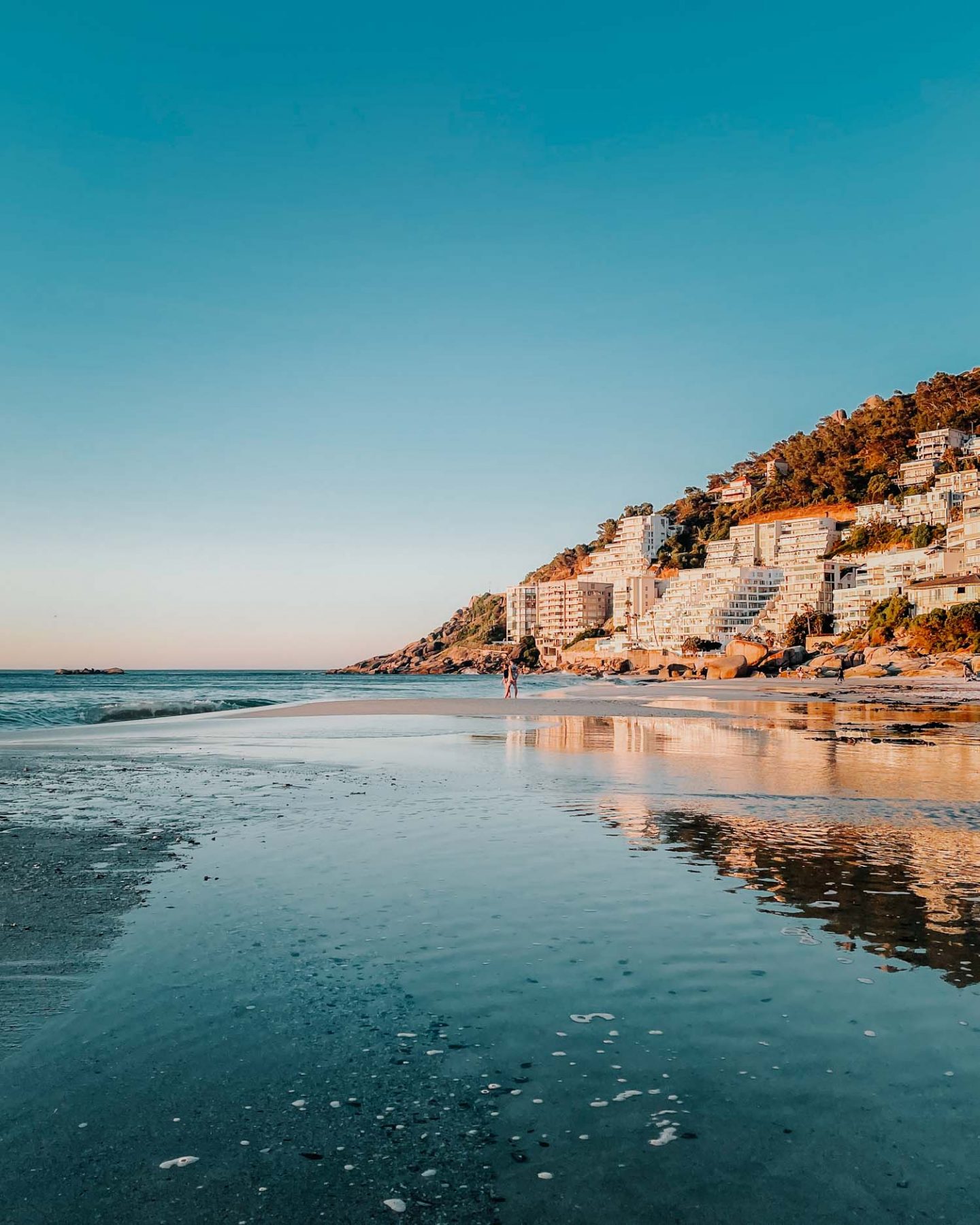
15+ Best Beaches in South Africa
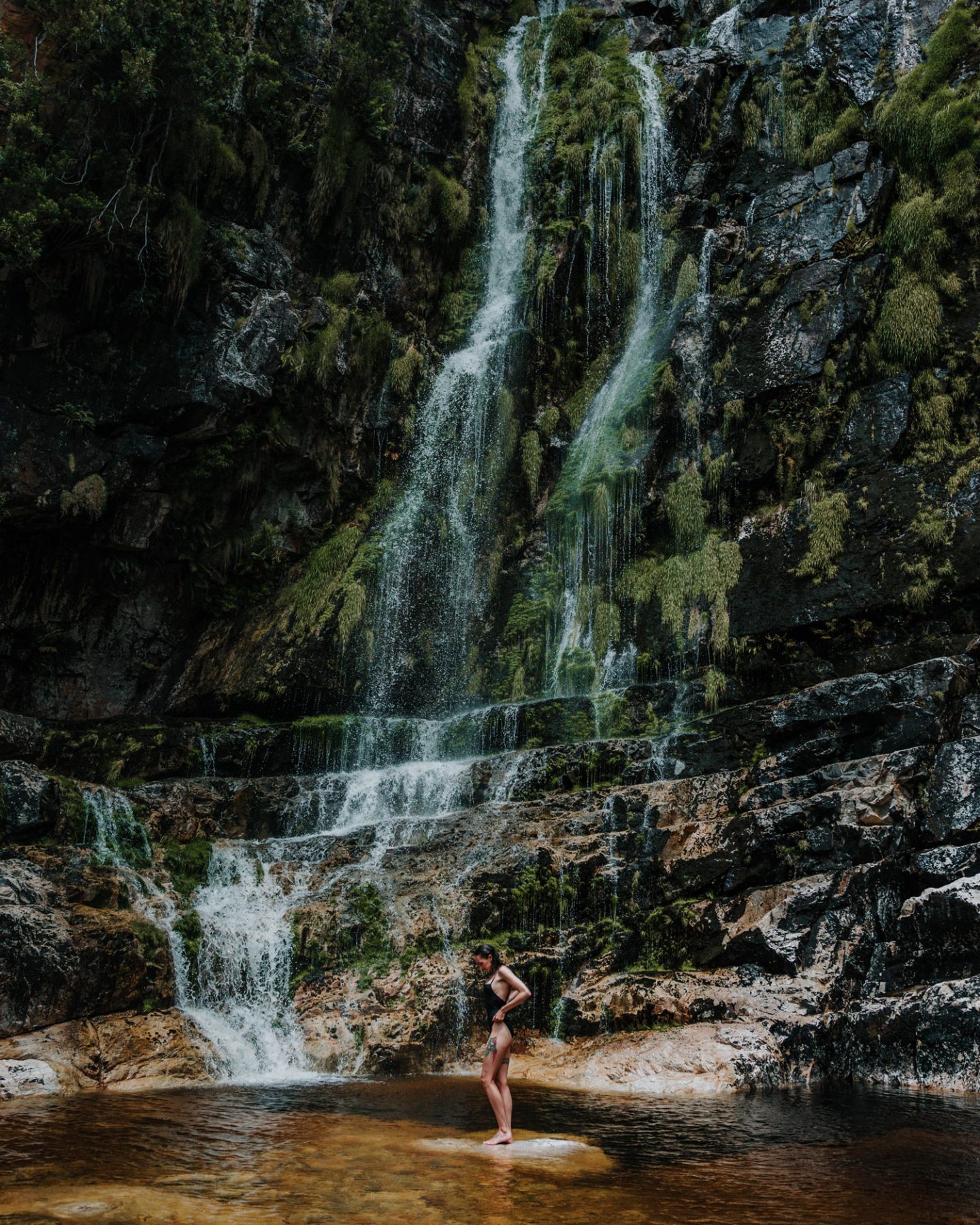
The Most Incredible Waterfalls in South Africa
Good to know.

There are 11 official languages in South Africa. The most widely spoken languages are Zulu, Xhosa, English, and Afrikaans.

LGBTQ+ Safety
South Africa is one of the safest LQBTQ+ countries in Africa. It legalised same-sex marriage in 2006, and Cape Town has a thriving drag scene.

Plug Points
The plug points in South Africa type D, M and N. The standard voltage is 230 V, and the standard frequency is 50Hz.
Where to Stay
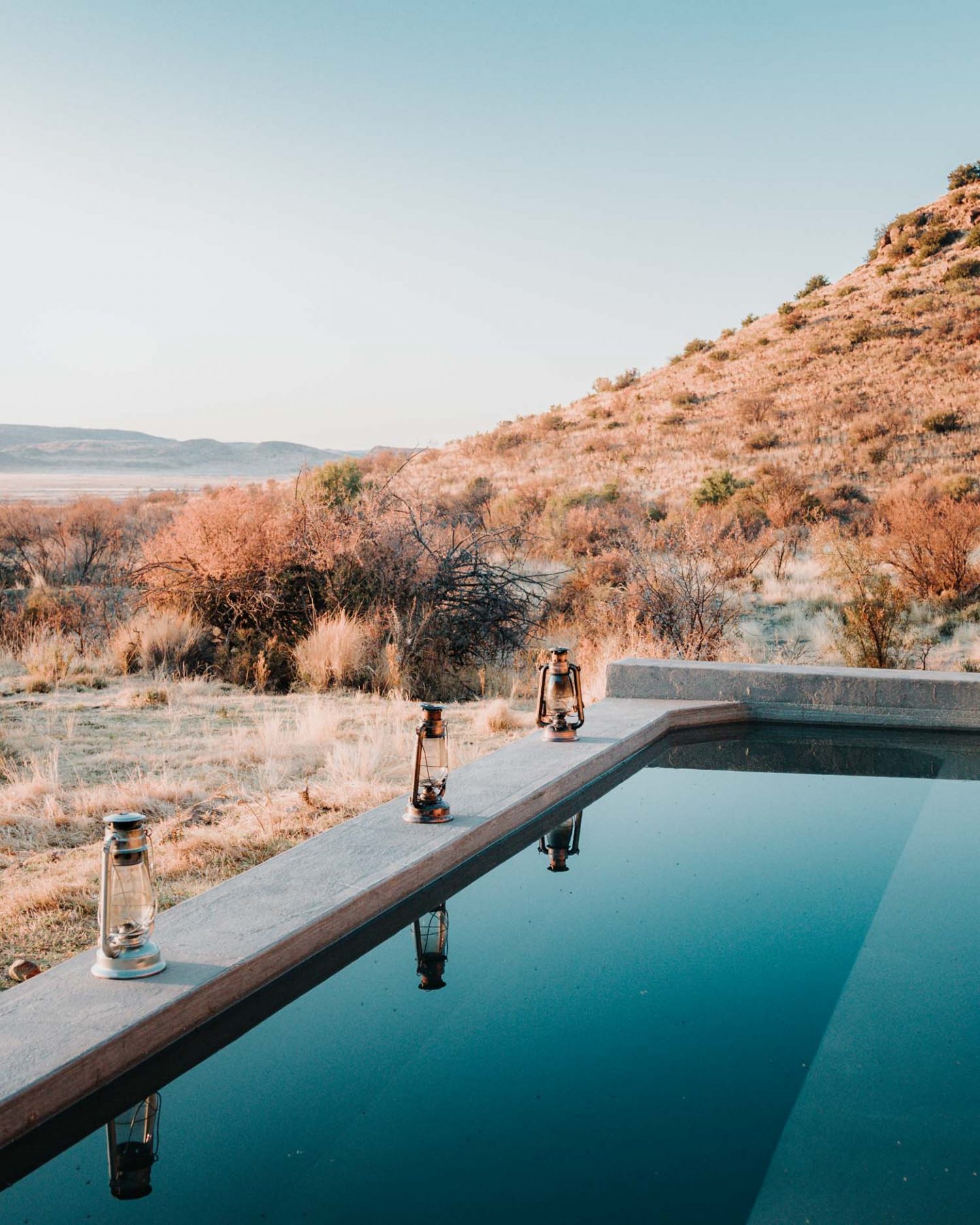
The Best Airbnbs in South Africa
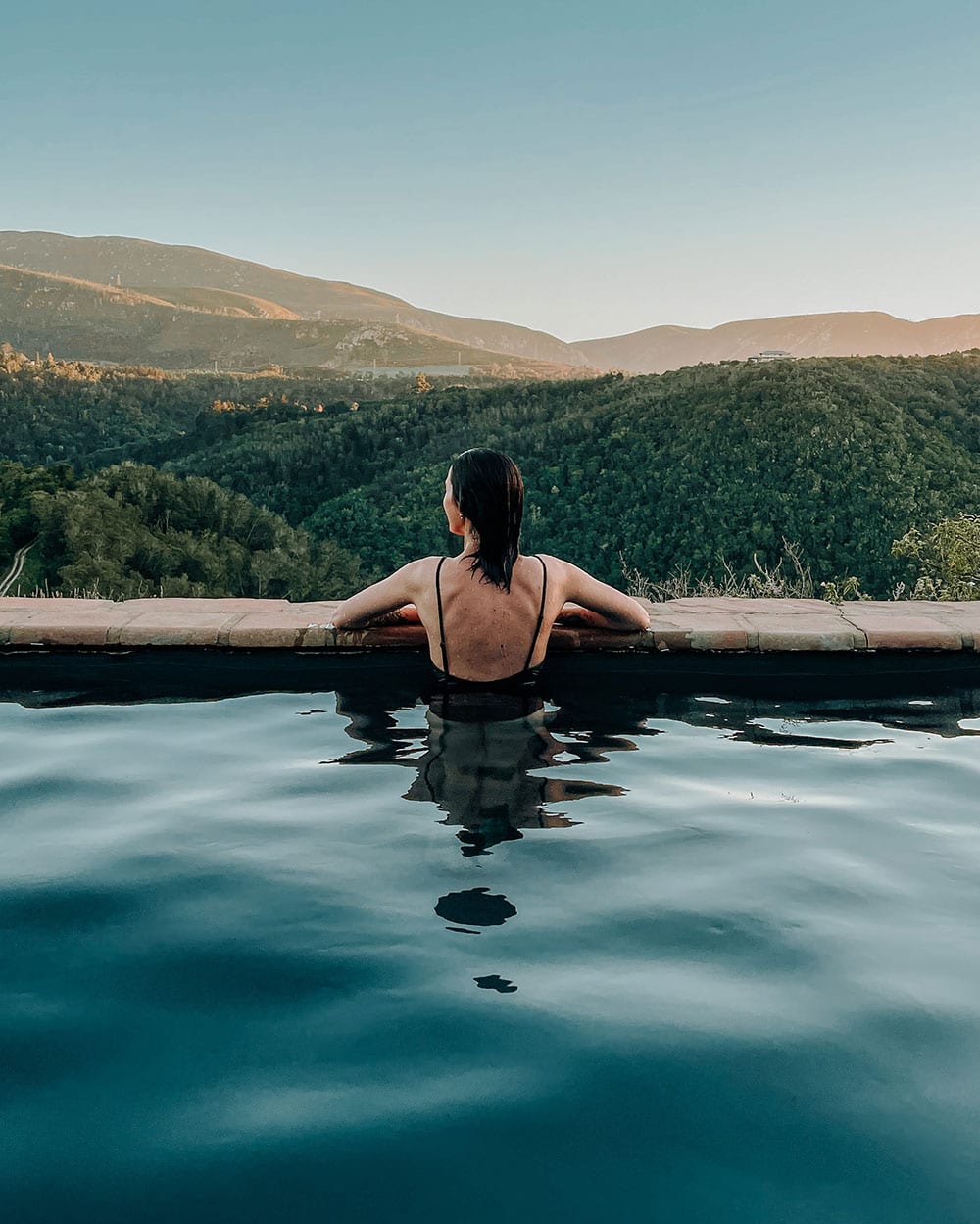
The Most Romantic Getaways in South Africa
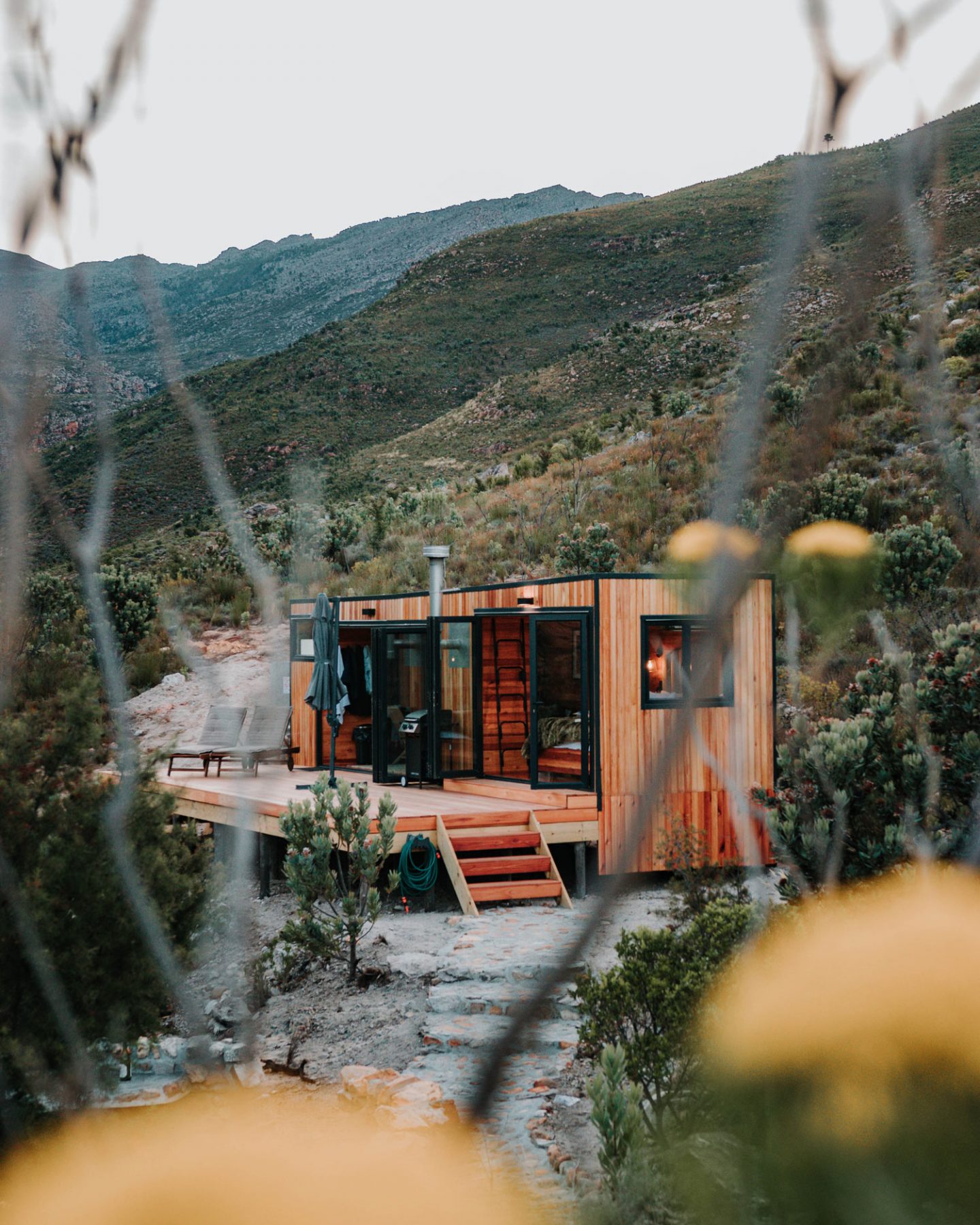
The Top Secluded Cabins in Cape Town
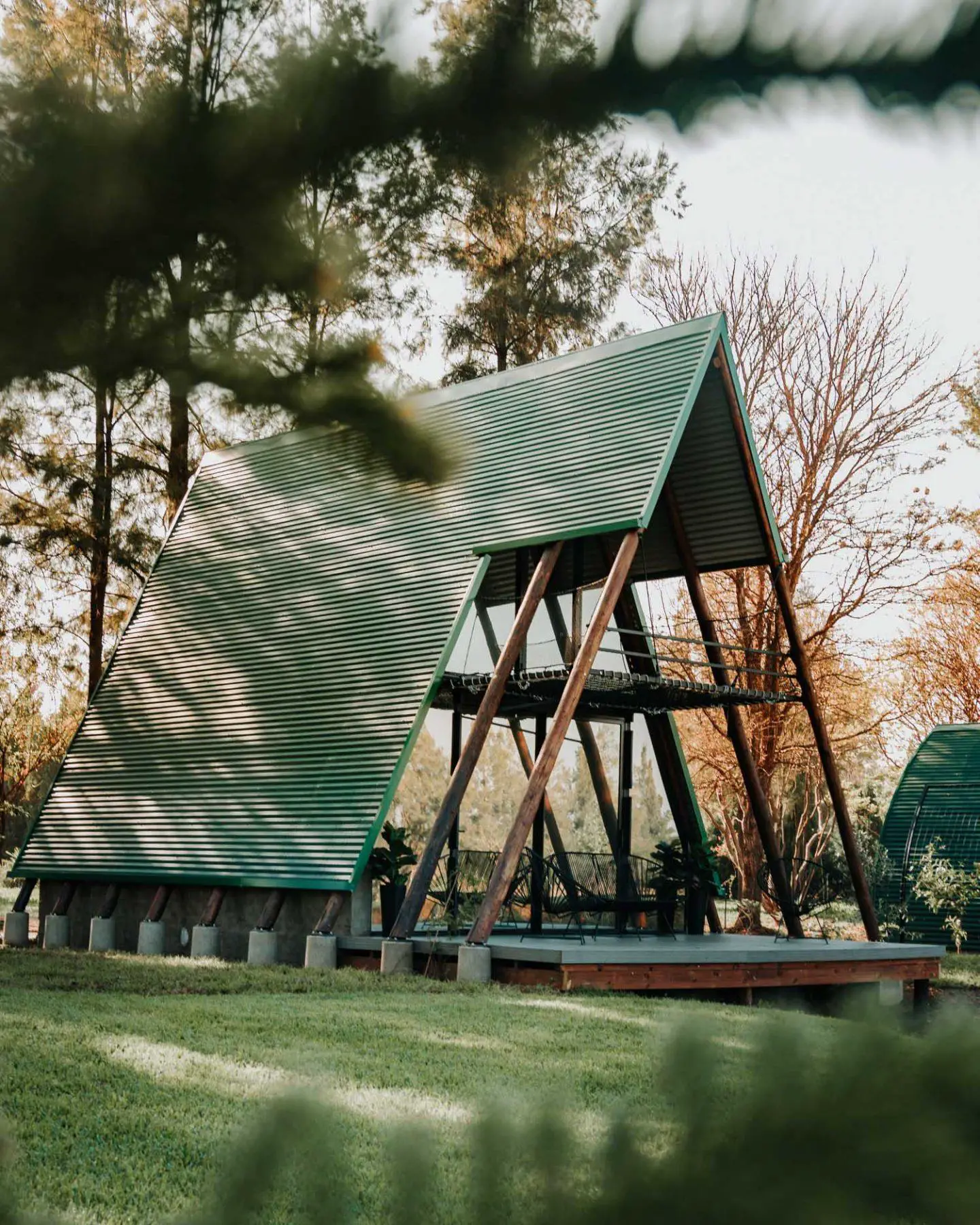
The Most Unique Places to Stay in Johannesburg
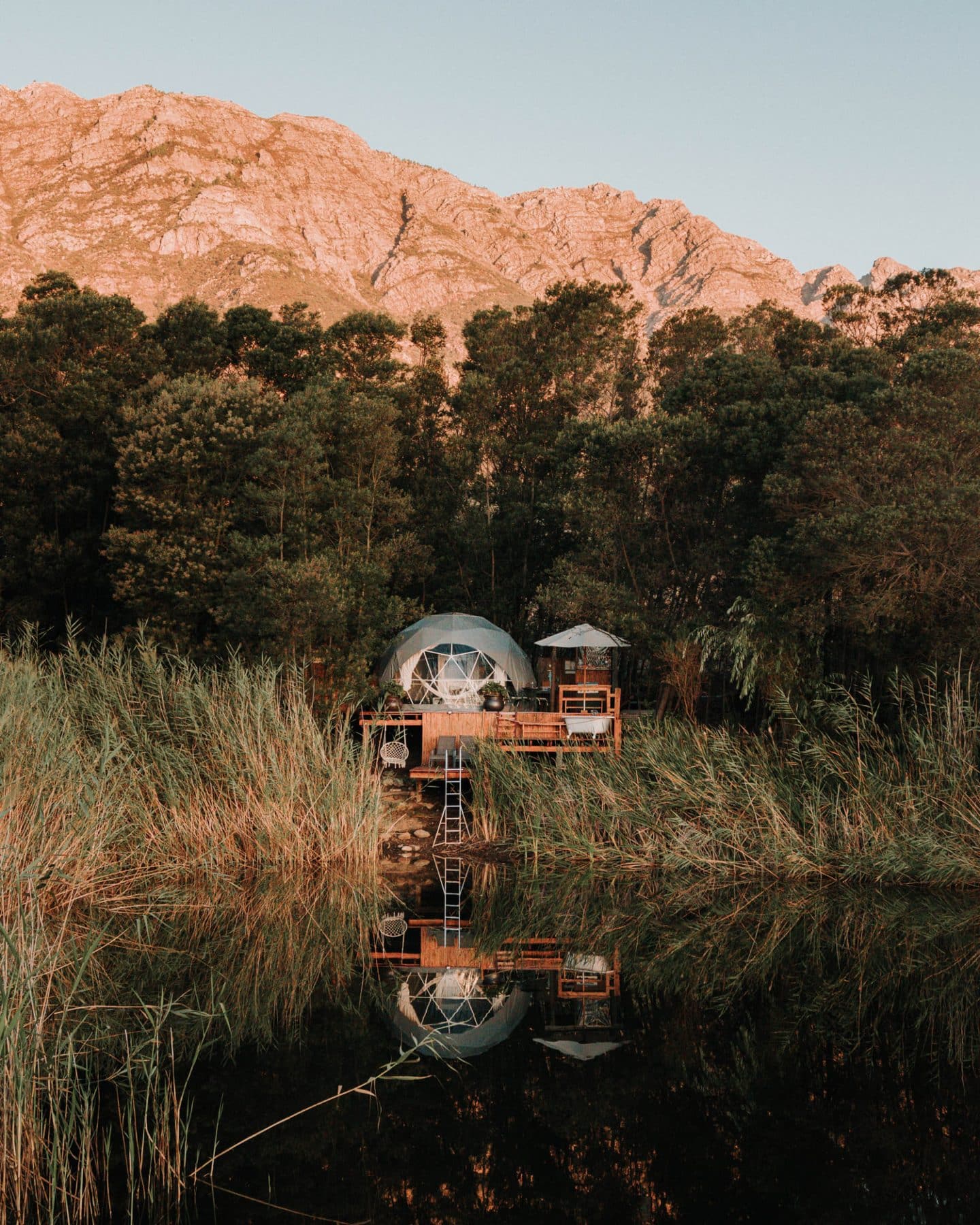
15 Incredible Cabins in South Africa (For Every Budget)
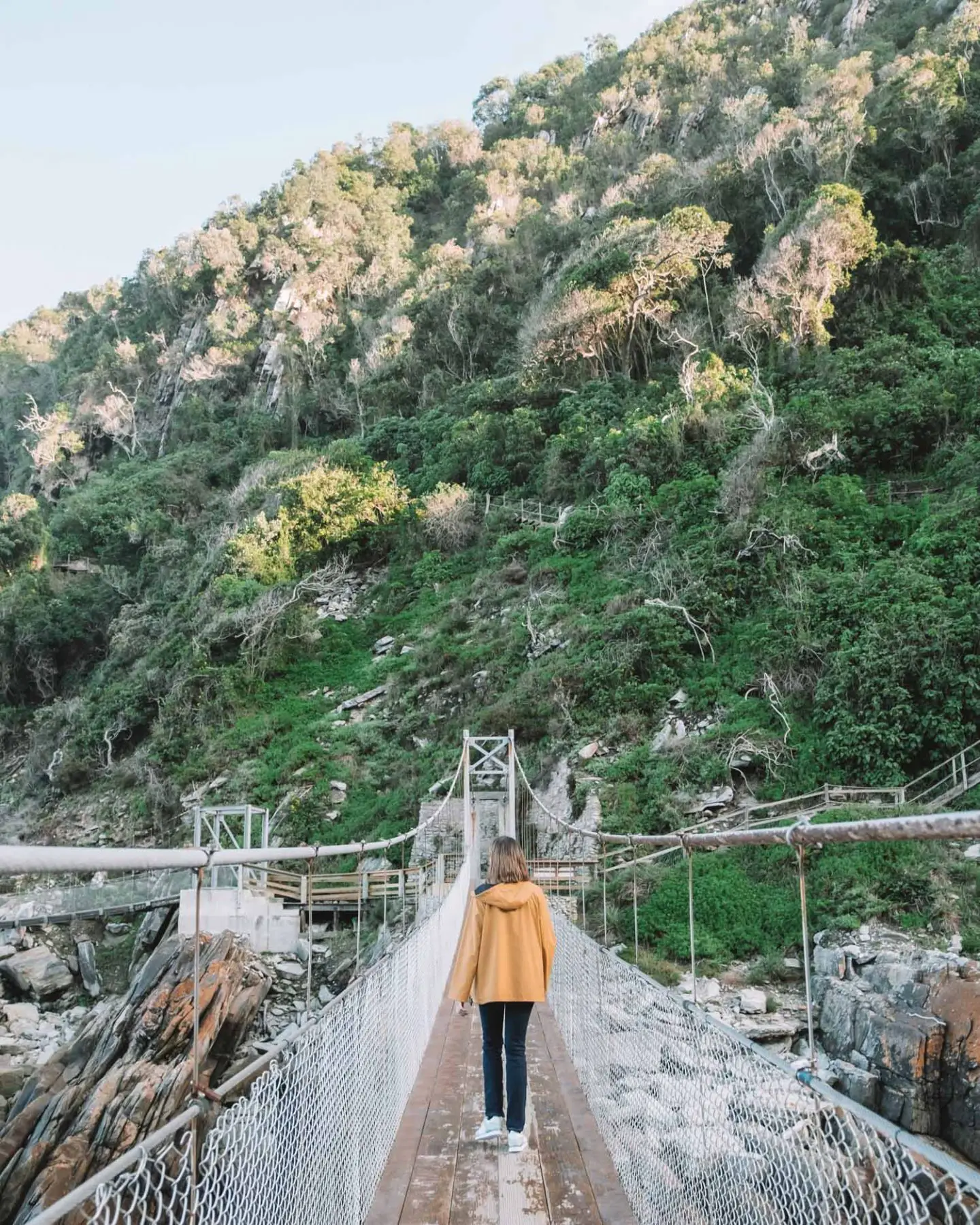
10+ Best Backpackers in South Africa
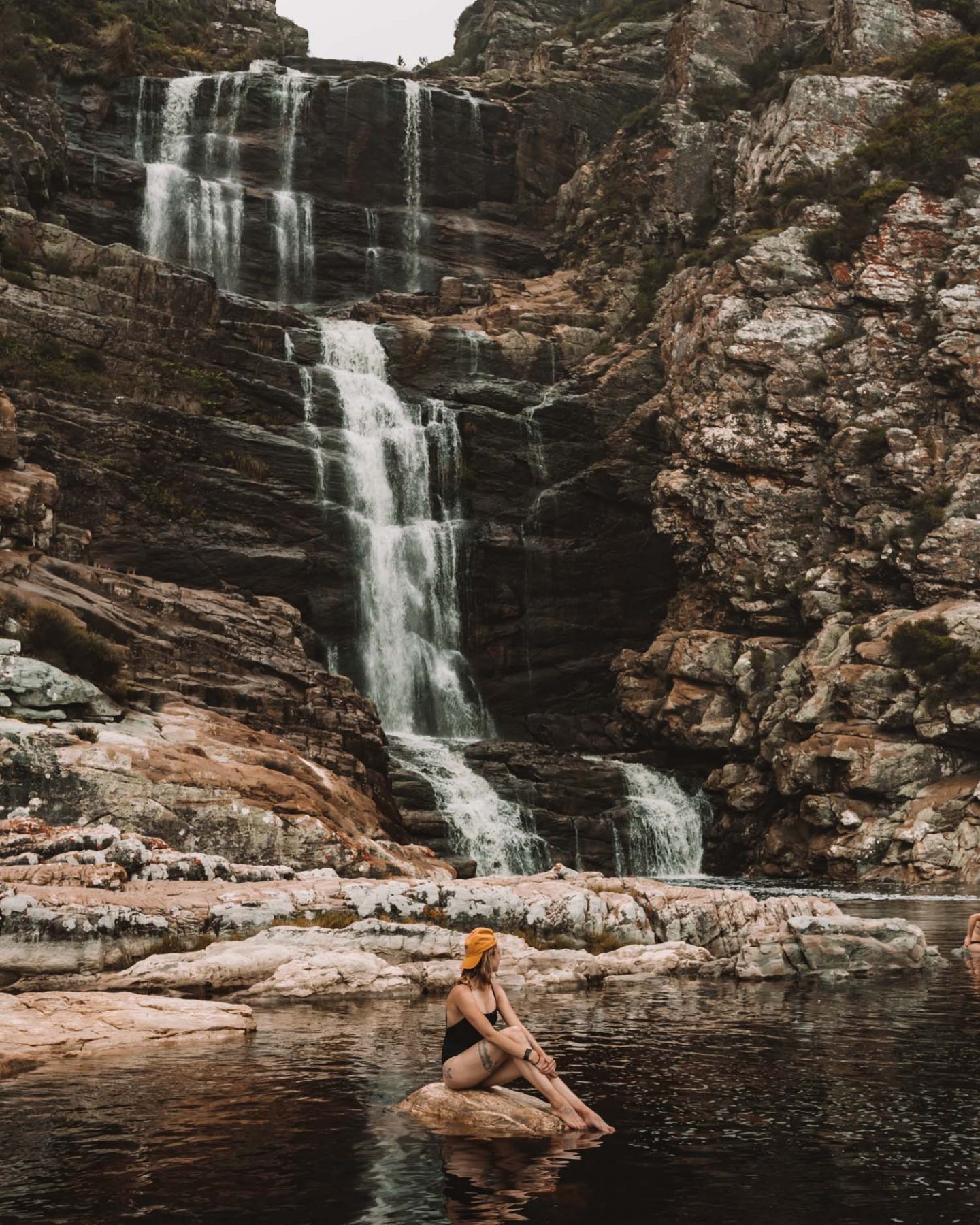
The Top Campsites in South Africa
Latest south africa travel articles.
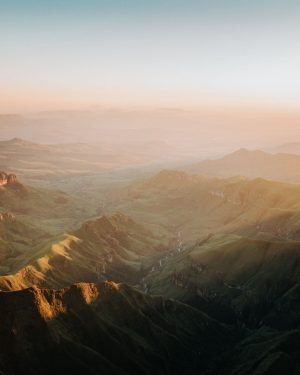
Travel Guide South Africa
Book your individual trip , stress-free with local travel experts
Select Month
- roughguides.com
- South Africa
- Travel guide
- Itineraries
- Local Experts
- Travel Advice
- Accommodation
Plan your tailor-made trip with a local expert
Book securely with money-back guarantee
Travel stress-free with local assistance and 24/7 support
Julian De Silva
The team put together an excellent… The team put together an excellent itinerary and trip for us to South Africa. It was exceptionally good from drivers, ...
South Africa is a large, diverse and incredibly beautiful country. It varies from the picturesque Garden Route towns of the Western Cape to the raw subtropical coast of northern KwaZulu-Natal. The vast Karoo semi-desert stretches across its centre, while one of Africa’s premier safari destinations, Kruger National Park, sprawls along the northeast border. The big cities attract immigrants from across the continent, making them great, bubbling cultural crucibles. Read our South Africa guide for everything you need to know before you go.
Where to go in South Africa
Best time to go to south africa.
- How to get to South Africa
How to get around South Africa
Itineraries for south africa, accommodation in south africa, food and drink in south africa, activities in south africa, national parks and reserves in south africa, culture of south africa, travel visa requirements for south africa, house of the spirits.
- President Botha and apartheid's last stand
The history of Afrikaans
- Population : 56 million people
- Language : South Africa has 11 official languages: Zulu, Xhosa, Afrikaans, Pedi, English, Ndebele, Sotho, Setswana, Swati, Venda and Tsonga
- Origins : The majority of the population are black Africans. White people make up just under 9%, as do coloured people – the mixed-race descendants of white settlers, slaves from Southeast Asia and Africans.
- Size : South Africa is size of France and Spain combined,
- Politics : The country is a multiparty democracy, led by President Cyril Ramaphosa
- Record-breaking first lady : Nelson Mandela’s widow, Graça Machel, who was previously married to the late president of Mozambique, is the only woman to have been first lady of two different countries.
- Nuclear disbandment : South Africa is the only country in the world to have manufactured nuclear weapons and then to have voluntarily dismantled them.
Want to be better prepared for your trip to South Africa? Read our useful travel tips for visiting South Africa .
From the vineyards of the Cape to baobab-dotted Limpopo, via the Karoo and Drakensberg mountains, travel in South Africa is varied and rewarding. You could travel around South Africa in a few weeks, but it’s more satisfying to focus on a specific region.
Each of the nine provinces has compelling reasons to visit, whether that’s wildlife, beaches, culture or urban life. However, depending on the time of year and your interests, you’d be wise to concentrate on either the west or the east.
Here are some of the best places to visit in South Africa:
Cape Town is one of Africa’s most beautiful cities, nudging up to the squat bulk of Table Mountain. Cape Town’s rich urban texture is immediately apparent in its varied architecture. The signature Cape Dutch style, rooted in northern Europe, is at its grandest on the Constantia wine estates and typified by whitewashed gables. Muslim dissidents and slaves, freed in the nineteenth century, added their minarets to the skyline. The English, who invaded and freed the slaves, introduced Georgian and Victorian buildings. In the tightly packed terraces of the Bo-Kaap and the tenements of District Six, coloured descendants of slaves evolved an evocatively Cape brand of jazz.
Choosing the right season can greatly enhance your travelling experience. Our guide to the best time to visit Cape Town will help you understand the nuances of the weather and make the right choice.
Although the beachfront pulls thousands of Jo’burgers down to “Durbs” every year, the city’s main interest lies in its gritty urbanity. There is a seemingly endless struggle to reconcile competing cultures. Durban ’s second-largest group is its Indian population, whose mosques, bazaars and temples are juxtaposed with the Victorian buildings of the colonial centre. The bustling harbour area is always photogenic and the swanky northern suburbs are packed with fashionable cafés, restaurants and bars.
Johannesburg
Back in 1886, when gold was discovered, what is now Johannesburg was an expanse of sleepy, treeless veld. Now the economic engine of Africa, it’s the sprawling, infuriating, invigorating home to six million people and extreme contrasts of wealth and poverty. The city has a reputation as a place to avoid, but its energy and vibrancy are seductive. The highly cosmopolitan city boasts South Africa’s most famous townships, its most diverse cultural life, some of its best restaurants and the most progressive nightlife.
Just 50km north of Johannesburg lies dignified Pretoria , the country’s administrative capital. Historically an Afrikaner stronghold, today it’s a cosmopolitan mix of civil servants, diplomats and students from South Africa and around the world. Smaller and more relaxed than Johannesburg, Pretoria is an intriguing destination in its own right. A range of interesting museums and historic buildings include the famous Union Buildings, the Mandela monument and the remarkable Voortrekker Monument.
The Western Cape
The Western Cape is the most mountainous and arguably the most beautiful of South Africa’s provinces. The highlight for many is the Winelands, where you can indulge in fine food and wine pairings while visually feasting on verdant valleys, dramatic mountains and handsome Cape Dutch architecture. Elsewhere, the Whale Coast is the best place to travel in South Africa for shore-based whale-watching in winter, while the Garden Route is a scenic drive along the N2 that extends between Cape Town and Port Elizabeth.
The Eastern Cape
Sandwiched between the Western Cape and KwaZulu-Natal, the Eastern Cape tends to be bypassed by visitors travelling South Africa – and for all the wrong reasons. The relative neglect it has suffered as a tourist destination is precisely where its charm lies. See traditional African villages, and explore the region’s 1000km of undeveloped coastline. From Addo Elephant National Park to the historic township of Port Elizabeth, this off-the-beaten-track province is one of the most rewarding regions in South Africa.
The Northern Cape
From the lonely Atlantic coast to the provincial capital Kimberley, the vast Northern Cape covers over one-third of the nation’s landmass, an area dominated by heat, aridity, barren landscapes and huge travelling distances. However, the swathes of flowers transform the landscape into riots of colour. Spot wild animals roaming the red sand dunes and golden grasses. The biggest miracle of all perhaps is the Orange River, which separates the Kalahari and the Great Karoo – two sparsely populated semi-desert ecosystems.
KwaZulu-Natal
KwaZulu-Natal has everything South Africa is known for – beaches, wildlife, mountains and accessible ethnic culture. The city of Durban is the industrial hub of the province and has a heady mixture of cultural flavours. Towering peaks and ancient San (Bushman) rock paintings sculpt the landscape of uKhahlamba-Drakensberg. Hluhluwe-iMfolozi Park is one of the best places in the world to see both black and white rhinos.
The Maloti Drakensberg Route is one of South Africa’s most scenic drives . The route skirts the mountainous eastern flank of the Free State, the traditional heartland of conservative Afrikanerdom. If you’re driving from Johannesburg to Eastern or Western Cape, the Eastern Highlands are worth the detour. The highlight is the Golden Gate Highlands National Park , dominated by the beautiful Maloti Mountains with their stripy red sandstone outcrops. West of Golden Gate is Clarens, by far the nicest of the string of towns along the Lesotho border.
Gauteng is South Africa’s smallest region, comprising less than 2% of its landmass, yet contributing around 40% of the GDP. Home to over 12 million people, Gauteng is dominated by the huge conurbation incorporating Johannesburg, Pretoria and a host of industrial towns and townships.
North West Province
The North West Province is one of South Africa’s least-understood regions. It's renowned for the opulent Sun City resort and the Big Five Pilanesberg National Park , but not much else. Few people venture beyond these attractions; so it can be curiously rewarding to do so. The old-fashioned hospitality of the myriad little dorps (farming towns) and the tranquillity of the endless stretches of grassland and fields of mielies (sweetcorn) make a refreshing change after hectic Johannesburg.
Mpumalanga , “the land of the rising sun”, extends east from Gauteng to Mozambique and Swaziland. The province is synonymous with the Kruger National Park, one of the best places to travel in South Africa for wildlife safaris. A number of private reserves lie on its western border – called the Greater Kruger – offering the chance to escape the Kruger crush, with well-informed rangers conducting safaris in open vehicles.
Kruger National Park
Most people who travel to South Africa are lured by the promise of epic creatures. Kruger National Park is home to scores of elephants, lions and thousands of other magnificent animals. Kruger covers over 20,000 square kilometres – an area the size of Israel or El Salvador – with an astonishing 414km drive north to south. It is the easiest African game park to drive around on your own, with many accommodation options. Alternatively, you can sign up for an organized safari tour or stay on an exclusive reserve.
Rough Guide tip: You can improve your chances of having an unforgettable experience by checking out the best time to visit Kruger National Park .
Limpopo is a hot, thornbush-covered area caught between the dynamic heartland of Gauteng and the Limpopo River. The province is dissected by the busy N1 highway (or Great North Road), South Africa’s umbilical cord to the rest of the continent. Find plentiful wildlife and mist-shrouded mountains, all accessible at lower prices than elsewhere in the country. Culturally, Limpopo also stands out: seven of South Africa’s 11 official languages are spoken here.
The Garden Route
The Garden Route , a slender stretch of coastal plain between Mossel Bay and Storms River Mouth, has a legendary status as South Africa’s paradise. The coast is dominated by three inlets: Mossel Bay, which marks the official start of the drive; Knysna, an undulating landscape of forest-cloaked hills; and Plettenberg Bay, dotted with good swimming beaches. Expect outdoor adventures galore, from hiking ito marine safaris or tubing along deep river gorges.
The Winelands
The Winelands are all about indulgence – eating, drinking and relaxing. Stellenbosch, Paarl, Franschhoek and Somerset West each has its own established wine route. The towns are packed with Dutch colonial heritage and surrounded by vineyards. The Winelands are one of the best places to travel in South Africa for foodies. The area has a disproportionate concentration of the country’s top restaurants.
Port Elizabeth
In 1820, Port Elizabeth was the arrival point for four thousand British settlers, who doubled the English-speaking population of South Africa. The smokestacks along the N2 bear testimony to the fact that it was formerly an industrial centre that thrived on cheap African labour. The port has some outstanding city beaches along Nelson Mandela Bay, as well as beautiful coastal walks, and a small historical centre.
Discover more places in South Africa

- Limpopo Travel Guide
- Mpumalanga Travel Guide
- North West Province Travel Guide
- The Eastern Cape Travel Guide
- The Northern Cape Travel Guide
- The Western Cape Travel Guide
The best time to visit South Africa depends on where you want to go and your interests. The west is best visited in the warmer months ( November to April ), while the eastern flank of the country is ideal in the cooler months ( May to October ).
Peak season is from December to January and at Easter, when prices soar and accommodation is booked up months in advance, especially along the coast and around national parks. If you’re travelling to South Africa for its iconic creatures, spring is best for whale-spotting while autumn onwards is perfect for wildlife-watching.
June to August is rainy season in Cape Town and the Western Cape, though prices are low and these are great months to visit South Africa’s arid areas, like the Karoo.
Most people travel to South Africa by plane. Many flights connect Johannesburg and Cape Town with London and the rest of Europe. Australia is also well served, with nonstop flights from Sydney and Perth to Johannesburg, and (expensive) onward connections to Cape Town. Flights from New Zealand tend to be via Sydney.
From North America, there are a relatively small number of nonstop flights into Johannesburg; your best bet is a direct flight from New York (JFK) and Washington (via a refuel stop in West Africa). There are no direct flights from Canada; you’ll have to change planes in the US, Europe or Asia, with journey times that can last over thirty hours.
Read more in our South Africa travel guide .
In this section, we’ll look at how to travel around South Africa .
Despite the large distances, travelling around South Africa is mostly straightforward. There’s a reasonably well-organized bus and train network, plenty of car rental companies and well-connected internal flights. The only weak point is public transport in urban areas, which is mostly poor and dangerous with the exceptions of Johannesburg’s Gautrain and Cape Town’s MyCiTi bus and Metrorail Southern Line.
Renting a car is the easiest and safest option for your South Africa trip. Besides, short of joining a tour, the only way to reach national parks and the more remote coastal areas is by car. However, flying between destinations compares favourably with the cost of covering long distances in a rental car and overnighting en route.
- Kgalagadi Transfrontier Park View cheetahs, meerkats and other desert dwellers amid the harsh beauty of the Kalahari. Spotting Kalahari lions purring between the dunes is one of the most memorable experiences in South Africa.
- Wine Routes The Cape’s wine estates combine stunning scenery, Cape Dutch architecture and some fine vintages.
- The Wild Coast This part of the Eastern Cape offers peace and seclusion along a remote and spectacular subtropical coastline.
- Kruger National Park Get spine-tinglingly close to hippos and other big game at South Africa’s ultimate wildlife destination. Intrepid types may want to choose a guided hike to strike out on foot among the Big Five.
- Soweto A tour around the vast, sprawling township – South Africa’s largest – gives visitors a vivid insight into how the majority of black South Africans live.
- Cape Point The rocky promontory south of Cape Town is one of the most dramatic coastal locations on the continent.
- The Drakensberg Hike in the “dragon mountains”, which harbour South Africa’s highest peaks, plus waterfalls, rock art and awesome panoramas.
- Addo Elephant National Park Encounter herds of majestic elephants and the rest of the Big Five at the end of the Garden Route.
- The Sani Pass Expect a touch of vertigo as you test your mettle on the most precipitous pass in Southern Africa, connecting Lesotho to KwaZulu-Natal.
- The Bo-Kaap On the slopes of Signal Hill, meander through Cape Town’s most colourful quarter with its pastel Cape Dutch and Georgian houses.
- Rafting the Great Usutu Ramp up the adrenaline factor on Swaziland’s Great Usutu River with exhilarating whitewater rafting.
- Live music in Johannesburg Johannesburg offers the best nightlife in South Africa, attracting top musical performers from around the country and abroad.
- Robben Island Just half an hour from Cape Town is the notorious offshore jail where political prisoners, including Nelson Mandela, were incarcerated.
- Whale-watching Regularly visiting Hermanus and the southern Cape coast, whales often approach surprisingly close to the shore.
- De Hoop Nature Reserve Monumental dunes, zebras, bontebok and whales by the dozen make this one of the Western Cape’s most compelling reserves. See it all on the five-day Whale Trail.
Our South Africa travel guide wouldn’t be complete without mentioning our South Africa itineraries . These routes will take you to every corner of the country – and you’ll learn plenty about the nation no matter where you want to go or what you want to do. You’re unlikely to complete the list, but it will give you a flavour of how to travel around South Africa and a deeper insight into the country’s natural and historic wonders.
Travel ideas for South Africa
Created by local experts
_listing_1637090645279.jpeg)
Cape Town and Garden Route - a luxury guided tour
Cape Town and the Garden Route have it all - a fascinating culture, safaris, chocolate and wine tasting, and much more. Discover the coastal city of Cape Town and the Peninsula before heading out to the Garden Route with Knysna and Mossel Bay, where you'll experience some game drives.

The Cape Peninsula and Safaris in Kruger and Pilanesberg
Wildlife in South Africa is still truly wild, a fact that you'll be able to discover in this fascinating two weeks trip. Enjoy whale watching in Cape Town and first safaris in Aquila before heading up north: the famous Kruger and Pilanesberg national parks with all its wildlife await.
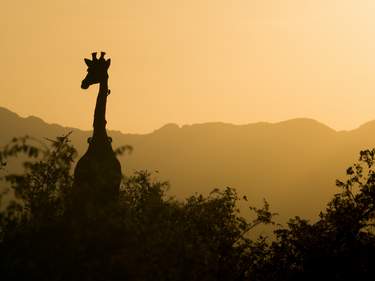
Explore the North of South Africa: Sun City and Madikwe game reserve
For those short on time, staying close to Johannesburg may make sense. On this trip, you'll arrive and depart in Johannesburg and then transfer to the theme park Lost City before continuing to Madikwe for a few days of game drives to spot plenty of wildlife.

Secret gem in South Africa - Northern Cape Self Drive
Embark on an epic self-drive adventure from Cape Town to the Northern Cape. Witness the breathtaking floral displays of Namaqualand, marvel at the diverse wildlife in Karoo National Park, and be captivated by the awe-inspiring cascades of Augrabies Falls.

A family self drive in South Africa & Swaziland
Take the family on an African adventure in your own rental car, it's the ideal companion to discover Kruger National Park at your own pace. Further on to Swaziland and then Hluhluwe, this trip focuses on wildlife and exploration, all at your leisure.

A Kruger adventure
Kruger National Park is one of the best known national parks in South Africa and always worth a visit. Starting and ending in Johannesburg is the most convenient one, the perfect stop to then take a domestic flight towards George or Cape Town for the rest of your trip.
Accommodation in South Africa may be expensive compared with other African countries, but you can be assured of high standards and exceptional value for money. Even modest backpacker lodges provide a minimum of fresh sheets and clean rooms. South Africa also has great boutique hotels, luxury guesthouses, lodges and country retreats at reasonable prices. The national parks and reserves feature a range of accommodation, from basic restcamps to slick game lodges. You’ll also find no shortage of camping and self-catering options.
Traditional African food tends to focus around stiff grain porridge called mielie papor pap , made of maize meal and accompanied by meat or vegetable-based sauces. During your South Africa trip, you’ll likely come across braai (“meat grill”). This is most commonly barbecued steak, lamb cutlets and boerewors (“farmer’s sausage”). Potjiekos is a common meat and vegetable dish cooked in a cast-iron cauldron.
If you ask most people why travel to South Africa, and they’ll mention the wine. South Africa is one of the world’s top ten wine-making countries, producing particularly fine New World wines.
Read our South Africa guide to food and drink .
South Africa’s diverse landscape of mountains, forests, rugged coast and sandy beaches makes the country supreme outdoor terrain for sport and recreation. South Africans have been playing outdoors for decades, resulting in a well-developed infrastructure for activities, an impressive national network of hiking trails and plenty of operators selling adventure sports.
Most people visit South Africa for the chance to spot the iconic Big Five on safari . Spot buffalo, elephant, leopard, lion and rhino, as well as a large supporting cast of other animals. Kruger and the KwaZulu-Natal parks offer walking safaris and night drives. You can also book a safari excursion through hotels and tour operators. The cheapest option is to rent a car and drive around a national park on a self-guided tour. However, with this option you would miss out on the benefit of a knowledgeable rangers. These local guides lead the safaris organized by private reserves, telling you about the flora and fauna during the search for game.
Wherever you are travelling in South Africa you won’t be far from some sort of walking trail. The best ones are in wilderness areas, where you’ll find waymarked paths, from half-hour strolls to multi-day hiking expeditions. Numbers are limited on most overnight trails, and some trails are so popular that you need to book several months in advance. Walking safaris are an exhilarating way to explore game country, accompanied by an armed ranger. Just bear in mind that you are likely to see fewer animals on foot than from a vehicle.
Watersports
South Africa has some of the world’s finest surfing breaks, all the way along the coast from Namibia to Mozambique. Some world-class shapers work here, and you can pick up an excellent board at a fraction of the European or US price. Boogie-boarding and body-surfing make easy alternatives to the real thing. Windsurfing centres all along the coast cater to demand, while kitesurfing has taken off in Cape Town. On inland waterways, popular activities include waterskiing, kayaking, canoeing, stand-up paddleboarding (SUP) and white-water rafting.
Diving and snorkelling
Scuba diving is popular, and South Africa is an affordable country to get an internationally recognized open-water certificate. The best place to travel in South Africa for diving and snorkelling is the iSimangaliso Wetland Park on the northern KwaZulu-Natal coast, which has vibrant coral reefs and fluorescent fish. You won’t find bright colours along the Cape coast, but the huge number of sunken vessels makes wreck diving popular. Gansbaai (near Hermanus) is the most popular place to go shark-cage diving, with more options on the Garden Route.
Spectator sports
South Africa is a sports-mad nation, especially when local or international teams take to the field. Winning performances, controversial selections and scandals commonly dominate the front and back pages of newspapers. The major spectator sports are football, rugby and cricket, and big matches involving the international team or heavyweight local clubs are well worth seeing live.
No other African country has as rich a variety of national parks, game reserves and wilderness areas as South Africa. If you’re planning a safari, you have around two-dozen state-run parks and private reserves to choose from. If you had to choose one, Kruger would win for its sheer size and its range of animals. The Tsitsikamma section of the Western Cape’s Garden Route National Park is just as astonishing for its ancient forests, rugged sea cliffs and dramatic Storms River Mouth. There's also the multi-day Otter Trail, South Africa’s most popular hike. For epic mountain landscapes, nowhere can touch the uKhahlamba-Drakensberg Park.
South Africa is something of an enigma. Even after 25 years of democracy, the “rainbow nation” is still struggling to find a new identity. Apartheid is dead, but its heritage still shapes South Africa in very physical ways. This is all too evident in the layout of the towns and cities, where the historically poorer African areas are usually tucked away from the centre.
South Africa’s population doesn’t reduce simply to black and white. Over 80 percent of the population are black Africans, while white people make up just under nine percent, as do coloured people – the mixed-race descendants – the mixed-race descendants of white settlers, slaves from Southeast Asia and Africans. The rest are mostly Indians (2.5 percent), resident mainly in KwaZulu-Natal and descended from indentured labourers, who came to South Africa at the beginning of the twentieth century.
But perhaps a better indication of South Africa’s diversity is the plethora of official languages, most of which represent distinct cultures with rural roots in different corners of the country. Each region has its own particular style of architecture, craftwork, food and sometimes dress. Perhaps more exciting still are the cities, where the whole country comes together in an alchemical blend of rural and urban, traditional and thoroughly modern.
Travel advice for South Africa
From travel safety to visa requirements, discover the best tips for visiting South Africa
- Crime and personal safety tips South Africa
- Eating and drinking in South Africa
- Getting around South Africa: Transportation Tips
- Tips and travel advice for South Africa
- Best time to visit South Africa
- Weather in Johannesburg in May
Despite horror stories of sky-high crime rates, most people visit South Africa without incident. Be careful, but not paranoid. This is not to underestimate the issue – crime is probably the most serious problem facing the country. But some perspective is in order: crime is disproportionately concentrated in the poor African and coloured townships.
Violent crime is a problem throughout Johannesburg, from the city centre to the townships, and travellers are most at risk here. However, the greatest peril facing most visitors is navigating South Africa’s roads, which claim well over 10,000 lives a year.
Some basic South Africa travel tips include avoid wearing expensive jewellery and watches and avoid carrying excessive sums of money or a camera. Don’t put your wallet in your back trouser pocket, or leave valuables exposed. Lock your car doors while driving, especially in cities and don’t walk alone at night.
Read more South Africa travel advice to help you enjoy a stress-free trip.
This section will look at travel requirements for South Africa.
Citizens of the US, Canada, Australia, New Zealand, Japan, Argentina, Brazil and most European countries do not need a visa for trips to South Africa of up to 90 days. The exceptions being citizens from Bulgaria, Croatia, Estonia, Latvia, Lithuania, Romania, Slovakia and Slovenia, who need to obtain one at a South African diplomatic mission in their home country. Everyone who visits South Africa needs a valid passport and proof of a return ticket (or onward travel documents) and a bank statement showing sufficient funds to cover their stay. Though rare, immigration officers do on occasion ask to see these documents. If you are planning to travel to South Africa alone with a child, you must obtain a notarized document certifying both parents’ permission. All children travelling to South Africa will be expected to show an unabridged (full) birth certificate.
For thousands of years, San Bushman shamans in South Africa decorated rock faces with powerful religious images. These finely realized paintings, found in mountainous areas across South Africa, include animals, people, and humans changing into animals. Archeologists now regard the images as metaphors for religious experiences, one of the most significant of which is the healing trance dance, still practised by the few surviving Bushman communities. Rockfaces can be seen as portals between the human and spiritual world: when we gaze at Bushman rock art, we are looking into the house of the spirits.
President Botha and apartheid's last stand
Pieter Willem Botha was the last and most rabid of South Africa's apartheid enforcers. A National Party hack from the age of 20, Botha worked his way up through the ranks, becoming an MP in 1948 and subsequently Minister of Defence , a position he used in 1978 to unseat Prime Minister John Vorster. Botha set about streamlining apartheid, modifying his own role from that of a British-style prime minister, answerable to parliament, to one of an executive president taking vital decisions in the secrecy of a President's Council heavily weighted with army top brass.
Informed by the generals that apartheid couldn't be preserved purely through force, Botha embarked on his Total Strategy , reforming peripheral aspects of apartheid while fostering a black middle class as a buffer against the ANC. He also pumped vast sums into building an enormous military machine that crossed South Africa's borders to bully or crush neighbouring countries harbouring anti-apartheid activists. At home, security forces were free to murder, maim and torture opponents of apartheid .
Botha's iron fist proved his undoing when, in 1985, he responded to international calls for change by hinting that he would announce significant political reforms at his party congress. In the event, out of fear of a white backlash, or just bloody-minded intransigence, he shrank away from meaningful concessions. The result was an immediate and devastating flight of capital from the country, a withdrawal of credit by Chase Manhattan Bank and intensified sanctions.
Botha blustered on through the late 1980s, while his bloated military sucked the state coffers dry. Even National Party stalwarts realized that his policies were leading to ruin, and in 1989, when he suffered a stroke, the party was quick to replace him with F.W. de Klerk , who swiftly announced reforms.
Botha lived out his unrepentant retirement near George, declining ever to apologize for the political crimes committed by his administration. Curiously, when he died in 2006, he was given an uncritical, high-profile state funeral, broadcast on national television and attended by members of the government, including then-president, Thabo Mbeki.
Afrikaans is South Africa's third mother tongue, spoken by fifteen percent of the population and outstripped only by Zulu and Xhosa. English, by contrast, is the mother tongue of only nine percent of South Africans.
Signs of the emergence of a new Southern African dialect appeared as early as 1685, when a Dutch East India Company official from the Netherlands complained about a "distorted and incomprehensible" version of Dutch being spoken around modern-day Paarl. By absorbing English, French, German, Malay and indigenous words and expressions, the language continued to diverge from mainstream Dutch, and by the nineteenth century was widely used in the Cape by both white and coloured speakers, but was looked down on by the elite.
In 1905, Gustav Preller , a young journalist from a working-class Boer background, set about reinventing Afrikaans as a "white man's language". He aimed to eradicate the stigma of its "coloured" ties by substituting Dutch words for those with non-European origins. Preller began publishing the first of a series of populist magazines written in Afrikaans and glorifying Boer history and culture. Pressure grew for the recognition of Afrikaans as an official language, which came in 1925.
When the National Party took power in 1948, its apartheid policy went hand in hand with promoting the interests of its Afrikaans-speaking supporters. Afrikaners were installed throughout the civil service and filled most posts in the public utilities. Despite there being more coloured than white Afrikaans speakers, the language quickly became associated with the apartheid establishment. This led directly to the Soweto uprising of 1976, when the government attempted to enforce Afrikaans as the sole medium of instruction in African schools. At the same time, the repression of the 1970s and 1980s and the forced removals under the Group Areas Act led many coloured Afrikaans speakers to adopt English in preference to their tainted mother tongue.
There are few signs that Afrikaans will die out, though. Under the new constitution, existing language rights can't be diminished, which effectively means that Afrikaans will continue to be almost as widely used as before. But it is now as much with coloured as white people that the future of the taal (language) rests.
The Rough Guides to South Africa and related travel guides
In-depth, easy-to-use travel guides filled with expert advice.

Find even more inspiration for South Africa here

Planning your own trip? Prepare for your trip
Use Rough Guides' trusted partners for great rates
written by Rough Guides Editors
updated 03.06.2024
Ready to travel and discover South Africa?
Get support from our local experts for stress-free planning & worry-free travels.
- Where to stay
- Travel advice

South Africa Travel Guide
Looking for an in-depth South Africa travel guide ?
South Africa is one of the most popular countries in Africa for tourism. Visitors can experience city life in Cape Town and Johannesburg, or get up close and personal with wildlife in safari destinations like Kruger National Park.
Despite South Africa’s painful past and certain areas of the country that have a reputation for crime, visitors to South Africa will find that this country has so much to offer for the adventurous traveler.
Keep reading for helpful resources for your South Africa trip from Jessie on a Journey as well as our sister site, Epicure & Culture.
Note: This guide to South Africa travel contains affiliate links to trusted partners!

South Africa Map
Use this South Africa travel map to begin planning your trip!
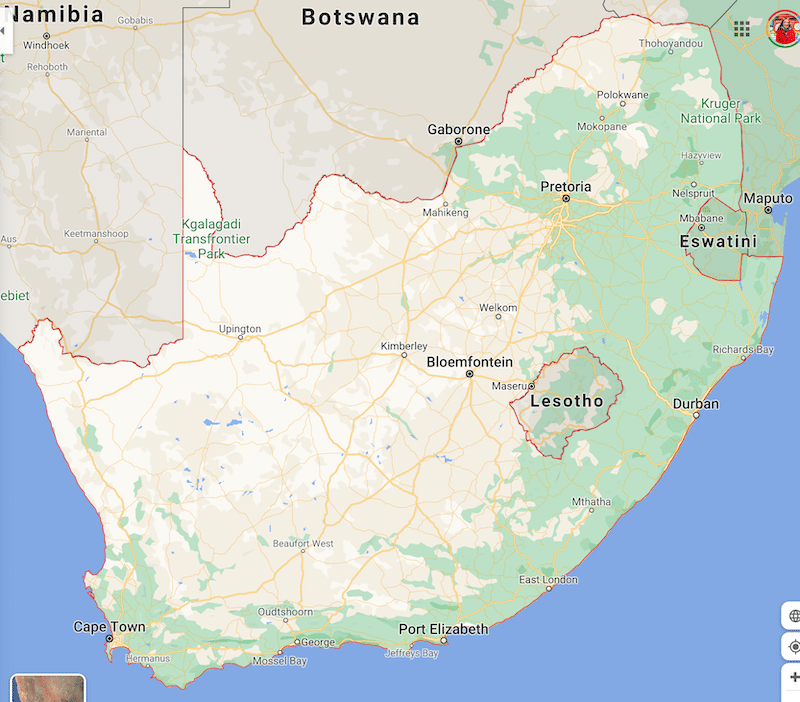
Click here for an interactive version of the above map.
Best Places To Visit In South Africa
These South Africa travel guides share information that will help you plan the perfect trip.

Exploring Johannesburg’s Vibrant Street Art Culture

Modern Joburg: Johannesburg 19 Years After Apartheid
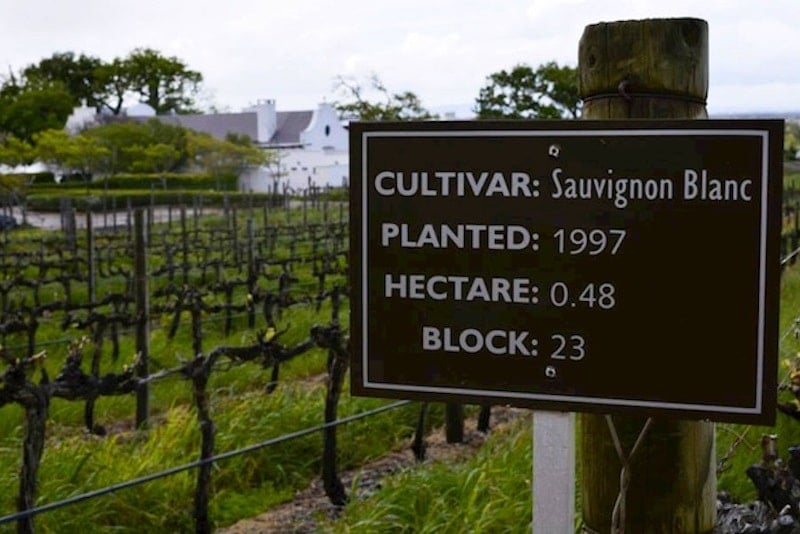
Constantia Valley: A Wine Country Escape In South Africa
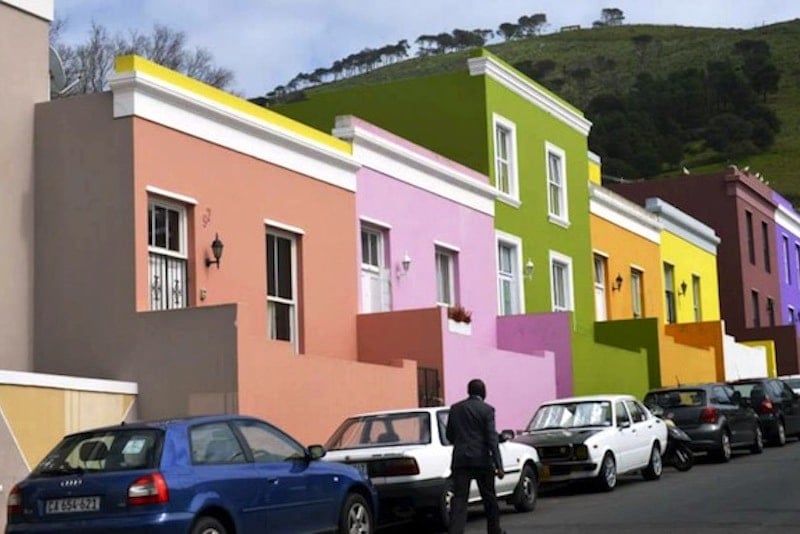
Exploring The Spicy Cape Malay Culture Of Cape Town, South Africa
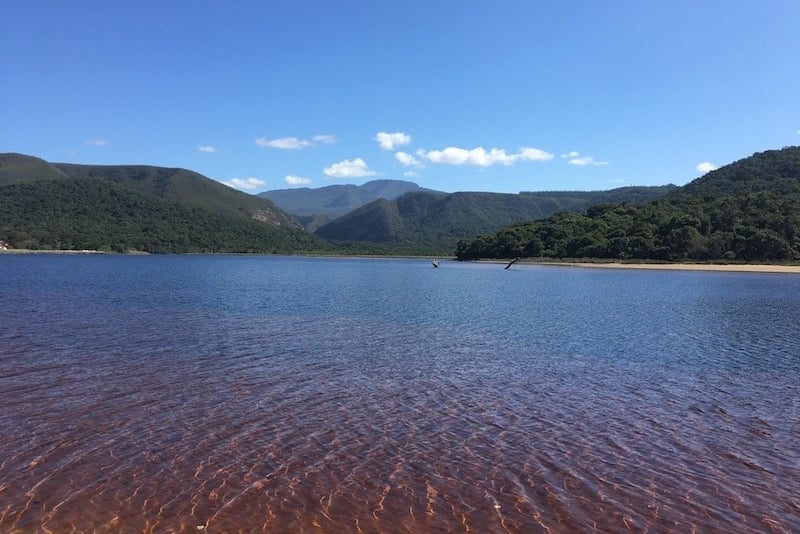
Wild Spirit: A Sustainable Retreat Along South Africa’s Garden Route
South Africa Safari Tour
These guides are perfect for people going on a South African safari .

Beyond The Big 5: Notes From A South African Safari

Inside Look: What A South African Safari Is Really Like
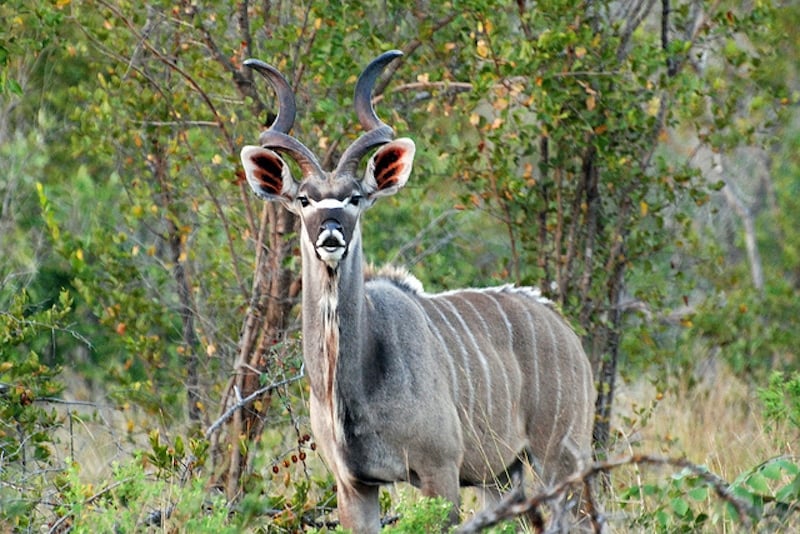
How To Pack For A South African Safari
South Africa Vacation Inspiration
Use these guides to inspire your South Africa itinerary .

10 Reasons Why South Africa Should Be Your Next Travel Destination
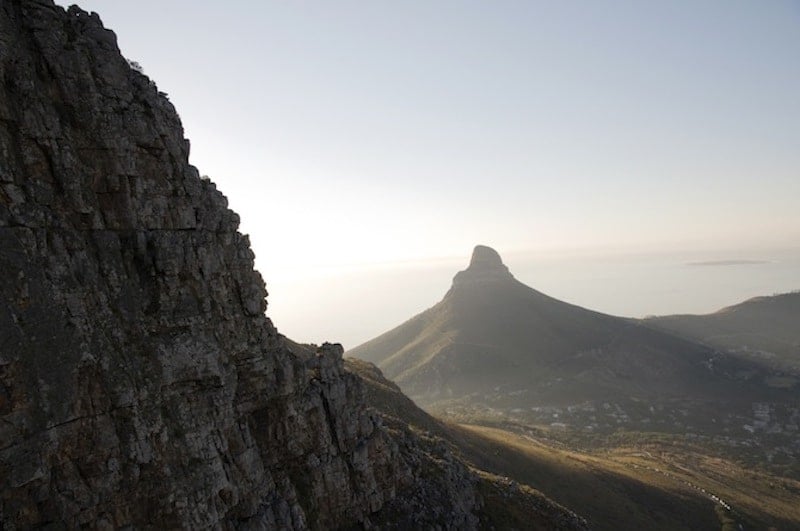
Essential South African Experiences For The Adventurous Traveler
Top South Africa Tours
Check out these fun tours in South Africa from my affiliate partner, Viator:
- Full-Day South African Wine Tour from Cape Town
- Kruger National Park Full Day Game Drive from Ehlanzeni
- Cape Point and Boulder’s Beach Penguins Tour from Cape Town
South Africa Travel Insurance
It doesn’t matter if you’re traveling solo or with a group on a South Africa tour.
When visiting South Africa — or anywhere else in the world — make sure to get travel insurance.
In my opinion, the best travel medical insurance for travelers is SafetyWing as they’ve got a large network and offer both short-term and long-term coverage — including coverage if you’re traveling for months as well as limited coverage in your home country).
Additionally, SafetyWing is budget-friendly and offers $250,000 worth of coverage with just one low overall deductible of $250.
With coverage, you’ll have peace of mind as you embark on your South Africa itinerary.
Click my referral link here to price out travel insurance for your trip in just a few clicks .
South Africa Hotels
Click here to browse hotels in South Africa!
Prefer self-contained stays?
Click here to check out unique local rentals!
You can also use this map to search for local stays:
Renting A Car In South Africa
Need a rental car for your South Africa trip?
Use Discover Cars to quickly compare your car rental options.
South Africa Travel Guide FAQ
Below, find answers to frequently asked questions about traveling South Africa .
Q: Is it safe to travel in South Africa?
South Africa is often perceived as a dangerous destination, but it’s possible to have a safe visit to South Africa by exercising caution.
Cities are more dangerous than other parts of the country — such as the wine regions or safari destinations.
In South Africa’s cities, armed robbery and other crimes are not uncommon. It’s advised to exercise increased caution in cities and to avoid going out at night if possible.
Q: Is driving in South Africa safe for tourists?
Driving in South Africa can be safe for tourists as long as precautions are taken.
Never leave valuables inside your vehicle, and avoid driving at night. Drivers in South Africa drive on the left side of the road — as in, the “wrong” side of the road for Americans.
When self-driving through game reserves, remain in your vehicle and stay alert for wildlife.
Q: Is it expensive to visit South Africa?
South Africa is known for being an expensive destination, but it is possible to visit on a budget.
A backpacker can expect to spend $50 a day, while a mid-range traveler who wants to experience more activities like safaris should budget closer to $150 a day in South Africa.
Q: When is the best time to visit South Africa?
The best time to visit South Africa is in the winter months from May to September. This is the best season for safaris and the weather is cooler and drier.
Q: What countries need a visa to visit South Africa?
Citizens from many countries such as the United States, Canada, the United Kingdom, and Australia do not need a visa to visit South Africa.
It’s recommended to view your country’s South Africa International Travel Information page for the most up-to-date information on entry and exit requirements — including visa information — for foreign citizens. You can also contact the Embassy of the Republic of South Africa.
Q: What is the best national park to visit in South Africa?
The most popular option is Kruger National Park, though the parks surrounding it — like the Manyeleti Private Game Reserve — also get a ton of wildlife.
What would you add to this South Africa travel guide?


South Africa Travel Guide
Your ultimate south africa travel guide, with tips, ideas on things to do, and best things to see in south africa. great for first-time and returning travelers..
Found in the southernmost tip of Africa, South Africa is a great place for those looking for some excitement.
Full of history and home to numerous forests, beaches, lagoons, and mountains, it also has some of the best safari destinations in the world.
See rhinos, lions, buffaloes, elephants, and baboons up-close, just to name a few.
Or, for those who want a gentler trip, head to the art and history museums and shopping areas. There is something for everyone in South Africa.
This South Africa travel guide will help you plan your next vacation.
Popular Guides
- The Cango Caves
- 28 Reasons to South Africa
Our Highlight
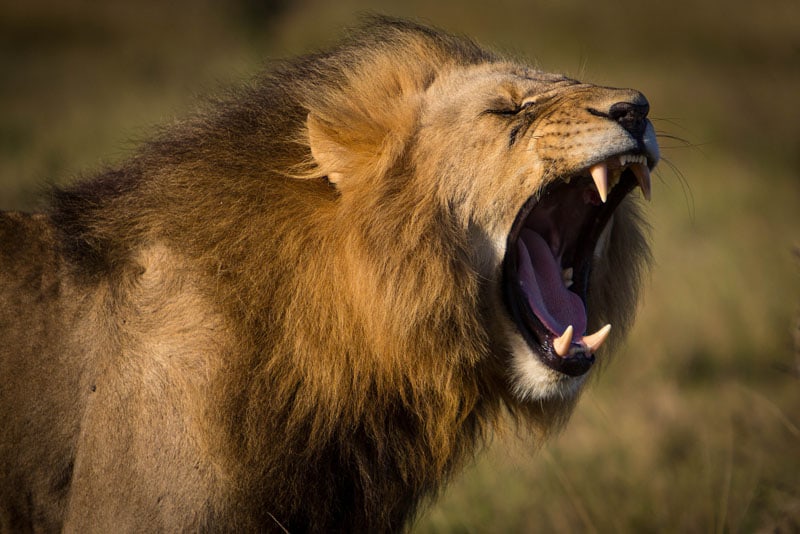
Table of contents
Table of Contents
Fast Facts about South Africa
- Currency: The official currency is the South African rand and 1 rand is equal to 0.067 USD.
- Power: Power voltage is 230V at 50 Hz.
- Entry: To enter, you will need a U.S. passport. If your stay is under 90 days, you will not need a visa.
- Getting Around : The best way to get around is by bus or train. We have also done car rental and loved it.
- Sales tax : The sales tax rate is 15%.
- Best Sim Cards: Cell C, MTN, and Vodacom are the most popular mobile providers. A prepaid SIM card can be purchased through any of them by visiting their official stores or local grocery or drug stores.
- When to visit South Africa: South Africa’s summer is November and February and it is warm and dry in the south while rainier in the north. Whale watching is best from July to November.
- May to September is the best time for wildlife and safaris.
- Tap water is potable. However, ensure that you take bottled water or a water purifier with you when traveling to remote rural areas and the bush.
- The Capital City of South Africa is Pretoria.
Things to See and Do in South Africa
- Kayak with Crocodiles and Hippos – If you are feeling adventurous, skip the platoon boat and kayak in the river instead! Nothing but fiberglass separate you from the crocodiles below
- Take a microlight flight – Take a thrilling flight over the sugar cane plantations in Durban and the magnificent Dolphin Coast.
- Robben Island : Take a tour through this former prison that includes a museum. A prison that once held Nelson Mandela and many other political prisoners fighting to end apartheid, it is now a symbol of
- Penguins of Simons Town – South Africa has its own little penguin colony and you can see them on your way to the Cape of Good Hope.
- See the Cango Caves – these caves are the oldest tourist attraction in South Africa and one of the best cave systems the PlanetD have ever visited!
- Go on a Safari! – A person can’t go to South Africa without going on safari
South Africa Travel Guides
28 Reasons Why South Africa Should Be on Your Bucket List
- What to Wear on Safari – Africa Travel Inside and Out
- Best Things to do in South Africa
Accommodation
Budget: You can find a number of backpacker hostels for 150 to 230 rand per night. Enjoy dorm-styled or private rooms, shared kitchens, free Wi-Fi, and great locations.
Mid Range: For mid-range hotels, expect to pay 300-600 rand per night and enjoy private rooms, free breakfast, an outdoor pool, a hotel restaurant and bar, a gym, and nearby attractions.
High End: Upscale hotels will range from 1,000 to 22,000 rand per night. Take in the best with top-of-the-line hospitality, polished rooms and suites with ocean views, infinity pools, fine dining, spa services, butler service, sundecks, and more.
If you are starting your trip in Cape Town check out our suggestions for Best Things to do in Cape Town
When in South Africa, try staple dishes like chakalaka and pap (vegetables and beans with porridge). You must make sure to have a South African Braai when in the country. This is their answer to a barbecue.
For something sweeter, some malva pudding (sponge pudding with apricot jam and hot cream sauce). When out and about, look for bunny chow (white bread filled with sambal) or Boeri Rolls (South African sausage in hot dog bun with onion relish, chili, and tomato).
When you’re ready for a sit-down meal, South Africa has a number of restaurants to sample from. In total, expect to pay around 120 rand per meal for most places, or up to 500 rand per meal for more expensive places.
The national dish is Ragu alla Bolognese Sauce (meat-based sauce served in tortellini, gnocchi, or tagliatelle pasta). Other favorites include pizza, lasagna, and bottarga (cured fish roe).
The Best Ways to Get Around South Africa
Getting to south africa:.
The O.R. Tambo International Airport is the main airport and is 13.5 miles from Johannesburg, while the Cape Town International Airport is 12.5 miles from Cape Town.
Flights: If your budget allows, direct flights are a fast way to get between cities. Go from Johannesburg to Cape Town, for example, in two hours for 1,500 rand.
You can check for the best flights to South Africa on Skyscanner .
Transportation:
Transportation: Trains are a fast way to get around. South Africa comes with overnight trains designed for tourists.
Go from Johannesburg to Cape Town for 700 rands and enjoy dining and shower options. These trains tend to move slower than traditional trains or buses, making them ideal for scenic views.
For faster routes, try the rapid transit system (Gautrain) that departs every 20-30 minutes and moves between major cities at 99 miles per hour. Go from the O.R. Tambo airport to Johannesburg, for example, for 165 rand.
Buses : Buses are a good way to get between major cities and have a variety of services.
The Baz Bus is a good shuttle bus for tourists and travels to major cities like Johannesburg, Durban, and Port Elizabeth, and has prices between 2,600 to 5,400 depending on the distance.
Taxis: Taxis are an alternative way to get around. Prices start at 15 rand and increase 10-12 rand per kilometer traveled.
Car Rental: To rent a car, you must be at least 21 years old and have a U.S. license as well as an International Driver” But you can find great deals for car rentals too so look around.
To rent a car, you need a valid U.S. driver’s license and be at least 18 years old. Prices start at around 600 rand per day.
Uber: Uber is an option, especially in major cities like Johannesburg and Port Elizabeth.
When to go To South Africa
The best time to go to South Africa depends on what you want to do there. If you’re going on a safari, travel during the dry season of April to September.
This is a great time to enjoy pleasant temperatures (with highs of 80 degrees Fahrenheit) and also the period where you can spot the most wildlife.
Alternatively, if you want to see the whales, travel between July and November.
Where to Stay in South Africa
Glen Boutique Hotel and Spa : Stay in the heart of Cape Town at this great boutique hotel. Enjoy stylish suites with private balconies and ocean views, spa services, an adult pool as well as an infinity pool and hot tub, flat-screen TVs and coffeemakers in each guest room, bathrobes, and the hotel restaurant and bar. The hotel even provides transportation to the Cape Town airport, located just 13 minutes away. If you’re not ready to leave yet, there are numerous bars and restaurants nearby.
Genesis All-Suite Hotel : One of the best places to stay in Johannesburg is this centrally located four-star hotel. Enjoy suites with kitchenettes and cable TVs, a fitness center, a pool, the hotel’s restaurant and bar, laundry and dry-cleaning services, and free high-speed Wi-Fi. When you’re ready to step out, numerous attractions are just minutes away.
Hilton Durban : Just a mile from South Beach, this upscale hotel has everything you need for a great stay. Enjoy an outdoor pool, dining options, a wine bar, a fitness center, room service, spa services, and a complimentary breakfast. Numerous attractions, including a waterpark, casino, and a botanic garden are just minutes away.
Check out our favorite booking platforms Booking.com , Tripadvisor and VRBO for the best deals on accommodation in Ireland.
South Africa Accommodation Guides
- Accommodation in Cape Town
- Accommodation in Durban
- Accommodation in Johannesburg
What to Pack for South Africa
When packing for South Africa it is important that you keep your lodgings and planned activities in mind.
It is recommendable that you pack transitional clothing items that can carry you from day to night or from city sightseeing to safari adventures.
- Neutral colors – If you planning on heading out on a safari than it’s best to limit your color palette to neutrals, especially on game drives, as bright reds and harsh prints can provoke wildlife.
- Headlamp or flashlight – if traveling to rural areas, battery-powered headlamps or flashlights can help you navigate in the dark if there is limited power or if there is a blackout.
- Insect Repellent – Along with natural beauty and breath-taking wildlife, South Africa is also home to lots of insects and mosquitoes that can carry diseases. Be sure to pack more than one can of DEET or Permethrin insect repellent.
- Mosquito nets and bug spray – If you are staying in basic accommodations, be sure to bring your own mosquito net.
- Malaria pills – there have been increased numbers of malaria cases being reported in South Africa. To reduce your risk take precautionary measures against mosquito bites and consider packing malaria pills for your trip.
- Walking Shoes: Keep your feet comfortable with a sturdy pair of walking shoes.
- Power Adapter: As the voltage is higher than the US, a power adapter will ensure your electronics can be charged properly.
- Sunscreen and Safari Hat: Protect your skin from the beautiful sun with some sunscreen.
See our packing tips for What to Wear on a Safari.
South Africa Travel Guide: Best Booking Resources
Whenever we travel to we make sure to start with these companies. We have tried a lot of different ones over the years and all of these have consistently proven to be the best when it comes to offering great prices.
We have used every one of these personally and continue to do so.
- Booking.com : This is our go site to when comparing prices for accommodation. It usually has the cheapest prices, especially in Europe and we love their interface. Not to mention you get free cancellation and you are guaranteed the best price.
- Trip Advisor : What we like about Trip Advisor is that we can look at all the reviews and then book our accommodation. TripAdvisor is where we go when we want to compare prices with multiple accommodation providers.
- VRBO : is the main search engine we use when we are looking for a home or apartment rental. It can sometimes be cheaper than hotels and it is the best way to stay in areas that offer a more local feel.
- Hostelworld : With one of the largest databases of hostels in the world, Hostelworld is the go-to site when you are looking for budget accommodation.
- Skyscanner : This is the first place we check for flights. It consistently comes back with the cheapest and best options. It allows us to compare a lot of airlines to get the best price.
- Rome 2 Rio : If you want to see how to get somewhere by plane, train, bus, ferry or car Rome2Rio lays it all out for you as well as related costs.I love how they show it all to you on a Google Map and it works offline.
- Get Your Guide: For all your day trip and city guide needs, we use Get Your Guide. It has the world’s largest collection of things to do with more than 30,000 activities in 7500 destinations.
- World Nomads Insurance: When traveling to Italy you should always have travel insurance. We have found the best bang for your buck is by far World Nomads.
South Africa Travel Guide: Related Articles
To browse all our articles and guides about South Africa click here.
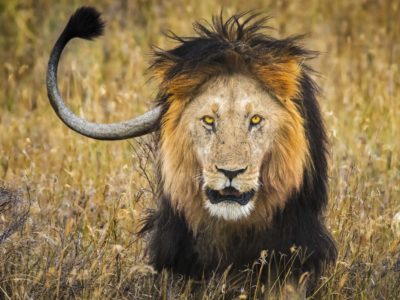
29 Best Things to Do in South Africa In 2024
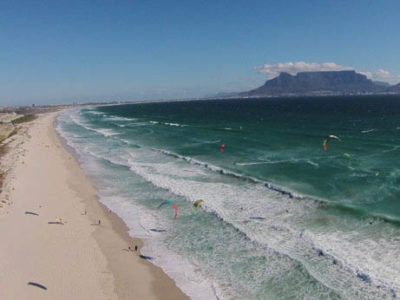
Ultimate Guide to Kitesurfing Cape Town – A Local’s Guidebook
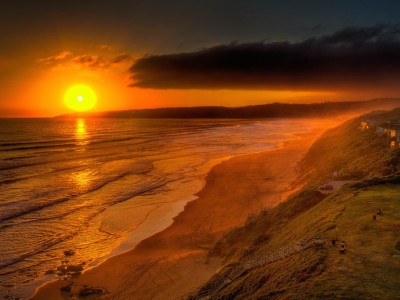
- Search Please fill out this field.
- Newsletters
- Destinations
- Africa & Middle East
- South Africa
South Africa Guide: Planning Your Trip
:max_bytes(150000):strip_icc():format(webp)/DSC00412-5b73daf7c9e77c0057ca2198.jpg)
- Best Time to Visit
- Weather & Climate
- Places to Visit
- Driving in South Africa
- Safety in South Africa
- How to Spend 10 Days in South Africa
- Foods to Try in South Africa
- Drinks to Try in South Africa
- Best Restaurants in Johannesburg
- Best Restaurants in Cape Town
- Things to Do in South Africa
- Things to Do With Kids
- Best Beaches
- Best Surfing
- Best Dive Destinations
- Best Golf Resorts
- Kruger National Park
- 48 Hours in Johannesburg
Things to Do
- Apartheid Museum
- Airport Guide
- Table Mountain
- Game Reserves Near Cape Town
South Africa is a country of extremes, where poverty-stricken shanties exist alongside first-world art galleries, entertainment venues, sports arenas, and restaurants . Its magnificent landscapes include snow-dusted mountains and areas of arid semi-desert; whilst its twin coasts support incredible marine biodiversity. With countless ethnic groups and no fewer than 11 official languages , its human culture is just as diverse. Whether you're looking for a beach vacation , a city break, or an escape into the game-filled bush, South Africa has the ability to be all things to all people.
From deciding when to travel to choosing where to stay, this article takes a look at everything you need to consider when planning your next trip there.
Planning Your Trip
- Best Time to Visit: Although South Africa is a year-round destination, summer (December to February) is the hottest, wettest time of the year and the best time for a beach holiday. Winter (June to August) is the coolest, driest time of year and the best time to go on safari.
- Languages: Afrikaans, English, Ndebele, Northern Sotho, Sotho, Swazi, Tsonga, Tswana, Venda, Xhosa, and Zulu.
- Currency: The rand.
- Getting Around: Public transport is unreliable and unsafe in South Africa. In the larger cities you can use Uber to get around, while privately owned long-distance buses operate in between the country's major destinations. If you're not planning on joining a chauffeured itinerary, the best way to travel is to fly or hire a car .
- Travel Tip: Malaria is a risk in parts of Limpopo, Mpumalanga, and Kwa-Zulu Natal provinces . Before you travel, ask your doctor whether you should take prophylactics.
For many visitors, South Africa's awe-inspiring wilderness areas and safari parks are the main reason to visit. Outdoor activities abound, from whitewater rafting to scuba diving, mountain biking, and even skiing. However, the country's rich culture and history should also be explored, perhaps with a township tour or a visit to Cape Town and Johannesburg's apartheid-era landmarks.
- Go on safari: Experience South Africa's unspoiled natural beauty while looking for iconic animals on safari. Explore one of the major national parks (like Kruger or Addo ), experience five-star luxury in a private reserve like Sabi Sands or Phinda, or step off the beaten track with a visit to the remote Kgalagadi Transfrontier Park.
- Discover natural wonders: South Africa is also home to some jaw-dropping geological features. These include the Blyde River Canyon (the third-largest in the world ), the dizzying peaks and valleys of the Drakensberg Mountains , and the mighty Kalahari Desert. On the coast, expect coral-filled reefs and world-class surf breaks.
- Learn about local culture: South Africa is defined by the traditions of its many different ethnic groups. Visit an Ndebele or AmamPondo tribal village, or sign up for a Cape Malay cooking class in Cape Town's Bo-Kaap neighborhood.
Explore more things to do in South Africa with our full-length articles on the best swimming beaches , the best small towns , and the country's UNESCO World Heritage Sites .
What to Eat and Drink
South Africa is a foodie's paradise, with fertile lands and productive seas offering a smorgasbord of locally sourced fruits, vegetables, meat, and seafood. Traditional African staples include pap (a kind of porridge made from mealie meal) and umngqusho , a hearty stew made from samp and beans. Immigrant laborers from India founded Durban's legendary curry culture; while Cape Malay cooking is inspired by the native recipes of Indonesian and Malaysian workers brought over by Dutch colonists. The greatest South African culinary tradition of all is the braai , or barbecue. More than a way of cooking, it's a way of life that transcends all cultural barriers.
South African beverages are just as diverse. Tourists come from all over the world to visit the vineyards of the Cape Winelands , where wines of all varieties are produced but Pinotage is the national signature. Local beers range from mass-produced giants like Castle and Black Label, to small-batch microbrews with their own distinct flavor. For a uniquely South African drinking experience, try umqombothi (a Xhosa beer brewed using fermented maize and sorghum malt) or mampoer (the Afrikaans take on moonshine). Non-alcoholic drinks that every tourist should try at least once include amasi (a fermented milk popular with indigenous cultures) and rooibos, a healthy, fragrant tea made from the leaves of the red bush plant.
Explore our full-length articles on the best curry restaurants in Durban , the best South African beverages , and biltong , South Africa's improvement on beef jerky.
Where to Stay
Deciding which part of South Africa to visit and stay in will be one of the biggest decisions you'll have to make when planning your trip. There are nine provinces in South Africa: Western Cape, Eastern Cape, Northern Cape, North West, Free State, Gauteng, Limpopo, Mpumalanga, and KwaZulu-Natal. From the lush coastline of southern KwaZulu-Natal to the semi-desert interior of the Northern Cape, each one is so different that the ideal option is to rent a car and see as much of the country as possible. If you don't have unlimited time or funds, however, you may have to explore one area of the country at a time.
Choose the Western Cape for winery tours, breathtaking ocean and mountain scenery, and fine dining in Cape Town . As the birthplace of Nelson Mandela, the Eastern Cape is steeped in tribal tradition – especially in the Transkei , a previous Xhosa homeland. The arid Northern Cape is a rewarding destination for adventure seekers wanting to discover remote national parks or to see the annual super-bloom of desert flowers. Head to Gauteng to explore the historic landmarks of Johannesburg and Pretoria; or to Limpopo and Mpumalanga for unrivalled game-viewing. KwaZulu-Natal is all about the Drakensberg mountains, historic battlefields, and world-class scuba diving.
Read our full-length articles on the best hotels in Johannesburg, the best private game reserves in South Africa , and the best luxury lodges in the Kruger .
Getting There
Most overseas visitors will enter the country through O.R. Tambo International Airport in Johannesburg. From there, you can catch regular connecting flights to major hubs all over the country, including Cape Town, Port Elizabeth, and Durban. If you're planning an overland trip through Southern Africa, you can cross into South Africa from border posts in Namibia, Botswana, Zimbabwe, Mozambique, Lesotho, or Eswatini.
Most nationalities can enter the country without a visa for up to 90 days , but it's important to check the South African Department of Home Affairs website for up-to-date information. Please be aware that there are specific requirements for those traveling to South Africa with children under the age of 18.
Culture and Customs
South Africa is one of the world's most beautiful destinations; however, many travelers are put off by concerns about safety . While it's true that South Africa does have a higher crime rate than many first world countries , most visits are without incident. You can increase your chances of a hassle-free experience by following a few simple rules. These include keeping your windows and doors locked when driving through big cities, and never leaving valuables visible in your car when parked. Don't walk alone in remote areas or in urban areas at night, especially if you are a woman. Leave your expensive jewelry at home. Book accommodation in a reputable part of town, and if you want to experience life in a township, join a guided tour rather than exploring by yourself.
Discussing local history and culture with people that you meet along the way is an important part of traveling. However, remember that race and politics continue to be sensitive subjects in a country still trying to recover from the apartheid era, and foreign input is not always welcome. Judge the situation carefully before giving your opinions.
Tipping is expected for good service in South African restaurants. The amount is up to you, but 10 to 15 percent is standard. Don't forget to tip fuel attendants and car guards, too. A few rand is normal in this case.
Read these articles for in-depth advice about staying safe in South Africa and tipping in Africa .
Money-Saving Tips
- Although it has more than its fair share of five-star lodges and private reserves, South Africa is also one of the best destinations on the continent for an affordable safari. You can self-drive through all of the country's national parks , which have reasonable daily conservation fees. Most also offer budget-friendly campsites and/or self-catering chalets.
- Accommodation and food are generally affordable by American standards, even if you decide to splurge on a special meal or spend a night in an upmarket hotel. However, if you're on a tight budget, choose a self-catering guesthouse or Airbnb property and shop for ingredients at your nearest Spar, Checkers, or Pick n Pay supermarket.
- South Africa is a vast country and you can easily spend a lot on fuel and/or domestic flights if you add too many stops to your itinerary. Instead, keep costs down by choosing one or two destinations and taking the time to explore them properly.
- For the cheapest prices in terms of accommodation, flights, and tours, plan to travel outside peak season. December coincides with Christmas and the South African summer holidays and is typically the most expensive time to travel.
- Save money on expensive malaria prophylactics by choosing to visit areas of the country that are free from the mosquito-borne disease. If you do decide to visit a malaria area (of which Kruger is one), ask your doctor about cost-effective generic medication instead.
- Make sure that your travel insurance is up to date. South Africa's public hospitals often leave a lot to be desired in terms of patient care and facilities, and private hospitals are expensive.
For more money-saving tips, read our detailed articles on how to plan an affordable African safari , and the best things to do in Cape Town for under $10 .
South African Tourism . "What You Need to Know."
Centers for Disease Control and Prevention . "South Africa Traveler View."
South African Tourism . "Blyde River Canyon Nature Reserve - what a wonderful world!"
Department of Home Affairs . "Countries Exempt From South African Visas."
Overseas Security Advisory Council . "South Africa 2020 Crime & Safety Report." March 3, 2020.
Related Articles
More related articles.

South Africa
With its cultural diversity, stunning natural landscapes, wildlife experiences, and vibrant urban hubs, South Africa makes for a life-changing travel destination. Its cosmopolitan cities, like Cape Town and Johannesburg, are bursting with art, fashion, and restaurants, as well as historical offerings that help travelers better understand the country’s complex past. Of course, in Cape Town, there are also scenic beaches and hikes, and the famed Cape Winelands district is just a short drive away. On safari, visitors can experience wildlife in the most powerful way: by getting up close to the animals themselves.
- Copy Link copied

Photo by Marcreation/Unsplash
When’s the best time to go to South Africa?
Apart from a few exceptions, there is no bad time to travel to South Africa. Cape Town has a wonderful Mediterranean climate, with hot, sunny summers and cool, only occasionally rainy winters. Strike a balance and visit in the shoulder seasons of spring or fall, when the city isn’t throbbing with tourists. Johannesburg, an inland city set atop the Highveld plateau, has pleasant weather year-round, although it’s particularly lovely in March, September, and November. Durban, on the other hand, has a hot, humid subtropical climate, so avoid the summer rainy season and visit between May and September when it’s less stormy. You’ll also want to plan your visit to Kruger National Park for some time between the dry winter months of July and September, when the weather is better, the bush thins out, and animals congregate around waterholes and rivers.
Many businesses in South Africa shut down between mid-December and mid-January for the holiday season. This also tends to be the most expensive time of year to travel around the country because visitors are competing with locals on vacation.

How to get around South Africa
South Africa has many international airports; the most popular are O.R. Tambo International in Johannesburg (JNB), Cape Town International (CPT), and King Shaka International in Durban (DUR). Once in the country, driving is the easiest way to get around. Visitors can rent cars at any international or regional airport but should be aware that South Africans drive on the left side of the road. When driving in the cities, also be sure to carry small change for car guards (people who help you find a parking spot and watch your car until you return), as well as for the tolls on South Africa’s national roads.
Even without a car, it’s easy enough to get around urban areas by booking private transfers through your accommodation or by using ride-sharing services like Uber. Taxis are not advised for tourists. The only two train lines recommended for getting around the city are the Gautrain commuter rail in Johannesburg and the Southern Suburbs Metro Rail in Cape Town. The MyCiti Bus in Cape Town is also a common method of transportation in the city center.
Food and drink to try in South Africa
- Each part of South Africa is known for something different and delicious. The coastline is famous for its seafood, while the Karoo (a vast, semi-desert region) is renowned for local meat like lamb. The Cape Town region has Cape Malay cuisine (defined by its fragrant curries), Johannesburg boasts an array of shisa nyama restaurants (where meat is cooked over an open flame), and you can’t leave Durban without trying some of the city’s signature Indian cuisine, like samosas or bunny chow (a hearty curry served in a hollowed-out loaf of white bread).
- When on safari, it’s traditional to have sundowners (typically a cold beer or gin and tonic) while you braai (grill) vegetables, boerewors (sausages), and broodjies (an elevated take on the grilled cheese sandwich, stuffed with jam, arugula, and whatever else you have on hand). After the meal, savor some brandy or Amarula (a sweet liqueur made from the fruit of the marula tree).
- In South Africa’s Western Cape region, the mineral-rich soil and Mediterranean climate make for award-winning wines, which, thanks to a favorable exchange rate, are also very affordable. Make sure to try the pinotage, the country’s signature red-wine grape. Additionally, craft breweries and distilleries are popping up in urban areas around the country.
- At restaurants in South Africa, it’s customary to tip between 10 and 15 percent.
Culture in South Africa
The South Africa of today may be a dynamic melting pot, but the country has a long history. A visit to Cape Town or Johannesburg should include spending time at the District Six Museum , Robben Island, and the Apartheid Museum to learn more about the hardships much of the country endured.
In more recent years, South Africa has also become a hub for fine art and design. Make time for world-class institutions like the Zeitz Museum of Contemporary Art Africa and the Norval Foundation in addition to events like First Thursdays in Cape Town, when the galleries, shops, and restaurants on Bree Street stay open late.
You could also plan your trip around must-see music festivals such as AfrikaBurn , the Cape Town International Jazz Festival , and the Cape Town Minstrel Carnival , an annual parade on January 2 when thousands of people take to the streets to ring in the new year and watch colorfully dressed bands perform.
South Africa embraces all kinds of travelers, including the LGBTQ community. In fact, a popular event here is the MCQP (or Mother City Queer Project), an annual costume party to celebrate gay rights.
Can’t miss things to do in South Africa
– A trip to South Africa wouldn’t be complete without a long, lazy lunch in the Cape Winelands, followed by a winetasting. The many excellent restaurants in the Stellenbosch/Franschhoek region include the Table at De Meye Wine Farm, Good to Gather at Rozendal , and La Petit Colombe at Leeu Estates. Make sure to book in advance.
– To gain important insight into apartheid, South Africa’s history, and how far the country has come, visit the Apartheid Museum in Johannesburg. Afterward, explore the city’s contemporary side at the many galleries and restaurants downtown or in the Parkhurst neighborhood.
– You can’t visit South Africa without going on safari. Kruger National Park is the most popular safari destination, but there are loads of other parks to choose from, such as Addo Elephant National Park in the Eastern Cape, iSimangaliso Wetland Park , the Kalahari Desert, and West Coast National Park . Accommodations for all budgets are available at most parks.
Local travel tips for South Africa
– U.S. citizens visiting South Africa for 90 days or less do not need to obtain a tourist visa. Just ensure that your passport is valid for at least 30 days after your intended return, and reserve at least two consecutive pages for entry stamps at customs.
– South Africa has 11 official languages, but English is widely spoken. The currency is the South African rand, the standard voltage is 230, and the outlets are type M (with three rounded prongs).
– Make safety a top priority. You don’t need to be afraid, but be aware: Don’t leave your phone on the table or hang your bag on the back of your chair. If renting a car, keep your windows rolled up, and if you’re walking alone on the street, be alert.
– If you’re flying through O.R. Tambo airport in Johannesburg, make sure to lock your baggage. It’s not uncommon for things to go missing.
– Allow yourself a few days in Johannesburg. Many people skip South Africa’s largest city in favor of more time in Cape Town, but Johannesburg is one of the most exciting cities in Africa. It’s a little gritty, but there’s so much culture to see.
Local Resources
– Cape Town Magazine
– Johannesburg In Your Pocket
– Travel Start : for local flight bookings and intel
– Quicket : online ticket platform that showcases local events


17 Absolute Best Places to Visit in South Africa (+Map & Tips)
By Author Jurga
Posted on Last updated: February 19, 2024

If you are reading this because you searched for the best places to visit in South Africa , then it probably means that you already know that South Africa is one of the most remarkable countries in the world and that you are considering a trip there.
Go for it! South Africa is one of the most beautiful destinations you’ll ever visit!
South Africa is so special and unique that it’s often called The World in One Country . And so it is! S-A is like a perfect mix of the very best of the entire world in one place. At the same time, it’s like no other place on Earth…
In this article, you can find a list of the very best places to see in South Africa. 17 incredible destinations in South Africa that are worth a trip from the other side of the world. Find out!
Disclosure: This article is sponsored by South African Tourism . It’s not a secret that South Africa is our absolute favorite country in the world, so we are really excited to be working with them to inspire you to discover this incredible country. All opinions and enthusiasm about South Africa are, of course, our own.
We fell in love with South Africa the first time we visited it many years ago and I’m sure you’ll feel the same way too. It’s a place that captures your heart forever.
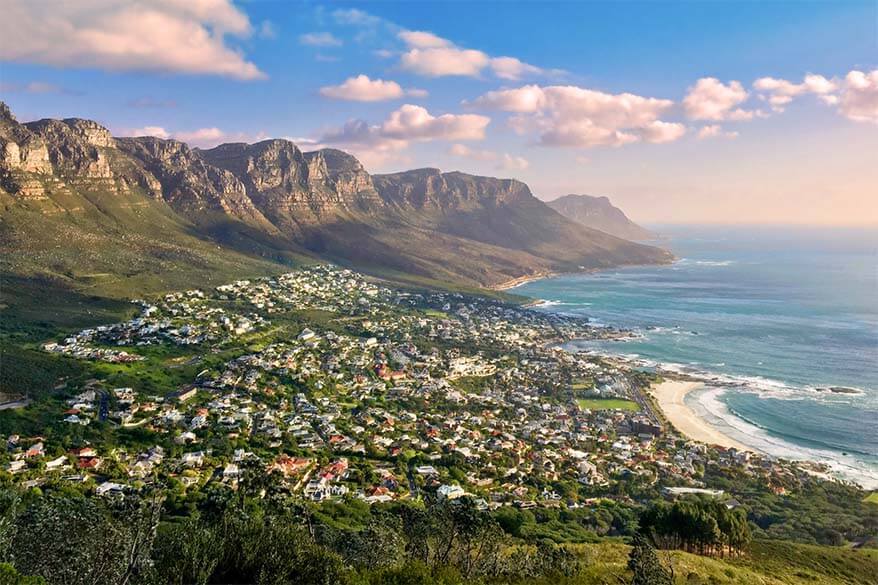
Below, you can find the list of the most amazing places you should visit in South Africa .
This is in no way a complete list, but it should give you a good idea of what to expect and where to go when visiting for the first time. It’s the list of the very best things to do and places to see in South Africa .
I ranked this list by putting my own favorites on top. So if you are limited in time, I suggest that you start with the top of the list and work your way down. At the bottom of this article, you can also find the map indicating all the main tourist attractions in South Africa mentioned in this post. Find out!
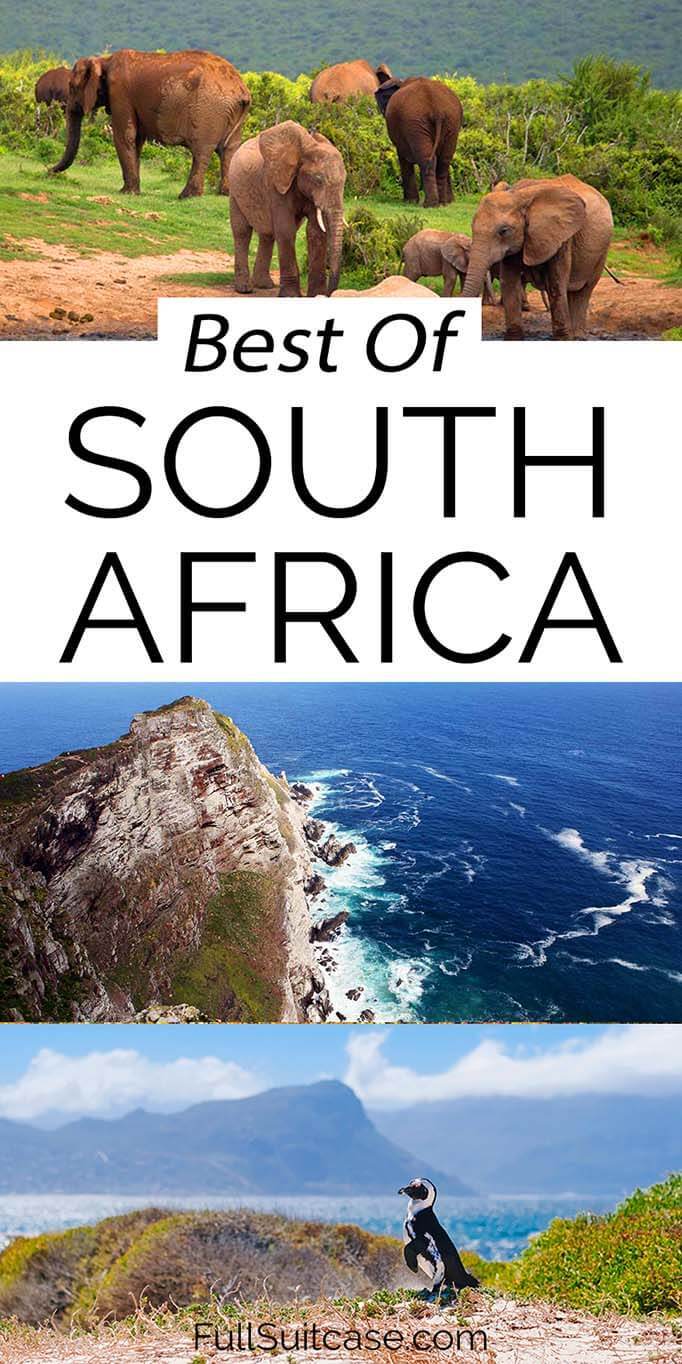
TIP: If you are not sure how to plan your trip, please check our South Africa 2 week itinerary that covers most of the must-see places in South Africa. Please note that it’s a very complete itinerary, but it doesn’t leave much extra time to explore deeper.
If you want to visit every place from this list, you’ll need at least 3 weeks and it will be rushed. If you want to see all the best places in South Africa mentioned in this article AND have some time to explore somewhat deeper, you’ll probably need at least a month…
These are the best places to visit in South Africa:
1. Cape Town
If there is one place you absolutely have to see in South Africa, it’s Cape Town . It was the oldest European establishment in South Africa (1652) and is therefore often referred to as the Mother City.
It’s difficult to describe in just a few words what Cape Town is all about. You really have to experience it in order to be able to appreciate the mingle of African and European cultures, a mix of tradition and modern, and the unique blend of city life and nature…
If South Africa is the world in one country, then Cape Town is the world in one city. Absolutely not to be missed when visiting South Africa!
Here are some of the main places you have to see in Cape Town : Victoria and Alfred Waterfront, Table Mountain, Signal Hill & Lion’s Head, Robben Island, Bo-Kaap area, Kirstenbosch National Botanical Garden, Two Oceans Aquarium, and also the city center with its local markets, shops, restaurants, and museums.
TIP: If the gondola to the top of Table Mountain is open, go there first. It often gets closed due to high winds, so don’t leave it for the last day.
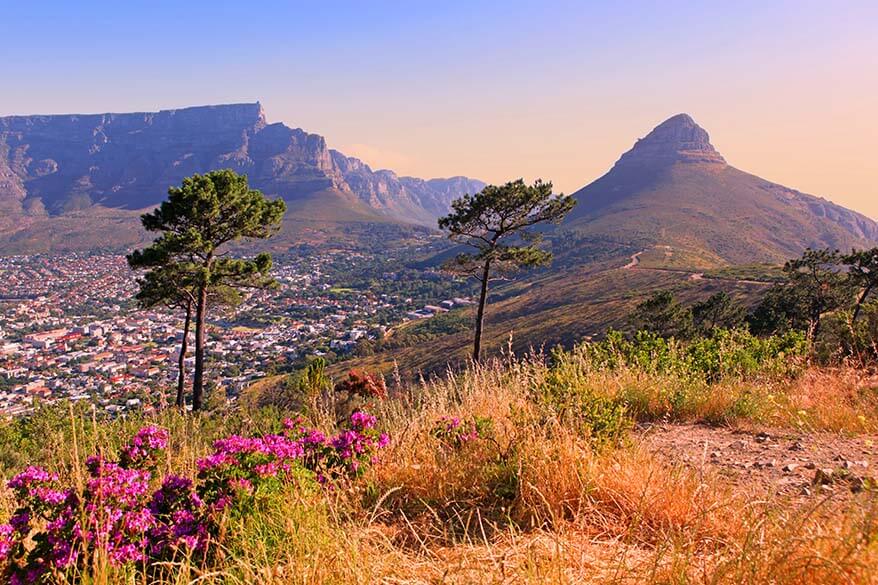
2. Cape Peninsula
Together with Cape Town, Cape Peninsula is one of the most impressive regions of South Africa. This is one of those places that you really don’t want to miss!
The absolute highlights of the Cape Peninsula include Cape of Good Hope and Cape Point and the stunning 12 Apostles coastline from Camps Bay to Hout Bay and further south along Chapman’s Peak Drive .
Not to be missed is Simon’s Town with Boulder’s Beach penguin colony (yes, you can see wild penguins in South Africa!) and also an ocean walkway from Muizenberg to Kalk Bay via St. James beach is really nice. Groot Constantia wine region in Cape Peninsula has spectacular scenery and some of the best wines in South Africa.
Also, in Hout Bay you can take a boat to see a seal colony – it’s called Duiker Island , but most people just refer to it as Hout Bay Seal Island. This is a very popular tourist attraction, so you may want to book in advance. For a more unique experience, you can even go snorkeling with the seals .
TIP: One day is hardly enough to see the highlights of Cape Peninsula. So if you can, try to spend at least a few days in this area. I recommend at least a week for Cape Town and Cape Peninsula, with 3-4 days being an absolute minimum.
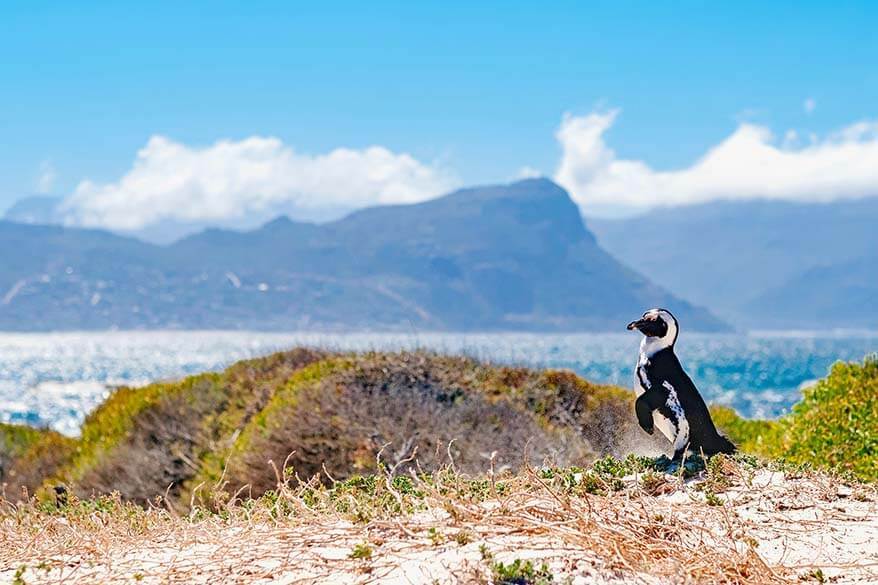
3. The Garden Route
Another absolutely amazing region, the Garden Route is one of those places you really have to see in South Africa as well. This +-200km stretch between Mossel Bay and Stormsrivier is one of the most scenic routes in the world, but you have to take the time in order to truly appreciate it.
You could drive the Garden Route in just half a day, but you won’t see much just by sitting in the car. So ideally you take at least a couple of days to explore this area.
Some of the nicest places along the Garden Route are Storms River and Tsitsikamma National Park , Robberg Nature Reserve , Plettenberg Bay , the whole area around Knysna (don’t miss the Heads and the Featherbed Private Nature Reserve!), Wilderness , and the beautiful coastline along the entire route.
Oudtshoorn , famous for its ostrich farms and Cango Caves , is a bit out of the way from the rest, but it’s also considered as part of the Garden Route. Well worth a visit.
TIP: If you are traveling with kids or if you just love wildlife, don’t miss Monkeyland and Birds of Eden (both just next to each other). Plettenberg Bay Game Reserve is a great place for a family-friendly safari along the Garden Route and Knysna Elephant Park is one of the best ethical places to interact with elephants in South Africa.
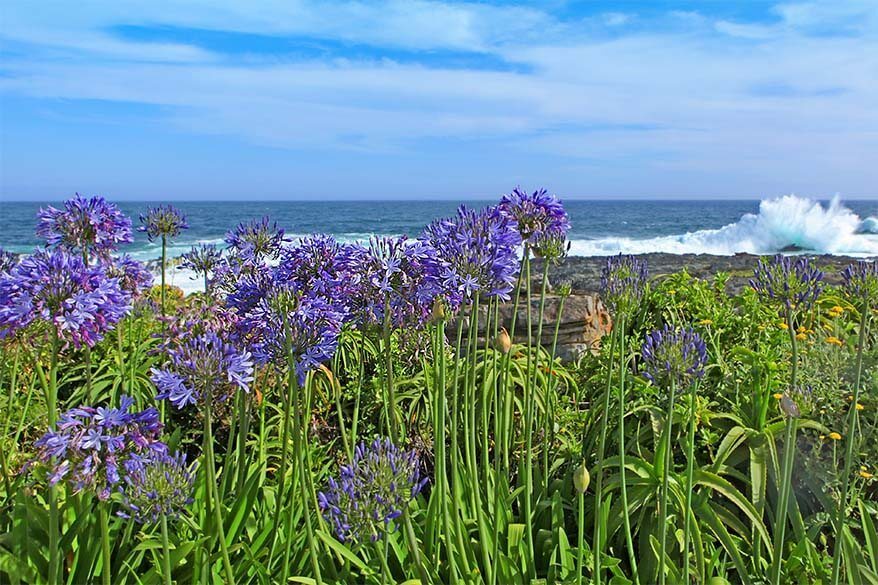
4. Kruger National Park
Without any doubt, Kruger National Park is one of the best-known places to visit in South Africa. If you want the best wildlife safari experience in South Africa, then Kruger NP is definitely the place to be.
Kruger is the oldest and also the biggest National Park in South Africa. To give you an idea, with 2,000,000 hectares (20,000 km 2 ), it’s about the size of Israel or the state of New Jersey. In other words, Kruger NP is huge! Ideally, you plan to spend at least 2-3 days in Kruger NP and make several game drives.
Hundreds of animal species call Kruger home and it’s also the best place to see the Big 5 in South Africa. The Big 5 refers to five most difficult African animals to hunt on foot: lion, leopard, elephant, rhino, and Cape buffalo. Hunting is really not cool anymore, but this term is widely used as a sort of ‘5 must-see African animals’ list.
There are 101 ways to explore Kruger National Park. You can opt for one of the many luxury lodges and private safari rides , organized day tours , or you can drive and explore Kruger NP with your own car. No matter which way you choose to explore Kruger National Park, it’s a place that you really must see in South Africa!
If you have never been on a safari before, please check our ultimate guide to safari in Africa .
TIP: Combine a visit to Kruger National Park with the nearby Panorama Route and Blyde River Canyon (see below).
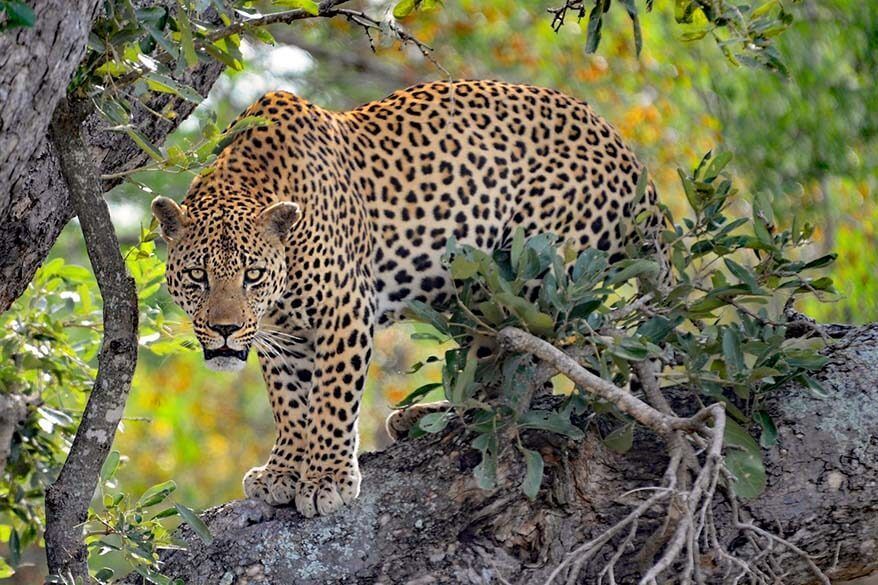
5. Blyde River Canyon & Panorama Route
Blyde River Canyon is one of the most beautiful natural landmarks of South Africa. It’s also one of the largest canyons in the world. Due to its proximity to several main entrances of Kruger National Park, Blyde River Canyon Nature Reserve and the whole Panorama Route make a very popular day trip in the area.
Together with Kruger NP, Blyde River Canyon is one of the most popular tourist attractions in northern South Africa.
Start your day with breakfast at the famous Harrie’s Pancakes in Graskop . Then head north to the Pinnacle , God’s Window , and Wonder View . Further highlights of the Panorama Route include Lisbon Falls and Berlin Falls , also Bourke’s Luck Potholes , and Lowveld viewpoint . But the most impressive of them all is the Three Rondavels viewpoint . The scenery here is simply spectacular!
Three Rondavels was one of the first places we visited just after arrival in South Africa and that image stayed with us forever. It was here that we fell in love with this amazingly diverse country and realized that it has so much more to offer than we ever imagined… Don’t miss if you are visiting Kruger NP and have a day to spare!
If you have more time, you can also consider a visit to the Echo Caves or a small museum-town called Pilgrim’s Rest.
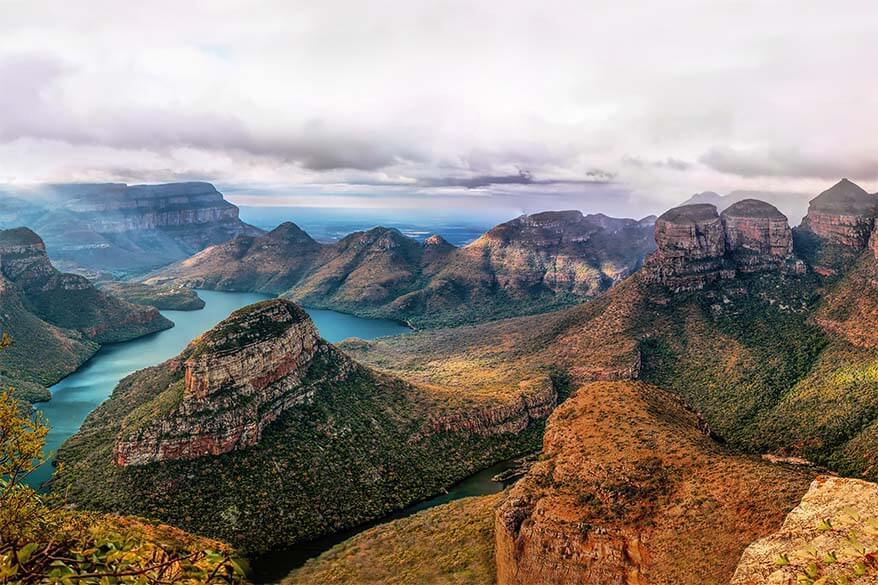
6. Hermanus
Hermanus is my husband’s favorite place in South Africa, one we always wish we had stayed longer at…
The town itself isn’t that special, but its coastline is second to none! Grab a picnic and explore the beautiful coastal walking path. The bay near Hermanus is known as the best place to see whales and dolphins in South Africa and it definitely lives up to its reputation!
You can take a whale watching boat tour and get really close to these majestic animals, but you can usually also see them from ashore. Both experiences are very different and each special in their own way. I really recommend both – taking the boat tour and also walking the coastal route in Hermanus and watching whales and dolphins from the shore.
Please note that whales are not always around. The best time to see whales in Hermanus is between June and December, but some years they arrive earlier or leave later, so you just never know.
We have been on many whale-watching tours all over the world, but nowhere did we see so many whales from so close by as in Hermanus. There were tens of whales just meters away from our boat… We also saw hundreds of dolphins while walking along the coast. It sure is one of the best places to go whale – and dolphin-watching in the world.
TIP: Nearby Gansbaai is also a beautiful place with a stunning coastline and a good chance to see the whales. It’s not as well known and therefore much less visited than Hermanus, but it’s a perfect place to visit for those who have more time in the area and looking to discover some off-beat hidden gems.
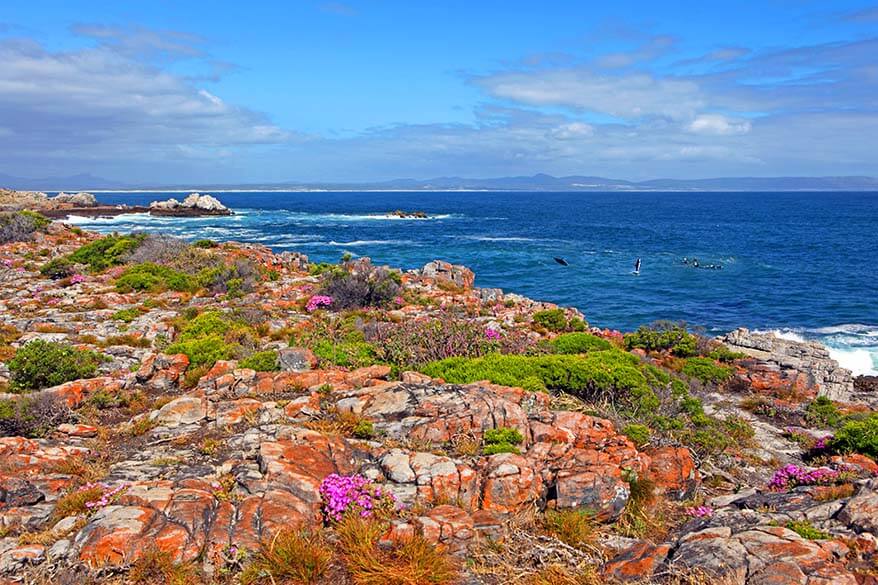
7. South Africa Wine Region: Stellenbosch and Franschhoek
South Africa has become world-famous for its wines and the best region to see the wineries and taste some wines is the beautiful area between Stellenbosch, Paarl, and Franschhoek.
This wine region is just a short drive from Cape Town and is therefore really easy to visit, even if you only have limited time in South Africa.
Stellenbosch and Paarl are bigger towns and I’m not sure if they are worth a visit, but the nearby wineries and the surrounding scenery is a must. We loved the quaint little Franschhoek town with its white buildings, hilly landscapes, and a very cozy atmosphere. Such a beautiful region – a place you have to see in South Africa!
TIP: Don’t drink and drive! If you are staying in Cape Town, you can visit the wine region with an organized day tour. Here is one of the best-rated and most complete wine region tours from Cape Town that I was able to find.
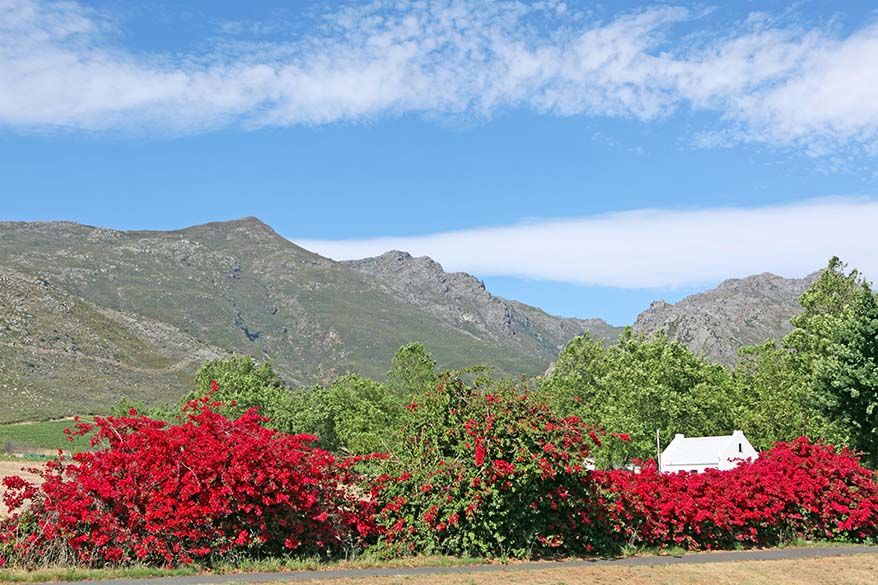
8. Cape Agulhas – Southernmost Tip Of Africa
Cape Agulhas, the Southernmost place in Africa , is so far from every other landmark in South Africa and main tourist routes that it doesn’t get the attention it deserves. But what a beautiful and unique place it is!
Standing at this point where two oceans meet you truly feel like you’ve reached the end of the world…
The best way to visit Cape Agulhas is by making a stop there on your way from Cape Town to the Garden Route (or vice versa). We once did it in a day, just stopping there when driving from Knysna to Cape Town, but it was a really long drive.
TIP: I suggest that you break the drive and either stay in Cape Agulhas or in the area around Hermanus or Gansbaai for one night.
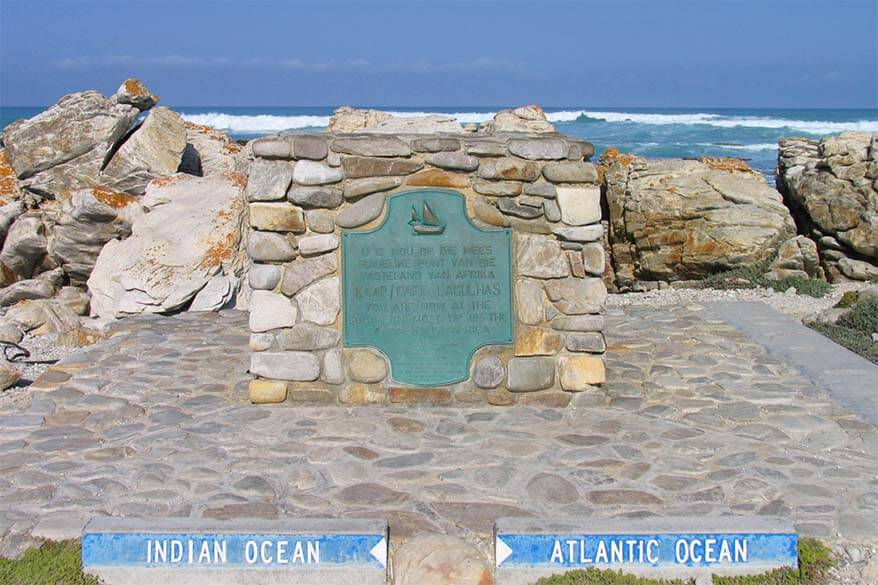
9. Drakensberg
Another wonderful region a bit off the beaten tourist path in South Africa is the Drakensberg mountains . The Dragon Mountain is a +-200km mountain range between the Kingdom of Lesotho and KwaZulu Natal province in South Africa, a few hours drive from Durban.
The region is known for its incredible vistas, countless waterfalls, mountain streams, rock pools, caves, and tranquil scenery pretty much undisturbed by human development. The Drakensberg is the highest mountain range in South Africa and if you visit here in the winter (July) as we did, be prepared for the freezing cold temperatures at night.
Theoretically, you could visit the Drakensberg region just for a day, but ideally, you spend at least a couple of days here. There is a wide range of outdoor activities available, such as hiking or golf to mention just a few…
TIP: If you stay close to the Underberg area (we stayed at this hotel ), you can pop over the border and visit Lesotho for a day ( day tours are available too).

10. Addo Elephant National Park
If you are looking for a malaria-free family-friendly safari experience in Africa, Addo Elephant National Park is one of the very best places to do that.
South Africa’s third-largest National Park is located in the southern part of the country, close to Port Elizabeth and just a few hours drive from the Garden Route.
As the name suggests, Addo Elephant NP is a perfect place to see wild elephants. This park is home to over 600 elephants and they are all around. Many other African animals live here as well and if you are really lucky, you may even get to spot The Big 5…
TIP: You can easily explore the park on a self-drive safari. But – as always – a guided open-jeep safari tour will give you a very different experience. If you come here for a few days and have your own car, I suggest you do both – visit the park on your own but also book at least one safari ride.
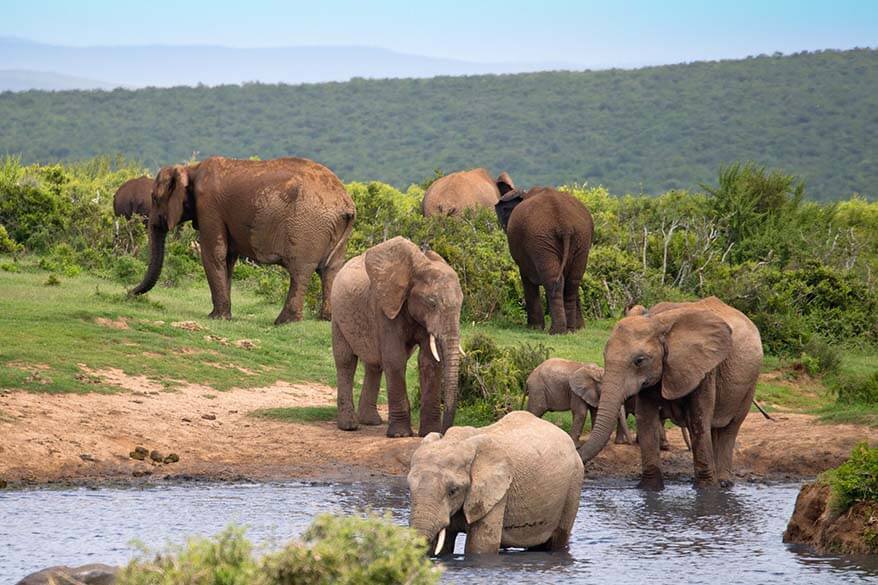
11. iSimangaliso Wetland Park
Listed as a UNESCO World Heritage Site, iSimangaliso Wetland Park has a lot to more to offer than it looks at first sight. It’s not that widely known and definitely not one of the main tourist attractions in South Africa, but it’s well worth a trip.
iSimangaliso Wetland Park has it all: beautiful scenery, unique landscapes, white-sand beaches, snorkeling, diving, and lots of wildlife. You can expect to see rhino, zebra, buffalo, troop baboons, wildebeest, and even elephants, to name just a few…
One of the main reasons tourists visit this area is to see hippos in the wild. iSimangaliso Wetland Park is a paradise for water-loving animals and is, therefore, one of the best places to see hippos and crocodiles in South Africa .
TIP: You can visit the park by car, but if you really want to get close to the hippos and the crocodiles in a safe way, it’s best to book St. Lucia estuary boat tour . The boat tour takes just two hours, so you can spend the rest of the time self-driving and exploring the park.
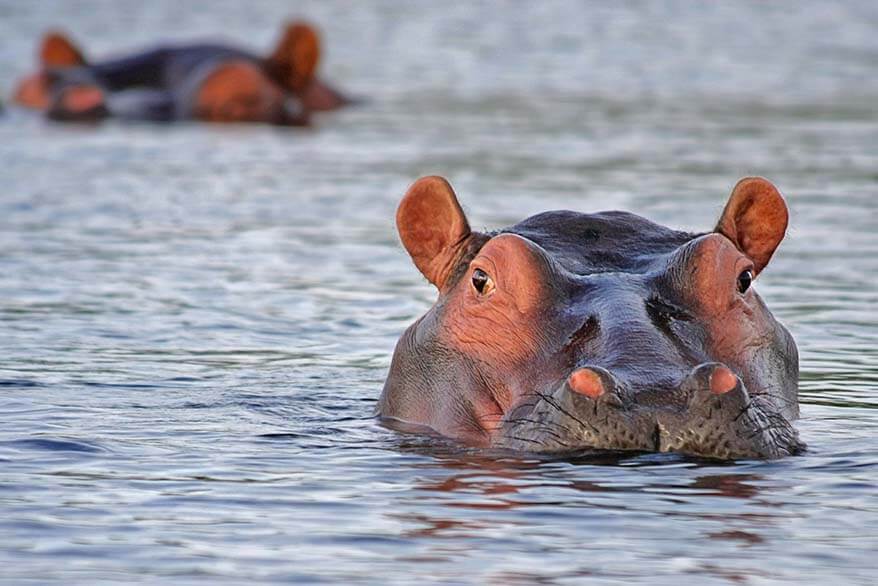
12. Pilanesberg National Park
Just over 2 hours drive from Johannesburg, Pilanesberg National Park is probably one of the easiest and best-accessible places for a wildlife safari in South Africa.
Pilanesberg Game Reserve is set in an extinct volcanic crater, where the soil is rich with grasslands, perfect for wildlife. A man-made lake, Mankwe Dam, is used as a drinking waterhole – a perfect place to see African animals.
Wildlife here includes zebras, lions, elephants, rhinos, leopards, and many other species. Because the park is rather small, it’s quite easy to find the animals, even if you come here just for a few hours.
TIP: You can visit Pilanesberg National Park as a day trip from Johannesburg , but if you have some time to spare, stay a few days. If you like places like Las Vegas in the US , don’t miss the nearby Sun City with entertainment for young and old.
From luxury resorts and casinos, waterparks and golfing, to outdoor activities, wildlife viewing, and even hot air balloon safari – this area truly has it all.
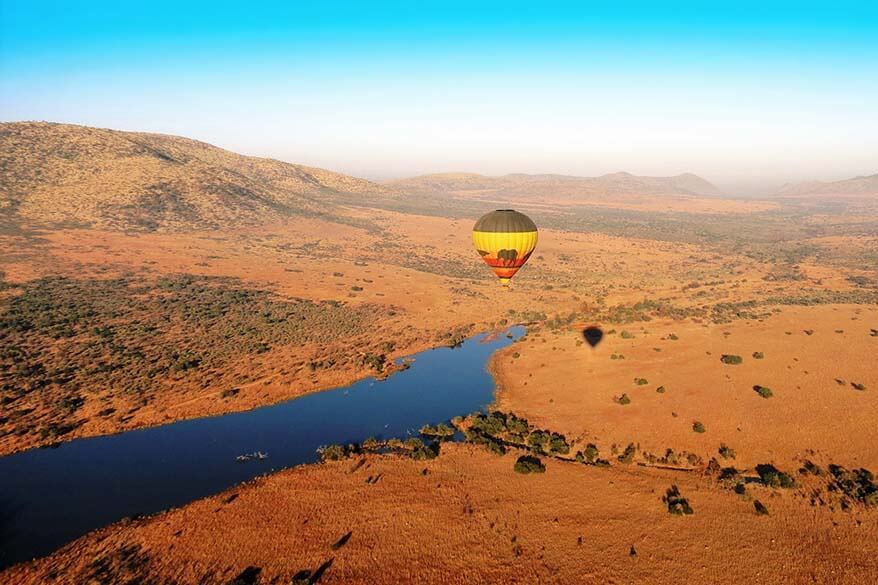
13. Hluhluwe-iMfolozi Park
One can never have too many safari experiences in Africa, right? So if you are visiting St.Lucia/Durban area, then I really recommend a day trip to Hluhluwe-iMfolozi Park .
This park is not as well known as Kruger and the other National Parks mentioned above, but it’s just as beautiful and offers amazing wildlife viewing. Africa’s Big 5 live here and, of course, many other animals.
TIP: You can visit this park on a self-drive safari or take a guided safari tour from Durban . If you want to make the best of your short time, you can also opt for a tour that combines Hluhluwe and iSimangaliso Wetlands, mentioned above.
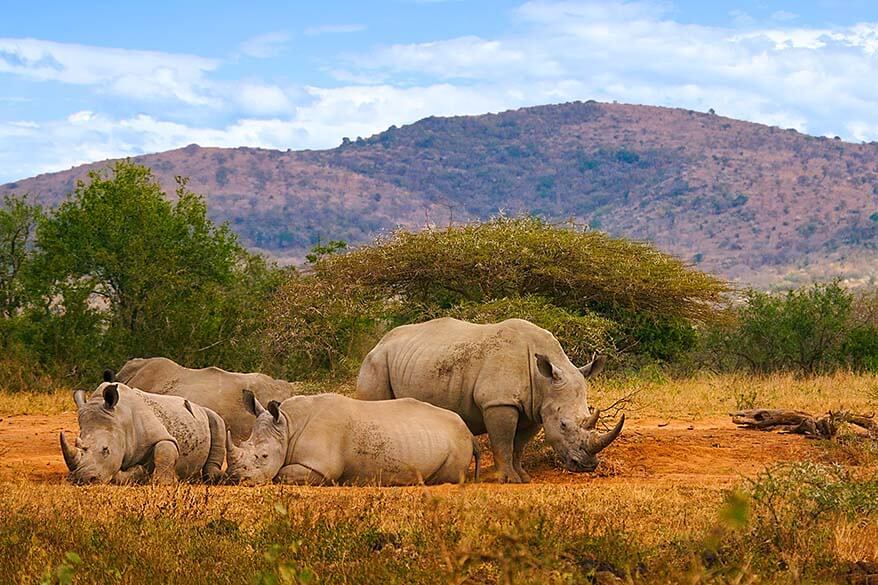
14. West Coast National Park
Just an hour drive north of Cape Town, West Coast National Park is the locals’ favorite, so if you come in a warm season, expect it to be busy. This park has beautiful beaches, stunning coastlines, scenic hiking trails, wildlife, and lots of wildflowers.
Springtime (August – September) is the best time to see the flowers and the park might be even busier than usual.
West Coast National Park is considered a real jewel. It’s not a must-see in South Africa if you are short on time, but if you are staying in Cape Town and have a day to spare, definitely check it out!
TIP: There aren’t many facilities here; it’s all about nature. So if you come for a day, make sure to bring some food and plenty of water.
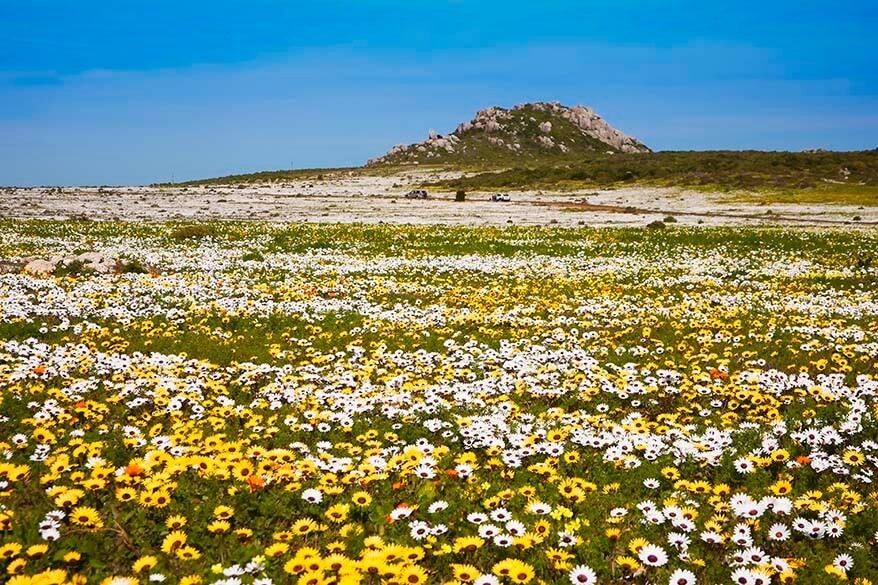
Durban is considered one of the cities that you should see in South Africa. We found that there were better ways to spend our time in South Africa than visiting its cities… so we didn’t stay in Durban longer than necessary. Just in case you wonder, Cape Town is a whole other story, one city you have to see.
Nevertheless, if you are traveling in this area, you shouldn’t miss Durban. One of the best things to do here is go to the beach and stroll the Golden Mile , visit UShaka Marine World or Durban Botanic Gardens .
Durban is also a good base for a day trip to the earlier mentioned Hluhluwe-iMfolozi NP and iSimangaliso Wetland Park, and also to the Drakensberg mountains. A really interesting thing to do in Durban is also this Shakaland and Zulu culture day trip .
TIP: If you are short on time, fly from Durban to Port Elizabeth or Cape Town – it will save you lots of driving.
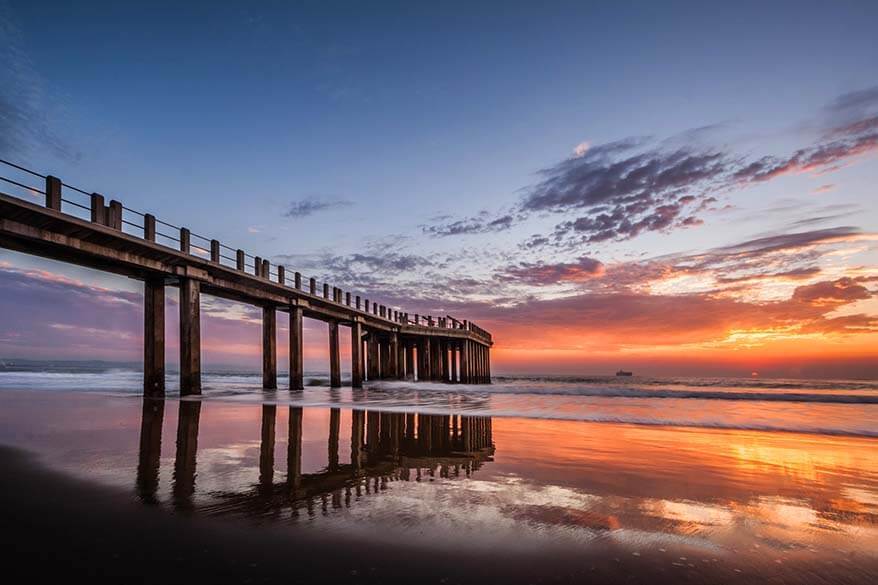
16. Johannesburg
The largest city in South Africa, Johannesburg’s history goes back to the 19th century. It’s hard to believe that this bustling city with a population of 1 million started as a gold-mining settlement.
If you want to learn about South Africa’s long part to democracy, then don’t miss Soweto township ( go with a guide! ) which was once home to Nelson Mandela and also Desmond Tutu.
Must-see in Johannesburg is the Apartheid Museum and Constitution Hill , a former prison complex. Mahatma Gandhi, Nelson Mandela, and tens of thousands of others were imprisoned here at some point in South Africa’s turbulent history…
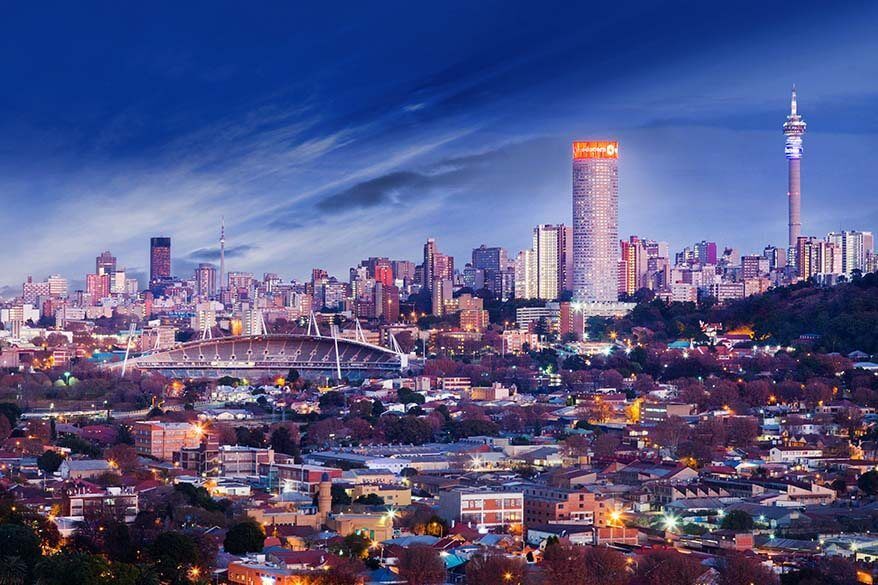
17. Namaqua National Park & Namaqualand
Namaqualand and Namaqua National Park , close to the Namibian border, are so far from all the other tourist attractions in South Africa that you’ll hardly ever see it mentioned as one of the best places to visit in the country. It’s actually more of a hidden gem of South Africa.
Come spring and the dusty valleys are transformed into a magical wildflower wonderland. The whole area is covered in colorful flower carpet, attracting local visitors and international tourists alike.
If you are visiting South Africa in August-September and feel like getting off the beaten path, you may want to include this unique region in your itinerary.
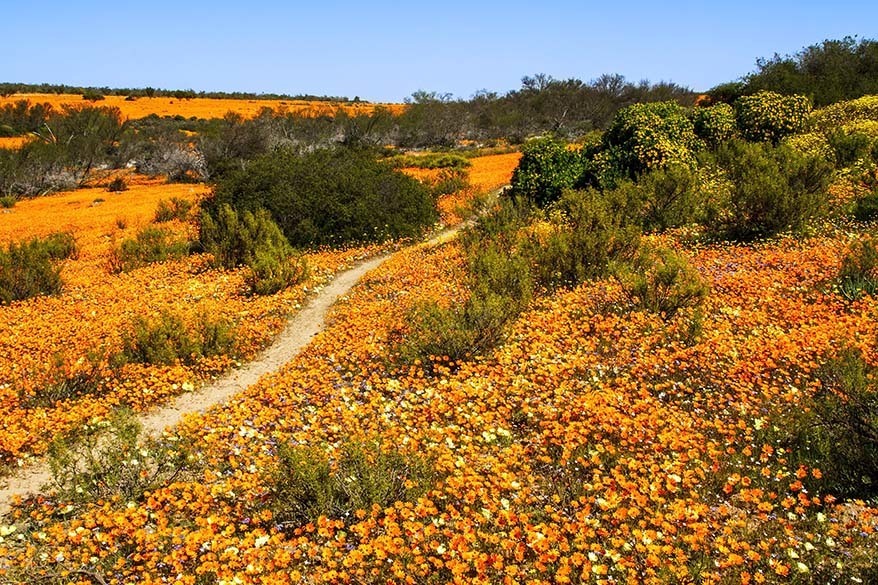
Best places to visit in South Africa on the map
In order to help you plan your trip to South Africa and visit as many of the highlands as possible, I created this map indicating all the places mentioned in this article. This way you can get a better idea of where everything is located and plan accordingly.
How to use this map: Use your computer mouse (or fingers) to zoom in or out. Click on the icons to get more information about each place. Click the arrow on the top left corner for the index. Click the star next to the map’s title to add it to your Google Maps account. To view the saved map on your smartphone or PC, open Google Maps, click the menu and go to ‘Your Places’/’Maps’. If you want to print the map or see it in a bigger window, click on ‘View larger map’ in the top right corner.
So, this is our list of the most beautiful and trip-worthy places to visit in South Africa . If you are wondering where to go and what to see in South Africa, now you should have a much better idea.
South Africa Travel FAQ
Here are some of the popular questions our readers ask about visiting South Africa:
South Africa is a year-round destination and every season has something to offer. The best time to see wildlife in Kruger National Park is the dry season between May and October. Whereas the best time to visit Cape Town and the Garden Route is between September – November and from March to May.
South Africa is huge and there are so many beautiful places to see. But if you have to choose just one area to visit, we recommend Cape Town and Cape Peninsula.
South Africa is not the safest place to visit in the world and the crime rate is quite high. That being said, if you are cautious, aware of your surroundings, and do not take unnecessary risks, crime against tourists is really not that common. We visited South Africa several times, also with kids, and we never experienced any problems.
No, South Africa is not an expensive destination. The biggest cost or the trip is the flight to get there. Accommodation, food, and activities are quite cheap in South Africa. But – as everywhere in the world – a lot depends on the choices you make and mostly on the accommodations that you choose.
2 weeks is the minimum time if you want to see the most beautiful places of South Africa. If you have about 10 days, spend 3 days in Kruger NP and fly to the south of the country for the rest of the trip. If you have 1 week or less, it’s best to concentrate on just one area – either Kruger NP and surroundings or Cape Peninsula and the Garden Route.
TIP: When planning a trip to South Africa, make sure to also check our South Africa itinerary . It contains most of the highlights of South Africa from this list and shows you how to see all the best places in just two weeks. Check it out – it will help you plan a trip of a lifetime!
And if you are traveling with a family, check out this guide for more info on what to expect and where to go when visiting South Africa with kids .
If you found this post helpful, don’t forget to bookmark it and share it with your friends. Are you on Pinterest? Pin these images!

This site uses Akismet to reduce spam. Learn how your comment data is processed .
Sunday 30th of October 2022
Hi, South African here living in Jhb. A must is Oribi Gorge Southern KWAZULU-NATAL, if planning a Durban trip. I love traveling my country as well as other African countries.
We just got back this September from a road trip to Etosha National Park, Namibia. As always we absolutely loved it.
Sunday 6th of November 2022
Thanks for the additional tip and happy travels, Vennie!
Sunday 18th of September 2022
This is so helpful! I will definitely go to South Africa someday. Thank you so much!
Monday 19th of September 2022
Glad to hear that. Hope you can visit South Africa one day - it's a wonderful country!
Wednesday 4th of May 2022
Thanks Jurga! This is a great source of information. Just planning a three week trip to South Africa for December 2022. My first trip to South Africa since 1991. You've given me plenty of ideas for my itinerary.
Oh, lucky you! We're also contemplating another trip to S-A soon. Good luck with the planning and have a great trip! PS We also have a guide with a sample 2-week South Africa itinerary - check it out. You could build on it if you want to visit all these places and add more since you have 3 weeks.
Tuesday 22nd of March 2022
Thanks for sharing such a beautiful informative information on the blog. I have read your other posts which are all really informative for any traveler before arriving South Africa.
Wednesday 23rd of March 2022
Glad to hear you found our guides useful. Happy travels!
Thursday 10th of February 2022
The end of this month I am going to travel to South Africa by myself. I am 21 years old and I am from the Netherlands. The first 2 weeks I am going to work at an Baboon orphanage center in Phalaborwa, which is next to the Kruger National Park. In these two weeks I will have some free time to visit the Kruger Park on a safari. After the two weeks I have 4 weeks to travel by myself to see other beautiful places in South Africa, and stay in hostels etc. My idea is to take a flight after the two weeks from Hoedspruit airport to Durban or Kaapstad, and then stay there for a while and see other nice places. Do you guys have any tips for my journey?
Kind regards,
Friday 11th of February 2022
Hi Jesse, this sounds like an amazing experience for you! With 4 weeks to travel in South Africa (and already having seen Kruger before), you can see a lot. Durban - Drakensbergen area is nice, but I'd definitely try to spend more time in the south - the Garden Route, Cape Town, etc. If you are not renting a car, it will be a bit more difficult to explore outside the cities, but you can find a lot to do in/near them too. If you choose just one place, then Cape Town is really the best option. And you can also take some tours if there are some places you absolutely want to see and can't easily get to on your own. Hope this helps a bit. Have a great time in South Africa!
10 things to know before traveling to South Africa
Sep 4, 2023 • 9 min read

Make the most of your visit to South Africa with these top planning and preparation tips. Fokke Baarssen/Shutterstock
Let’s not beat about the bush: South Africa has a bit of a scary reputation. Much is said about the country’s unenviable crime rate, but so much more can be said about all the things that make this diverse destination so magnificent. You shouldn't let anxiety about possible dangers put you off visiting this amazing African country.
Huge and diverse, South Africa never stops doling out gifts to the traveler – world-class surf breaks , eclectic local cuisine , mountains to climb, cities to visit , tiny towns to hide away in, desert landscapes to photograph and, of course, plenty of wildlife to watch .
The country’s extraordinary variety is both its biggest draw and its biggest challenge, at least when it comes to planning a trip. Much research is needed to decide where to go, what to do and how long to stay. Visiting for less than two weeks is not ideal – three weeks or more would be a better bet if you can manage so much time away.
With tips to help you plan as well as information on health, safety and etiquette, here's what you need to know for a successful trip to South Africa.

1. Carry the relevant paperwork if you’re traveling with kids
If you’re entering or leaving South Africa with a child under the age of 18 , you’ll need to have a few extra bits of paper in your carry-on bag. In a bid to stamp out child trafficking, all minors need to have an "unabridged" birth certificate – that is, one that lists both parents’ names. If only one parent is traveling with the child, you’ll need an affidavit from the other parent confirming that they give consent for the child to travel. The rules keep changing and papers are not always checked, but it’s wise to have the documents on hand just in case.
2. Carry cash, just not too much
While credit and debit cards are widely accepted, there are still a few places in South Africa that only take cash. It’s best to keep a small stash of notes and coins for purchases at corner stores, buying things from market traders and for the various tips you’ll be expected to give throughout the day (more on tipping below).
Of course, it’s not wise to walk around with large wads of cash on your person, so keep the bulk of your money hidden away in the hotel safe, or withdraw modest amounts from ATMs while you are out and about. Be wary of using ATMs on the street; theft and card scams are common, so it’s best to stick to machines inside malls or banks.
3. Buy a South African SIM card and use local Wi-Fi
Public Wi-Fi is fairly easy to find in larger cities and more touristed towns, but if you’re planning on wandering far from the main population centers, it’s worth picking up a South African SIM card on arrival at the airport. The card costs just a few rand, but like pretty much everything in South Africa, it does come with a bit of paperwork. You’ll need to “RICA” your SIM card – a fairly simple registration process that requires a photo ID and confirmation of your address in South Africa (a simple booking confirmation will suffice).

4. If you really want to see SA, you need to rent a car
There's no sugar-coating it – public transport in South Africa often falls short. Long-distance bus services exist but routes tend to bypass many smaller destinations, and fares can be expensive for shorter hops. Long-distance trains are unreliable, and hitchhiking is most definitely not recommended. If you really want to see the country, you’re going to have to rent a car. Fortunately, there are plenty of fantastic road trips to choose from, and all the big car hire companies are represented in South Africa – just be sure to book ahead, especially if you’re traveling in the November to March peak season .
5. Be more cautious when driving in cities
When I first moved to South Africa, there was so much talk of carjackers that I expected to find balaclava-clad people lurking at every intersection waiting to appropriate my vehicle. I remember panicking at the gas station because I had to lower the window to pay, then passing my cash through an inch-high gap before driving away, stressed and sweating.
These days I often drive with the windows down, but I do approach "robots" (the local term for traffic lights) with caution, always leaving a car-length gap in front of me just in case I need to make a quick escape. Be cautious while driving, but not paranoid. Keep your doors locked and be extra vigilant when driving at night, keeping your windows up and your wits about you.
6. Listen to the locals (but be ready for a little exaggeration)
Local advice is always important, particularly in countries that have a reputation for crime and social problems. In South Africa, the host at your accommodation is a good person to ask about the best bars or restaurants, how to get around and which areas to avoid.
Just be aware that there are many awesome attractions found in areas that South African locals – particularly older locals – wouldn’t consider visiting. Once, while staying in a guest house in suburban Durban, I asked the owner if there were any places to avoid and she replied “The CBD” (city center), which would have cut my sightseeing rather short. South Africans have a tendency to exaggerate the danger posed by crime – it’s almost a part of the national psyche, and a favorite topic of conversation. You might have to do a bit more research to sort out the worthwhile warnings from the sometimes-inevitable scaremongering.

7. Be prepared to tip
South Africa has a strong tipping culture. In many customer-facing industries, salaries are low and workers make much of their money from tips. Restaurant staff will expect a top of around 10%, but leaving 12–15% will generate bigger smiles. Drivers never pump their own gas in South Africa; you’ll be expected to pay at least R5 to the person filling your tank, or R10–20 if the attendant also checks your tires, oil or water.
Then there are South Africa’s informal parking attendants. While larger cities and towns have areas with pay-as-you-go street parking, in most places, you can park at the side of the road for free… sort of. Ubiquitous car guards will offer to keep an eye on your car while you’re away, and they come in a range of helpfulness levels.
Some will go the extra mile, stopping traffic to help you back out into a busy street. Others are opportunists who approach as you pull out your keys, claiming they were keeping a close eye on your car while you were shopping. Reward car guards according to the service they provide – a R5 coin is the standard thank you but R10 is more appropriate for someone who provided a more useful service.
8. South African English takes some getting used to
While there are 11 official languages in South Africa, you’ll almost always find someone who speaks English, unless you’re in a remote rural area. There will still be a few local phrases that trip you up. One thing that often baffles foreigners is the (extremely liberal) use of the word “shame.” It’s a versatile word in South Africa. A cute child fell asleep in the car? Shame. A close family member passed away? Shame. Busy week at the office meaning you couldn’t make Friday drinks? Shame. The word is often preceded by the utterance "ag" and followed by the word "man." So the phrase "Ag, shame man" can mean anything from “awww” to “Oh no, that’s terrible!”
Also frequently used is the word “hectic.” While it can be used to discuss a particularly busy intersection, it could also be used to describe a ridiculously tall building, a very long line at the bank, an insanely windy day or a particularly large baby being born. In South Africa, hectic doesn’t really mean busy – it usually means "wow."

9. Expect lots of talk about politics and power outages
Certain subjects are off-limits in every country, but in South Africa, politics is not one of them. Everyone has an opinion on the government’s latest endeavors, whether that’s discussing the abundance of potholes, the latest corruption scandal or – more often than not – the government's failure to provide (electrical) power to the people. You'll very quickly become familiar with the inconvenience of what locals call "load-shedding."
Basically, load-shedding is a never-ending series of planned power outages designed to take pressure off the ailing electricity grid. Cities and towns are split into zones, and depending on the severity of the load-shedding, you might end up without power for anything from two to 12 hours a day. There are eight "stages" of load-shedding, broken up into two-hour slots. Larger hotels won’t be affected thanks to backup generators, but if you’re staying in a guesthouse, hostel or private home, you are bound to encounter load-shedding at some point in your stay.
Many places come equipped with fail-safes such as emergency lights, backup power for fridges and Wi-Fi hubs, and sometimes generators big enough to power the whole property. Your host will likely give you daily updates on when the power will be off, or there’s a handy app – EskomSePush – that has all the details and comes with a handy warning notification.
10. Driving in the emergency lane is standard practice
While greetings, table manners and general day-to-day etiquette in South Africa should largely be familiar, the way South Africans drive can be a bit of a culture shock for visitors. One of the most idiosyncratic rules of the road is “yellow line driving” – many roads are single-lane highways, and enterprising drivers often use the emergency lane (hard shoulder) as a backup.
If you’re on a highway and a driver behind you indicates that they want to get by, you'll be expected to briefly move across the yellow line into the emergency lane to let them pass. If you don’t, you’re likely to find yourself privy to another favorite local driving habit: tailgating. Drivers will usually flash their hazard lights in thanks as they pass, but be aware that obliging drivers aren’t the only thing to be found on the hard shoulder. Always make sure there is good visibility before you pull over, for around the next corner you might find a troop of baboons, a stray cow or a bunch of school kids walking home.
This article was first published May 17, 2023 and updated Sep 4, 2023.
Explore related stories

Destination Practicalities
Mar 30, 2024 • 4 min read
Who wouldn't jump at the chance to visit the Emerald Isle? Here’s how to check if you need a visa before setting off on your Irish adventure.

Mar 19, 2024 • 6 min read

Mar 10, 2024 • 5 min read

Feb 27, 2024 • 6 min read

Feb 20, 2024 • 17 min read

Jan 17, 2024 • 8 min read

Dec 14, 2023 • 2 min read

Nov 30, 2023 • 5 min read

Oct 27, 2023 • 8 min read

Oct 21, 2023 • 5 min read

The 12 Best Guidebooks for South Africa Travel

Even though I am South African, travel guides are helpful for information on sights and attractions I may not even have been aware of! When travelling to or throughout South Africa, having a travel guidebook can help make planning your trip and itinerary easier. In this article, you will find a selection of the best guidebooks for South Africa travel you can use to plan your South Africa trip, map your itinerary or for inspiration.
If you want to avoid purchasing a South African guidebook, check your library, as they may have some of these books, and you can access them for free.
Best Guidebooks for South Africa Travel
An excellent travel guide can assist you in making the most of your South Africa trip. They help you see options for sights and attractions and details about different destinations. Here is a list of the best guidebooks for South Africa.
South Africa Travel Guides for Children
If you have children, it is essential to plan your trip well to include activities that interest them and teach them about South African cities , history and culture. It also helps you to explain the history of sights before arriving there, which may help them be more excited to visit the sight.
Travel guides that focus on children’s interests are scarce. Most travel guides focus on adults and may mention child-friendly attractions. This is unfortunately also true for South African travel guides for children. In fact, I could not find a single South African travel guide for children and could only find a few, such as this one: A Travel Journal For Kids South Africa .

This travel journal features more than 100 pages with illustrations for your kids to colour, paint, doodle or sketch. In this journal, they can also make notes about their travel to South Africa. The journal contains ideas for games you can use to keep your kids busy while driving South Africa’s beautiful roads to avoid boredom. It has double pages for each day of travel, and your kids can provide details about the destination they are visiting, its weather, what they saw, ate, and what the highlight was for them. The journal allows for 40 days of travel, which should be sufficient for most visits to South Africa.
DK Eyewitness South Africa (Travel Guide)
DK Eyewitness Travel Guides typically have beautiful photos and illustrations, which applies to the DK Eyewitness South Africa (Travel Guide) ! This travel guide gives you an overview of South Africa and the destinations you can visit.

The South Africa Eyewitness Travel Guide book starts with an overview of what you can discover in South Africa. Here, they cover the reasons to love South Africa , explore South Africa, get to know South Africa, a short history, a year in South Africa and give sample itineraries for your South Africa travels.
This is followed by a field guide covering South Africa’s habitats, conservation, terrain and flora and an animal directory. The next session in the Eyewitness Travel Guide South Africa focuses on the experiences you can have in the different South African provinces . It also includes Lesotho and Eswatini , two countries in or near South Africa. The last section covers all you should know before visiting South Africa, such as getting around and some practical travel information.
This book has everything you need to plan a wonderful trip to South Africa!
Lonely Planet South Africa, Lesotho & Eswatini
I love using Lonely Planet travel guides; they are my go-to guides for any destination I visit. For me, this is one of the best guidebooks for South Africa travel!

This travel guide has been updated after the COVID-19 outbreak to ensure it contains updated information about businesses and sights. It covers the top experiences in South Africa, new cultural trends and ideas, and planning tools for families with information on planning your trip for children. It also has a passport-sized card with essential information about Wi-Fi, ATMs and transport information to help you plan your journey from landing in South Africa to getting to your hotel.
This book also provides itineraries to help you build your trip based on your needs and interests using their insider tips. The guide includes reviews of restaurants, hotels , and sights. The book contains over 102 colourful maps. It covers all of South Africa’s provinces and also Lesotho and Eswatini. If you are looking for a comprehensive travel guide to South Africa, Lesotho and Eswatini, this is one of the best guidebooks for South Africa!
Fodor’s Essential South Africa: With The Best Safari Destinations and Wine Regions
The Fodor’s Essentials South Africa travel guide is the bestseller on Amazon of all the travel guides focusing on South Africa.

This travel guide includes an illustrated guide about the ultimate experiences in South Africa. It provides several sample itineraries to inspire your itinerary. The book contains over 35 maps to help you find your way around. The book has colour photos to show you what the destinations look like.
Some of the unique topics it covers include hidden gems and unusual accommodations. It also has a special section covering travelling to South Africa with kids. They also provide tools to help you plan your trip and practical tips to help you get around, avoid the crowds and save money. They also provide insights into South Africa’s history and culture with information on the locals, politics, geography, music and cuisine. A unique feature of this guidebook is its sections covering the Winelands, books, movies and series to watch before visiting South Africa and the best beaches.

If you want to learn some words in the South African languages , you will find some essential words and phrases in Zulu, Afrikaans and Swahili. The guide covers the major destinations and sights in South Africa, including Cape Town , Johannesburg , Addo Elephant National Park , the Garden Route , Drakensberg , Durban , Hermanus , Kruger National Park , the Cape Winelands , and Blyde River Canyon .
The Thrifty Traveler’s Guide to South Africa
South Africa is generally an affordable destination for travellers from North America and Europe because of its weak currency. If you want to ensure you maximise your trip at the lowest cost possible, the Thrifty Traveler’s Guide to South Africa can help you achieve your objective.

The author summarises information about South Africa as a country, its climate , location and people. He also provides tips to plan a budget trip to South Africa with options for where to go, what to do, eat and where to stay. He provides information to help you plan a trip to the Kruger National Park , Mpumalanga , Limpopo Provinces, the Garden Route , Cape Town , Western Cape Province , Drakensberg , KwaZulu-Natal and the Northern Cape . There is a chapter focusing on nightlife and entertainment. He also provides details about dating in South Africa.
Insight Guides South Africa
The Insight Guides to South Africa is an in-depth guidebook to South Africa and comes with a free app and ebook.

This is another of the best guidebooks for South Africa travel. This edition of the guidebook covers Johannesburg , Cape Town , national parks and game reserves . Local experts provide insider knowledge. It covers the history and culture of South Africa with a focus on music, food, literature and sport. It has unique features focusing on South Africa’s flora , the Cape wines , vintage train journeys and whale-watching . The book includes maps, beautiful coloured photos, practical travel information and tips to help you plan your trip to South Africa.
DK Eyewitness Top 10 Cape Town and the Winelands
If you want to plan a more focused visit to South Africa and only visit Cape Town and the Wine lands, you will find the DK Eyewitness Top 10 Cape Town and the Winelands book useful.

This pocket travel guide gives you information about the best places to visit in the Cape Town and Winelands region. Inside this guide, you will find sample itineraries for trips of a day, weekend or week. It provides details of the places worthy of a visit, such as the Castle of Good Hope , Groot Constantia Wine Estate , Table Mountain , District Six Museum , Company’s Garden , Kirstenbosch National Botanical Garden , Simon’s Town , the Cape of Good Hope , Boulders Beach , and Stellenbosch . It covers family activities and also activities you can do for free. You will find a laminated, pull-out map of the region and advice for getting around, staying safe and preparing for your trip.
Greater Than a Tourist-Cape Town Western Cape South Africa: 50 Travel Tips from a Local
If you are looking for travel tips from a local, this is a valuable book focusing on the Western Cape. The author lives in Cape Town and can give you insider tips about Cape Town and the Western Cape you won’t find elsewhere.

You will find information about food, cultural experiences, and attractions. The author covers getting around Cape Town and provides tips for visiting local attractions, such as Table Mountain and Lion’s Head . An exciting section focuses on volunteering in the region. The book also covers planning tips.
Fodor’s Essential South Africa: With The Best Safari Destinations
If you are visiting South Africa specifically for a safari experience, Fodor’s Essential South Africa guide is the book for you!
This safari travel guide is one of the best guidebooks for South Africa travel. It includes details to help you plan your safari experience, including reviews of safari camps, tips to help you plan your safari and details of tour companies Fodor recommends. It also includes hotel and restaurant recommendations, colour photos showing you what the experiences look like and sample itineraries to help you make the most of your safari.
Each chapter has a map with a description of the region it discusses and the reasons why you should visit the region. The guide covers the main areas in South Africa, including Cape Town , the Cape Winelands , the Western Cape , the Garden Route , Johannesburg , Durban , Kruger National Park , KwaZulu-Natal , the Kalahari, the Little Karoo , the Sunshine Coast , Mpumalanga and the Drakensberg .
South Africa – Culture Smart!: The Essential Guide to Customs & Culture
South Africa is a fascinating country, often called the Rainbow nation, because of the different tribes, religions and languages . Any trip to South Africa should include cultural experiences, which is where this book helps.

This guidebook covers the land and its people, South African values and attitudes, customs and traditions, making friends in South Africa, South Africans at home, time out and the various activities South Africans enjoy in their leisure time, travel in South Africa, health issues and security. Other topics in the book include a chapter on business in South Africa and communication in South Africa.
South Africa Birds: A Folding Pocket Guide to Familiar Species in the South African Region
This book is perfect if you are a birdwatcher looking forward to seeing South Africa’s many bird species!

This illustrated bird guide for South Africa provides information about more than 140 species of birds in South Africa, Swaziland, Lesotho, Namibia, Zimbabwe, Botswana and southern Mozambique. It includes a map with birding hotspots. This pocket-sized guide is laminated for extra protection.
The Wildlife of Southern Africa: A Field Guide to The Animals and Plants of The Region

This field guide describes more than 2,000 plants and animals found in South Africa. It includes colourful illustrations and maps of the different groups of animals and plants. The comprehensive book covers lower invertebrates, spiders and other arachnids, insects, freshwater fishes, frogs, reptiles, birds, mammals, grasses, sedges, ferns and fungi, wildflowers and trees.
Privacy Overview

16 Top-Rated Places to Visit in South Africa
Written by Meagan Drillinger Mar 7, 2023
Author Meagan Drillinger traveled extensively throughout South Africa in November 2022.
South Africa is a dream destination. There's a reason why this country at the very tip of the African continent is on so many bucket lists . Not only is it stunningly beautiful, but it is packed with culture, history, great restaurants, fascinating people, and an abundance of wildlife.
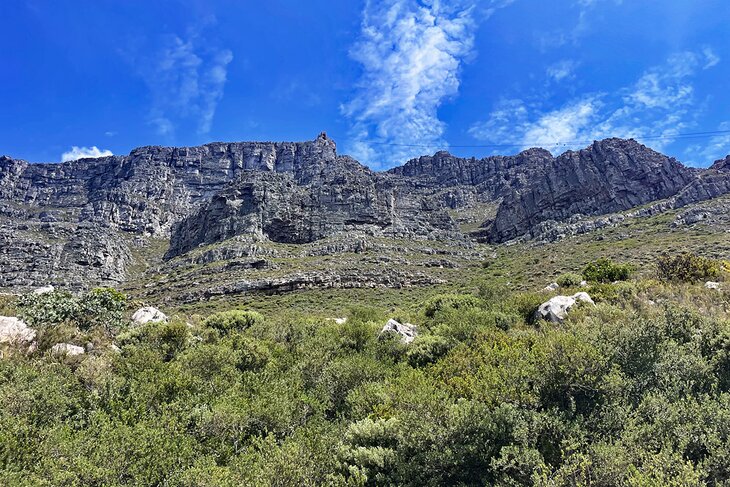
From the rich energy of Cape Town to the history of Johannesburg , the national parks, beaches, mountain regions, and beyond — you can spend a decade visiting South Africa and still not tick off every noteworthy place to visit.
Still, every great journey begins with a single step. So if you're looking to get your feet wet, here are the best places to visit in South Africa.
Kruger National Park
Drakensberg region, stellenbosch and franschhoek, blyde river canyon, mapungubwe national park, plettenberg bay, johannesburg, cradle of humankind, table mountain national park, boulders beach, apartheid museum.
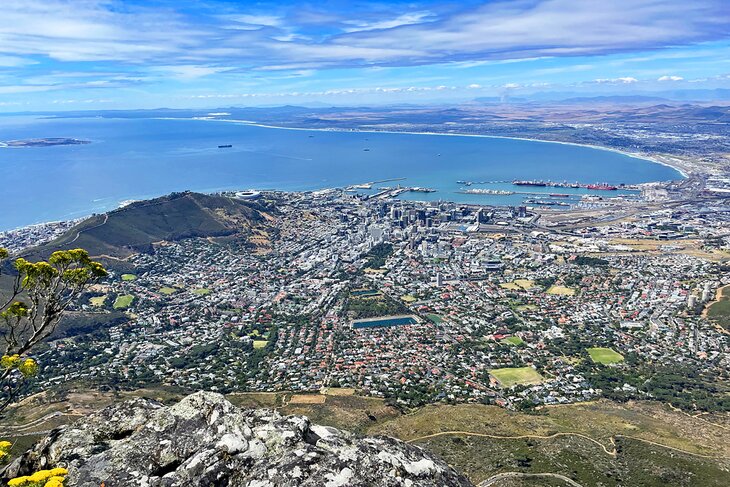
At the very bottom of the continent of Africa is one of the most exciting places on the planet. Cape Town is South Africa's most beloved city, and one of the most naturally beautiful and culturally diverse places in the world. Perched at the very tip of the continent, almost where the Atlantic Ocean and Indian Ocean meet, this city of converging cultures is an absolute must for a visit to South Africa .
Cape Town is, in a word, gorgeous. Nestled at the foot of the spectacular Table Mountain, the historic city has been vitally important in the country's storyline. Today it is the seat of Parliament of South Africa, but over the centuries, it has also been known for its Dutch and English occupation, which subsequently contributed to the historic racial divide and extreme hardships for people of color in the country.
Today, while racial tension is still very much a part of South Africa's story, Cape Town is a bit more integrated than other parts of the country. It's a cosmopolitan, trendy spot with fabulous attractions and restaurants; exciting nightlife; beautiful outdoor adventure opportunities — thanks to Table Mountain National Park and a plethora of beaches — and a sparkling marina that is a center for art, shopping, and entertainment.
Cape Town is, without a doubt, the crown jewel of South Africa and a must for anyone making their way through the country.
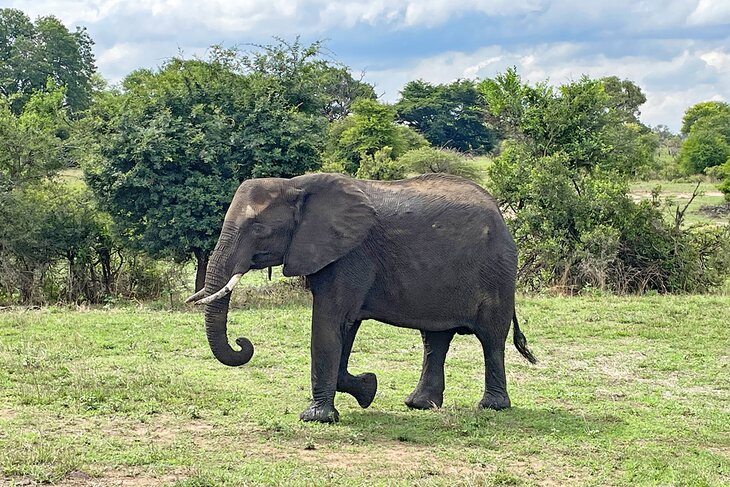
What is a visit to South Africa without a safari adventure? South Africa has nearly 113,000 square kilometers of protected area, and within that area comes some remarkable opportunities for wildlife viewing. Perhaps the best-known place for animal spotting in South Africa is Kruger National Park.
Tucked up in the northeastern corner of the country touching the border of Mozambique, Kruger National Park is almost 20,000 square kilometers of wide-open protected land, home to thousands upon thousands of stunning wild animals.
Among the wildlife you can spot in Kruger National Park are Africa's Big Five: elephant, lion, rhino, leopard, and buffalo. But you'll also be able to see zebras, hyena, giraffe, hippopotamus, warthog, impala, and hundreds of other species.
The most popular way to explore Kruger National Park is on a guided safari tour, of which there are many within the region. Other ways to explore the park include self-drive or staying in a safari lodge within the park.
Kruger National Park has a way to visit that will fit every budget type, too, which makes it one of the most accessible safari experiences in Africa .
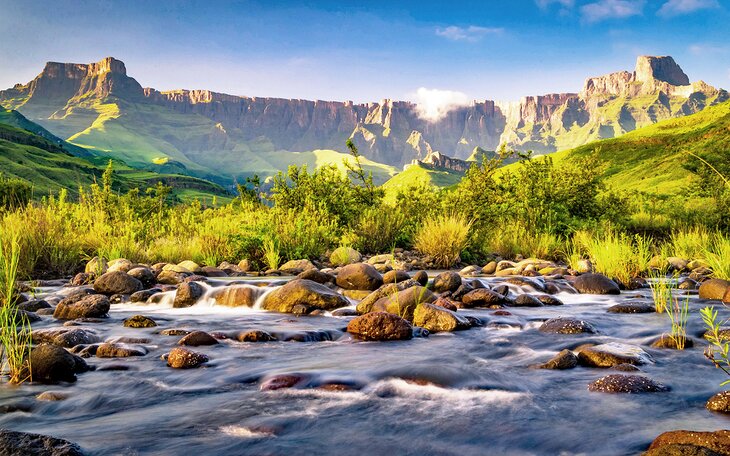
Nothing can quite prepare you for the ridge-backed spine of the spectacular Drakensberg Mountains. Covering more than 700 miles across five of South Africa's provinces, the Drakensberg region is one of the most stunningly beautiful places to visit in all of South Africa.
Hikers and outdoor adventurers will flock to Drakensberg for its miles upon miles of hiking trails, as well as its spectacular scenery. The entire region is packed with wonderful things to see and do, from the Royal Natal Majestic Amphitheatre in the Royal Natal National Park to the plunging waterfalls of Tugela Falls .
The Drakensberg region is also a top spot in the world to take a look back in time. Within the Kamberg Nature Reserve is the famous San rock art, which dates back to more than 4,000 years and helps to tell the story of the earliest people on the African continent.
Tip: Take the two-mile hike to Game Pass Shelter , where you'll see some of the best rock art in the region.
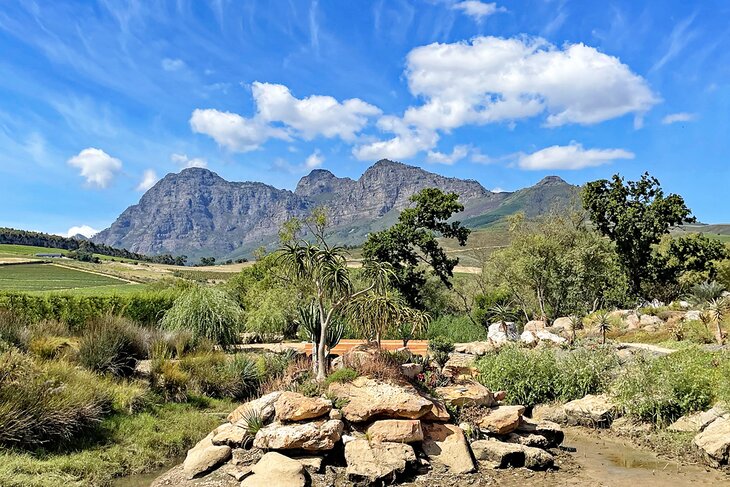
Lovers of natural beauty must flock to the small, boutique communities of Stellenbosch or Franschhoek for some of the best views in South Africa . Both towns are surrounded by the towering mountain ranges that loom just outside of Cape Town.
Known for their alpine-like vistas, shimmering lakes, and abundance of flowers and wildlife, Stellenbosch and Franschhoek are two of the most beautiful towns in all of South Africa.
Stellenbosch and Franschhoek are foodie destinations, boasting some of the best restaurants in the country . They also are home to lovely gardens, particularly Babylonstoren, one of the oldest Cape Dutch farms, home to acres upon acres of meandering gardens with epic mountain views.
The hotels in this part of South Africa are a cut above the rest, too. La Residence , for example, is an absolute treasure, with sumptuously decorated public areas, glittering chandeliers, roaring fireplaces, and a roaming peacock or two on property.
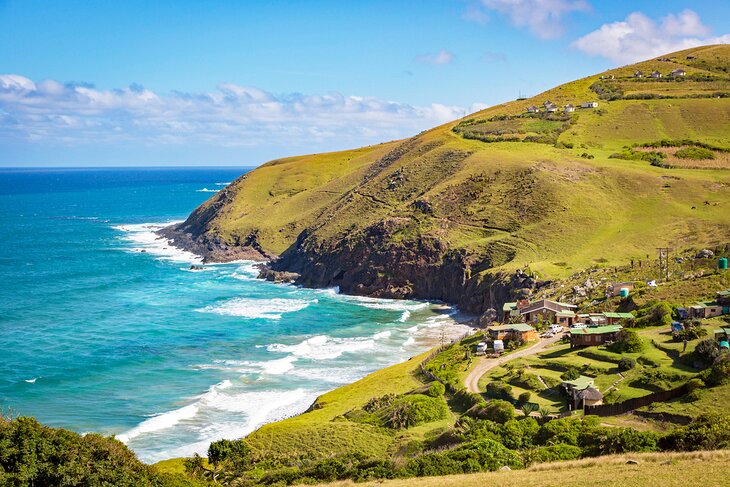
South Africa has many hundreds of kilometers of spectacular coastline, but the Wild Coast region is one of the most special stretches. The Wild Coast runs along the Eastern Cape , bordering the Indian Ocean, stretching from East London in the south to the KwaZulu-Natal border in the north.
Tourists can explore the Wild Coast by driving the N2 motorway, one of the main national roadways in the country. Along the way, the Wild Coast delights with gorgeous views of open beaches, broad rivers, rolling hills, forests, and rocky cliffs.
Sightseers come to explore the Wild Coast predominantly for its untamed wilderness, whether they are wildlife viewing below the waves, fishing , riding horses, or cutting through the forests and beaches on 4x4s.
The Wild Coast has a tremendous amount of history, as well. It is the ancestral home of the Mpondo people, and includes the birthplace of Nelson Mandela.
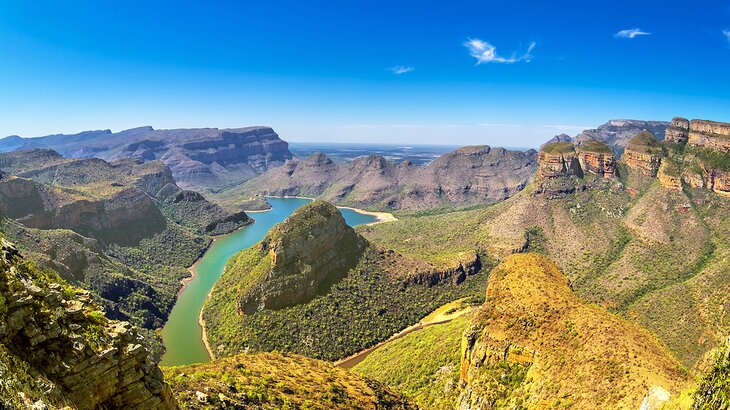
Blyde River Canyon will take the wind out of your lungs. It is one of the most outstanding natural sights to see in all of South Africa , and one of the largest canyons in the world . Towering cliffs of red rock are practically carpeted in lush, green forest, while the Blyde River slithers along at the base of the escarpment.
The rock formations of Blyde River Canyon are among the most beautifully formed in the country. While driving Route 532, you'll be able to trace the outline of many of these gigantic structures, with plenty of opportunity for waterfall spotting from dramatic lookout points.
You can find Blyde River Canyon in the northeastern corner of South Africa's Mpumalanga province. It's one of the top spots in the country for bird-watching, as well as spotting other wildlife species like waterbuck, wildebeest, kudu, hippos , and crocodiles.
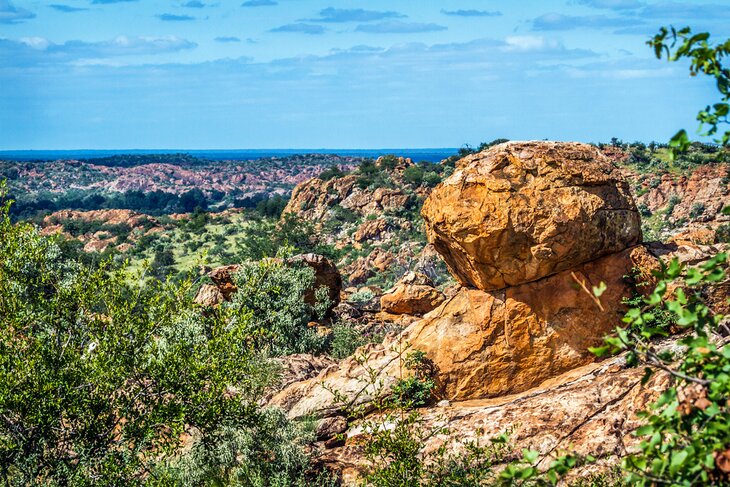
The northern province of Limpopo is where adventurists will find the ruggedly beautiful Mapungubwe National Park . The park sits where the Limpopo and Shashe rivers converge, sharing a border with both Botswana and Zimbabwe. The park is shrouded in mysteries of the past, being a meeting point for people and wildlife across the span of time.
Speaking of wildlife, Mapungubwe National Park is one of the best places in South Africa for game viewing , especially if you're looking to spot elephants, leopards, rhino, lions, and hyena. It's also a paradise for bird-watching.
And speaking of people, this region is home to one of Southern Africa's first kingdoms, which was established at Mapungubwe Hill sometime between 1200 and 1290 CE. The civilization spanned seven centuries and has left behind a wealth of evidence of its existence.
Visitors can stay in the park, too, at many tented camps. Guided tours are among the best ways to experience the park's natural beauty.
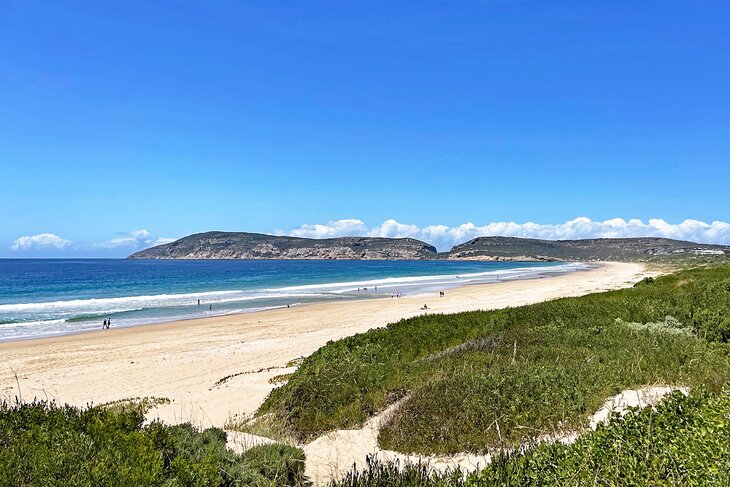
Known simply as "Plett" to locals, Plettenberg Bay is a quiet, tranquil seaside town along South Africa's scenic Garden Route drive .
Plett is one of the major stops along this Indian Ocean road trip, particularly if you're interested in great restaurants , beautiful views, and outdoor thrills. Plan to stay at least two nights in Plett, because one simply will not be enough.
The reason everyone flocks to Plett is because of its gorgeous beaches . The three most popular beaches are Lookout Beach, Central Beach, and Robberg Beach. Each is spectacular and offers something a little different.
Another reason to visit Plett is to hike the Robberg Nature Reserve , known for its epic scenery and rock formations that date back millions (yes, millions) of years. It also happens to be a World Heritage Site .
One thing cannot be denied — the views in Plettenberg Bay are simply stunning. With such a chill vibe, it's no wonder this is one of the best places to visit in South Africa.
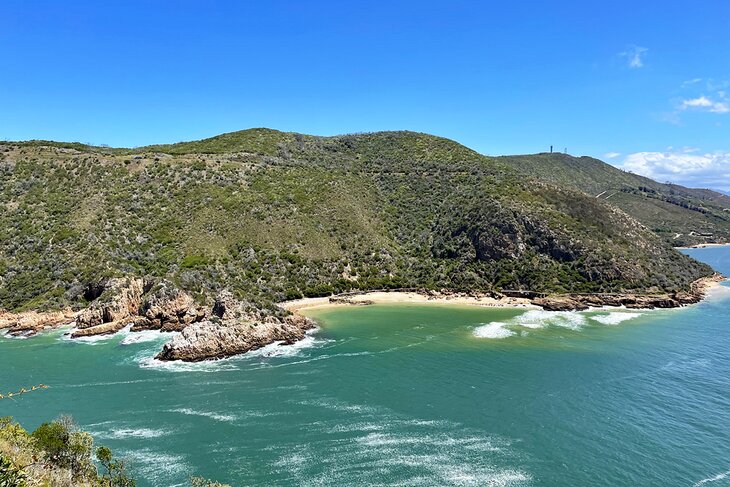
The Garden Route is not short on scenic towns and a breathtaking coastline, but you get a heavy dose of both when you visit Knysna. The village wraps itself around a stunning lagoon, with rocky outcrops known as the Knysna Heads that protect it from the churning ocean.
Knysna is one of the most famous towns along the Garden Route , particularly among those who like to get out on the water. The marina in Knysna is always packed with vessels — and their captains — who have come to sail along the calm lagoon waters.
Knysna's downtown is charming, with plenty of restaurants and things to do. You'll also find the Featherbed Nature Reserve , which is a protected area that you can only access by boat.
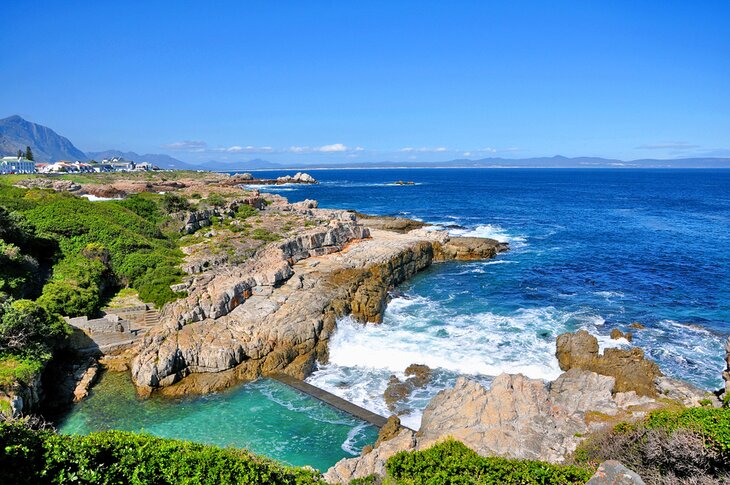
South Africa is not short on charming seaside towns, but Hermanus is in a whole league of its own. Just 120 kilometers from Cape Town, Hermanus makes for a perfect day trip, though you'll probably want at least a couple of days to really enjoy this lovely town in the Western Cape .
What makes Hermanus so special is that it is one of the top whale-watching spots in the entire country. The town overlooks Walker Bay, which is a prime destination for whales from Antarctica to breed and calve. As such, Hermaus is completely devoted to whale tourism. The Hermanus Whale Festival is an annual event held in September with food trucks, arts and crafts, and exhibits on conservation.
Tip: The best time for viewing whales is between June and November.
Hermanus is also surrounded by the Fernkloof Nature Reserve , which has 60 kilometers of trails and a plethora of wildlife.
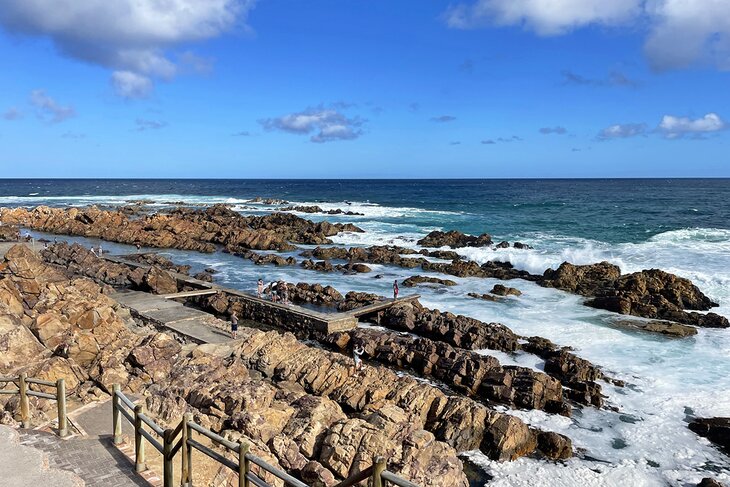
If you're driving the Garden Route , then your journey will either begin or end in Mossel Bay. This historic harbor town is known for its spectacular beaches , 19th-century lighthouse , and maritime history. It's a wonderful spot to learn a bit about South Africa while taking in its lovely natural beauty.
Mossel Bay also happens to be the adventure capital of the Garden Route , with roughly 50 different types of adrenaline-pumping experiences, including one of the largest over-water ziplines in the world.
History buffs will want to visit the Bartolomeu Dias Museum , which features a maritime museum and botanical gardens. You can also climb to the top of the Cape St. Blaize Lighthouse complex for beautiful views over Mossel Bay.
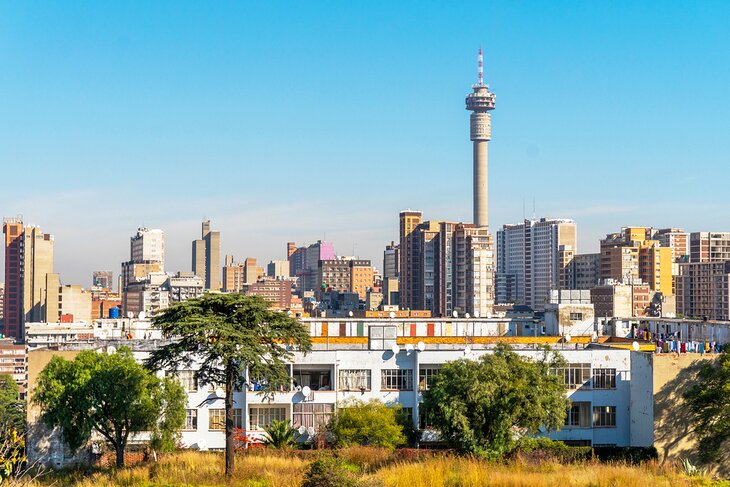
If Cape Town is South Africa's chilled-out seaside city, then Johannesburg will be a bit of a shock to the system. This is South Africa's larger, more chaotic, and infinitely more expansive city — and a must-see on a visit to the country .
Johannesburg sprawls out in every direction from the city center and is divided into very distinct suburbs and neighborhoods, each of which has its own personality. Tap into its arts and culture scene in the once-industrial-now-cultural Maboneng Precinct , or hit up the luxury shopping malls and elegant restaurants of Sandton or Rosebank .
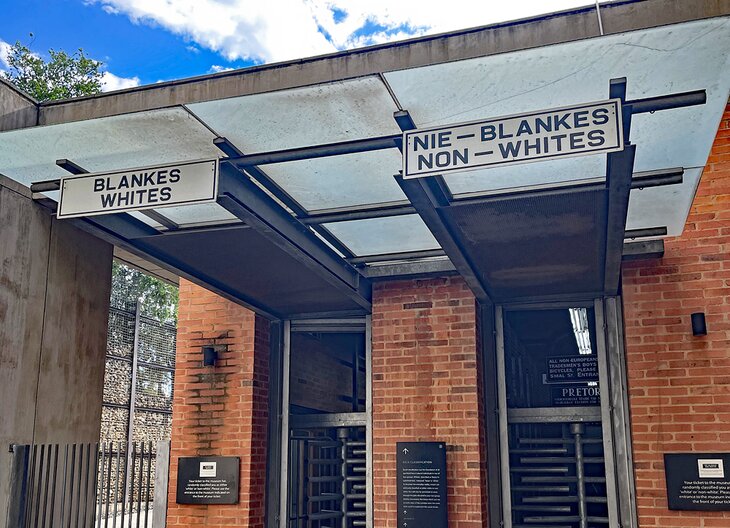
Johannesburg is also home to the Apartheid Museum , which is one of the most important and powerful museums dedicated to the rise and fall of the oppressive White Nationalist party in South Africa that dominated it for decades.
"Joburg" is fast-paced, exciting, electric, and can be sensory overload. But it is also one of the most important cities on the African continent and one that will help give a deeper perspective into the history and culture of South Africa.
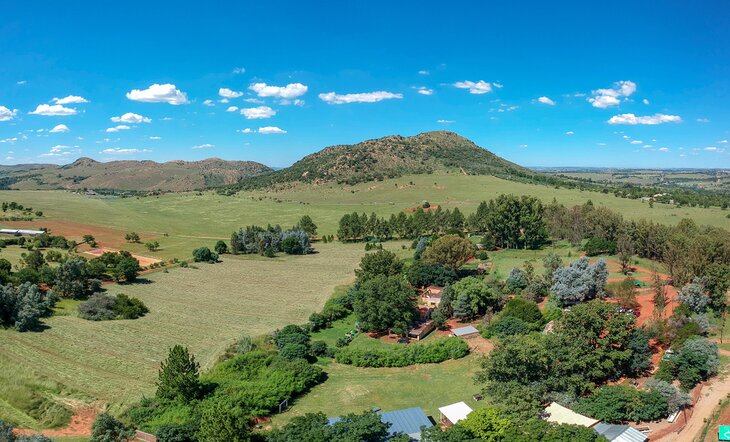
Want to know where it all began? Africa is, without a doubt, the birthplace of humankind. And South Africa, in particular, has some of the earliest evidence of life on this planet.
Life first emerged roughly 3.8 billion years ago, and it's in South Africa that fossils have been found that date back 200 million years — the earliest to ever be found on Earth.
About an hour from Johannesburg is the Cradle of Humankind World Heritage Site , where important fossils that have helped guide our search to understand evolution have been found.
Famous fossils "Mrs Ples" and "Little Foot" have been found in the Cradle of Humankind. Other fossils include antelope, baboon, saber-toothed cats, and rodents, which are between five and four-million years old. The site also has 92 hominid specimens, and early homo sapiens fossils.
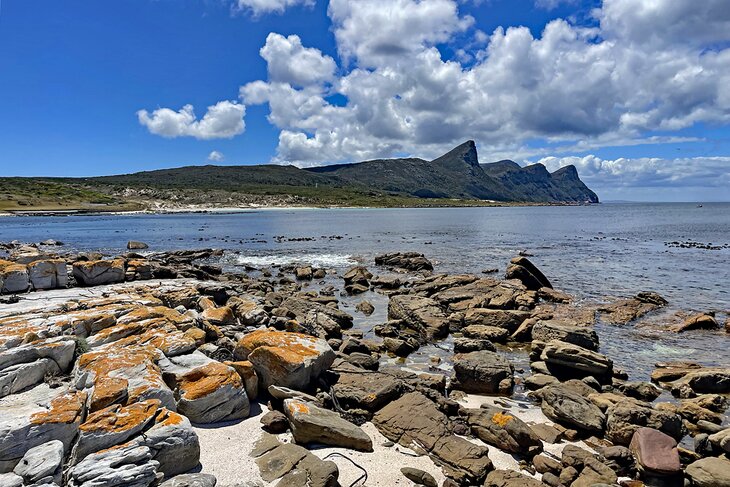
Table Mountain may be one of the icons of Cape Town , but it is just the tip of the iceberg when it comes to exploring the greater Table Mountain National Park . The park covers most of the Cape Peninsula, running from north of Cape Town down to the Cape of Good Hope.
In between the two are many scenic areas within the 22,000 hectares to explore. The park has more than 350 trails , meaning hikers of all levels will have many options to choose from. One of the best things to do in the park is to head to Cape Point lighthouse , which is a scenic area on the Cape of Good Hope.
You can also bring a picnic to Buffels Bay Beach and watch the waves gently lapping on shore. Do keep a lookout for wild baboons — they like to steal food and can be particularly brazen about it. Most will run away if you shout at them, though. And it's worth the slight annoyance for the lovely waterfront views.
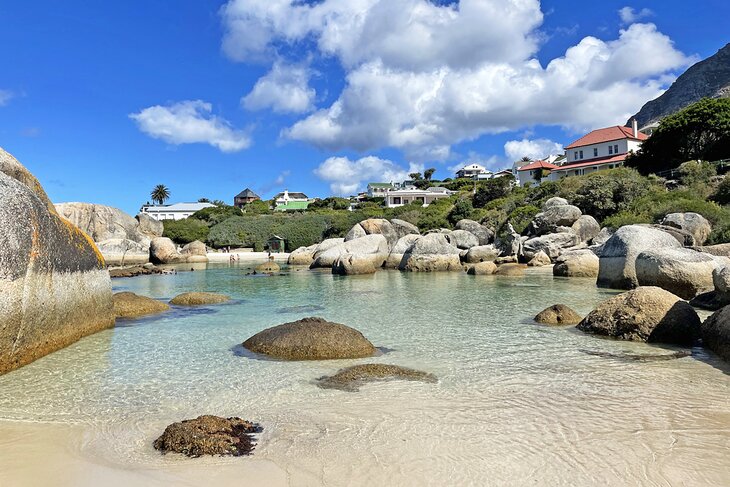
Technically in the Table Mountain National Park area, Boulders Beach is worth a mention all on its own. If you skip everything else in the park, Boulders Beach is a must. Why? Penguins, of course.
Boulders Beach is home to one of the most famous wild penguin colonies in South Africa . The penguins turned up on the beach here years ago by chance, and have called it home ever since. What's more, you can hang out with them on the beach all day and have one of the coolest (and cutest) up-close animal encounters.
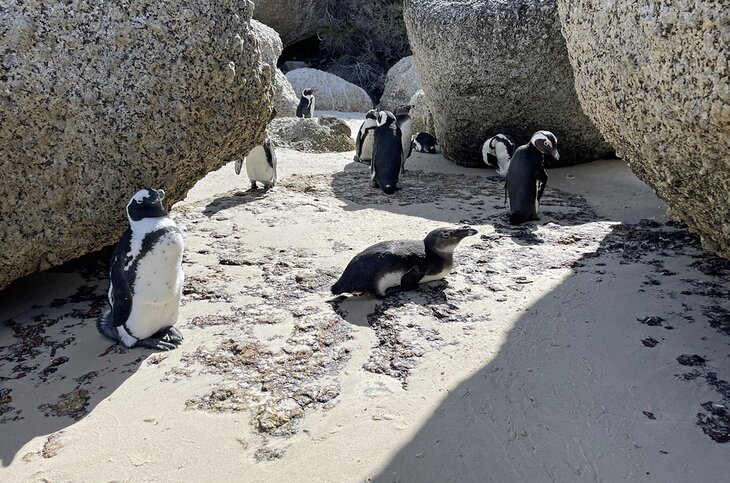
Boulders Beach requires a small entry fee to access, and it also requires a bit of scrambling over large boulders to reach the spot with the penguins. Once you do find them, you'll be surrounded by them. Splash in the crystal-clear water, explore the rock formations, and, of course, snap photos with these peculiar creatures.
If rock scrambling isn't part of your ideal itinerary, you can also head to nearby Foxy Beach , which has an accessible boardwalk viewing platform to see the penguins.
Address: Kleintuin Road, Simon's Town, Cape Town, South Africa
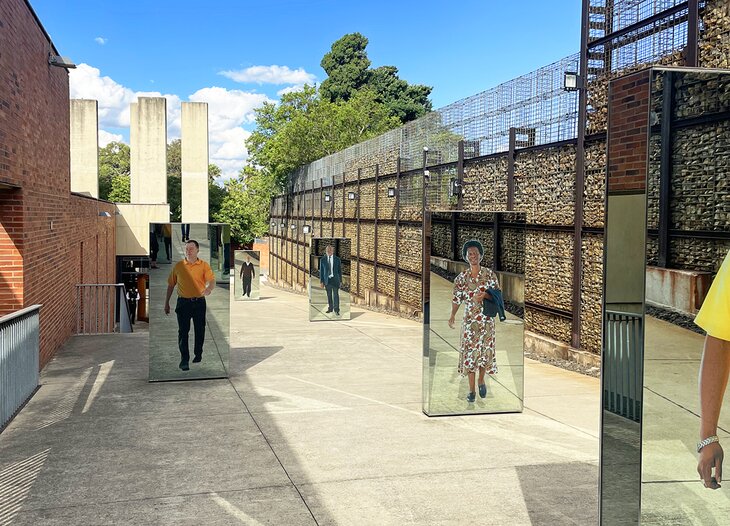
South Africa's history has quite a few dark patches on it. Colonization has left an ugly stain on its past, which has still carried through to the present. To come to South Africa and not acknowledge the racial inequalities is to miss a huge part of the reality of South Africa's identity. Johannesburg's Apartheid Museum is the best place in the country to learn about the historic racial injustices and how they impact life today.
One of Joburg's highlights , The Apartheid Museum is incredibly comprehensive. You need at least an hour and a half to do it justice. And be prepared for subject matter that does not shy away from the hard topics. Still, it is an important stop for anyone who wants to begin to understand South Africa's checkered past.
Still, the message behind the museum is one of hope and change. It's a moving and deeply profound experience to visit this museum and one that must not be missed.
Address: Northern Parkway and Gold Reef Road, Johannesburg, 2001, South Africa

More on South Africa
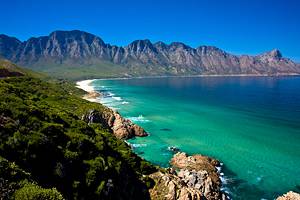

Home » Travel Guides » South Africa » 15 Best Places to Visit in South Africa (Update 2023)
15 Best Places to Visit in South Africa (Update 2023)
I use this article to share my love of South Africa’s best places to visit. Having roamed this masterful country from tiny hamets to the biggest cities, I’ve picked out its most unmissable destinations. And having traveled extensively in each and every one of them, you can be sure my picks are worthy of such a list!
With more landscapes and terrain than just about another country on Earth, South Africa takes the lead when it comes to diversity. An epic country at the tip of an epic continent, wildlife is likely your first draw. And why not, when you can boast hippos on the Limpopo River, penguins on the Cape, and Kruger’s Big Five?
But don’t forget about South Africa’s other attractions. There’s over 1800 miles of dramatic everchanging coastline. There are some of Africa’s best museums, an intriguing history, incredible cuisine, and no shortage of nightlife either.
Coming from an country which struggled for decades under the racial segregation of apartheid, this is utterly extraordinary. The legacy of apartheid can still be felt in places. But the education and welcome you’ll receive will give you hope for the country’s future. Be sure to plan for a long trip, or at the least plan to return again and again. You’d need a lifetime to experience and appreciate this magnificent country in full.
1. Cape Town

South Africa’s ‘mother city’ – it’s oldest – is a microcosm of the country as a whole. Here you’ll find evidence of Europe’s earliest footprint on the continent at the Company’s Gardens and Castle of Good Hope.
At the same time, attractions including Zeitz MOCAA, the world’s largest gallery dedicated to Africa’s contemporary art scene, show Cape Town still has what it takes to wow.
A myriad of diverse neighborhoods each offer something different, from street art to amazing architectural examples.
Then there’s Table Mountain, cool indie shopping on Long Street, almost endless nature trails, water sports, golden beaches, and fine dining. Plus a literally unique flora, which can be explored at Kirstenbosch Botanical Gardens.
The adventurous can abseil from Table Mountain or paraglide off Lion’s Head. The historic farms of nearby Constantia offer relaxing wine tasting, while game reserves promise sightings of Africa’s wildlife.
2. Kruger National Park

When it comes to seeing Africa’s best known species, there’s little argument over the best place in South Africa to head – Kruger National Park . The size of a small European nation, the density and diversity of animals within Kruger National Park makes it one of the world’s greatest.
You’ll find all the iconic safari species here – leopards, lions, cheetahs, rhinos, buffalo, giraffes, elephants, and zebras. Plus about 140 other mammals and 500 varieties of birds. While areas of the park can get busy, Kruger is large enough at 8000 square miles that it’s also possible to be the only game vehicle in sight. The longer you spend here, the more likely this is to be the case.
More than just savanna grassland, Kruger also contains granite hills to its south, the Lebombo Mountains in the east, and sub-tropical forest in the north. It’s no wonder Kruger’s species list is so extensive!

Part of the famous Garden Route, Knysna is known for its oyster festival and incredible views which stretch from Leisure Isle all the way to the Knysna Heads – a difficult passage of water where many ships have been wrecked.
All the same, the reason to include Knysna on your South Africa itinerary is for relaxation with a little added adventure.
Top attractions include Featherbed Nature Reserve for communing with nature, alongside the incredible Knysna Elephant Park and Monkeyland Primate Sanctuary.
Dolphin sightings are pretty regular in Knysna too. There are several dolphin spotting boat trips to choose between. Many include a stop at Plettenberg Bay or the Robberg Peninsula in order to see the noisy seal colonies there.
4. Stellenbosch

During the Anglo-Boer War, British soldiers who showed courage and valor on the battlefield where sent to Stellenbosch as a reward. Head there today and it will feel like you’re being rewarded too. Stellenbosch is a beautiful town with restaurants, street cafes, and some of South Africa’s oldest buildings. These days, the town is centred on the university, one of the leading educational institutions in the country. As a result, the atmosphere can be very differnet between term time and the university holidays. There are also some fantastic wine estates here – check out Spier (established in the 17th century) to enjoy Segway tours, picnics, Eagle Encounters, and an amphitheatre for entertainment.
Other top picks include Thelema, Tokaa, and Blaauwklippen. For food, Stellenosch has two of the top ten “Best Restaurants in South Africa”. For something a little different, there’s AmaZink. This restaurant has a night dinner show recounting the history of the neighboring Kayamandi Township with music and dance.

South Africa’s most famous township is undoubedly Soweto, an abbreviation of South West Townships. Created in the 1930s as a means of pushing black communities out of central Johannesburg, Soweto became a vocal centerpoint for protests against apartheid. Nelson Mandela even lived in its Orlando West neighborhood until his imprisonment in the 1960s. His home here is now an important stop on any tour of Soweto.
These tours include places like Walter Sisulu Square, where South Africa’s Freedom Charter was signed in 1955, and the Hector Pieterson Memorial, where the 1976 uprising began. There’s also Vilakazi Street, once home to Archbishop Emeritus Desmond Tutu and Nelson Mandela. It makes it the only street in the world where two Nobel peace prize winners have lived.
For some fun, take a look at Chris Hani Baragwanath Hospital. It’s listed in the Guinness Book of World Records as the largest hospital in the world. To get the adrenaline flowing, opt for a bungee jump between the famous painted cooling towers of the decommissioned Orlando power station.

Durban is where South Africans head on vacation, making it one of South Africa’s most popular holiday destinations. Why? Because just a short stroll from the city center you’ll find mile after mile of perfect golden sand. Add to this excellent year-round weather, and you have the beginnings of a great few days. If you somehow tire of the beach, check out the gondola rides, fishing, or uShaka Marine World theme park and aquarium.
When you want a break from the sun, head downtown and discover the wonderful art deco facades amid the more urban parts of town. Its buildings include the Durban Natural Science Museum, which contains one of the most complete dodo skeletons in the world among its artifacts. Stroll through its markets and you’ll wonder if you’re still in South Africa, given the influence of the city’s Indian community. They gifted Durban delights including bunny chow, a vegetable stew packed with flavor.
7. Bloemfontein

The capital of Free State and one of South Africa’s three national capitals, Bloemfontein is one of South Africa’s most attractive cities. Meaning ‘fountain of flowers’ in Afrikaans, ‘Bloem’ is often called ‘the city of the roses.’ Flower beds line many of its broadest streets, while a rose festival is held here each year. But it’s more than just beautiful to look at, the city has a plethora of cultural, historical, and natural attractions.
For a start, try the Oliewenhuis Art Museum, the National Museum, the Free State National Botanical Garden, Vodacom Parkland, or the Anglo Boer War Museum. For round two, try the digital planetarium, the music scene at Die Mystic Boer, or go fishing at Maselspoort. For something a little different, head up to Naval Hill’s Franklin Game Reserve. Popular with joggers and cyclists, this hilltop reserve contains zebras, giraffes, and wildebeests, in addition to a plethora of bird species.
8. Blyde River Canyon

Though it’s a very small province, Mpumalanga is truly exciting. Mountain vistas, cooler climates, and green valleys make the region a magnet for outdoor lovers. Abseil down waterfalls, river raft, canoe, inner tube, trek, mountain bike, or throw yourself off a cliff! All are possible.
The main attraction is definitely Blyde River Canyon, which has been carving its way through the Drakensberg Escarpment for centuries. It’s truly one of South Africa’s iconic sites. Although less than 17 miles long, it’s the perfect destination for nature and walking lovers. A rich dense carpet of green provides habitats for a huge number of species, from monkeys to birds.
Plus, the canyon is right next door is Kruger National Park. Its surrounding towns form a great base camp while you spend time exploring this magnificent area. Expect the best treks to last between three and five days.
9. Johannesburg

The ‘city of gold’, Jo’burg has it all – if you know where to look. It’s true to say that downtown Johannesburg has seen better days. The last 20 years haven’t been kind to South Africa’s most populous city. However, things are rapidly changing for the better in Newtown and Braamfontein, the two cultural districts. Here you’ll find the restaurants, cafes, museums, and theatres you’d expect from a city the size of Jo’burg. Indeed, the energy here is almost infectious.
Even the inner city is quickly becoming a tourist hotspot. You’ll want to make a stop at Maboneng, a hipster type neighbourhood on the eastern side of downtown. While in the area, try and pay a visit to Johannesburg Art Gallery in Joubert Park. With 15 galleries and a sculpture garden, its collection includes a mix of classical European works and modern home-grown art.
It’s a city still struggling with its history, but Johannesburg isn’t pretentious and has a lot to offer. Don’t forget to make a stop at the Apartheid Museum on its outskirts for a sobering reminder of just what Johannesburg has gone through.
10. Kimberley

Another historic city is Kimberley, also known as ‘the city that sparkles’ because of its link to South Africa’s diamond industry. Located in the heart of the Diamond Fields region, it’s the home of De Beers and has a rich mining past. The billion dollar company’s first headquarters, a tiny tin shack, still exists beyond the train station.
Not to be missed is the Big Hole and Mine Museum. It’s surrounded by a series of old buildings relocated to the site, including a functioning old time saloon. Inside, visitors first get to watch an enjoyable documentary into just how Kimberley became the center of diamond mining. You’ll then get to see the Big Hole – the world’s largest hand dug pit.
Reaching a depth of 240 meters, and covering 170,000 square meters, the Big Hole miners discovered 3000 kg of raw diamonds before it was closed in 1914.
11. East London

If you want a laid back beach scene that doesn’t have the crowds, East London is perfect for you. Flying somewhat under the radar, it’s got everything you would want in a beach getaway. Its coast is lined with sandy beaches, its Indian Ocean waves are warm, there’s wall to wall sunshine, and loads of water sports and other outdoor adventures to consider.
East London Museum contains two examples of the coelacanth too. Often called a ‘living fossil,’ it’s a large scaly fish that was thought to have been extinct for millions of years before one was caught in a fishing net in the 1930s nearby.
Meanwhile, Potters Pass Nature Reserve protects rare coastal grasslands which burst into life during the spring months. It’s here you’ll also discover the historic Hood Point Lighthouse.
12. Oudtshoorn

Welcome to the ostrich capital of the world, where a trip to an ostrich farm is a must. Located between the Swartberg and Outeniqua mountains, Oudtshoorn is another ideal destination for outdoor and nature lovers. You have to travel through Klein Karoo to get there, but that’s no trouble given the beauty of this semi-desert area.
The mountain range has been declared a Cape Floral World Heritage Site, and you’ll see some stunning vistas as you explore the area. Nearby are the Cango Caves and the historical village of De Rust. If you’re in the mood for a road trip, consider crossing the Swartberg Pass or driving down the 25km Meiringspoort.
If you’re there around Easter time, don’t miss the Klein Karoo Nasionale Kunstefees – the largest language arts festival in the country.
13. Pietermaritzburg

This heritage city is located in the forests and rolling pastures of the Natal Midlands. The provincial capital of kwaZulu-Natal, it’s considered one of the best preserved Victorian cities on Earth. A tour through town to look at the historic buildings will take you back to another age. They include the magnificent City Hall building.
Pietermaritzburg’s treasures extend to the Msunduzi Museum and Tatham Art Gallery. Once known as the Voortrekker Museum, the Msunduzi Museum contains a complex of historic buildings including the humble home of Andries Pretorius, a major Boer leader.
The Tatham Art Gallery has a fine collection of 19th and 20th century artworks, all housed in the Old Supreme Court building.
14. Pretoria

‘Jacaranda City’ is swimming in a sea of purple Jacaranda trees. The sister to Johannesburg, but much more laid back, Pretoria has great museums, historical buildings, and natural attractions for your enjoyment.
Once the heart of apartheid South Africa, a new energy is infusing the city as foreign embassies, businesses, and tourism reach Pretoria. When you want a relaxing stopover as you travel the country, Pretoria is definitely worth a visit.
Named after our old friend Andries Pretorius, any tour of the city should start at Church Square. From here, head the short distance to the Union Buildings on Meintjieskop hill – the home of South Africa’s presidency. On another hill, Salvokop, Freedom Park contains a monument to all the South Africans who lost their lives during wars and the apartheid era.
15. Port Elizabeth

Most South African cities seem to have a nickname, and Port Elizabeth’s is the ‘friendly city.’ It’s located at the eastern end of the Garden Route, and the western end of the Sunshine Coast, on Algoa Bay.
As you might expect from such a location, there are blue-flag beaches and water sports offerings. Summerstrand’s beaches are particularly popular with surfers. Yet there’s a surprising amount of history here too.
Now officially known as Gqeberha, the city was founded in 1820. There are therefore plenty of grand Victorian buildings at its heart.
However, my personal favorite thing to do in Port Elizabeth is stroll across Donkin Reserve. Blending a historic lighthouse and memorial pyramid with modern sculpture and art, its a wonderful place to wander.
15 Best Places to Visit in South Africa (Update 2023):
- Kruger National Park
- Stellenbosch
- Bloemfontein
- Blyde River Canyon
- Johannesburg
- East London
- Pietermaritzburg
- Port Elizabeth
Hrmm. Looks like you're using an older browser, which means some site features may not work they way they should. For the full gadventures.com experience, we recommend upgrading to the most recent version of your browser . It's worth it! Honest!
View all tours
North America
Central america & caribbean, south america, north africa & middle east.
Few travellers make it to this icy continent, but the lucky ones who do get to explore a frozen Eden ruled by the elements and teeming with wildlife.
G Adventures Land
G adventures sailing & cruises, g adventures private travel.
Whether it’s a family retreat or a girls trip, you can surround yourself with a hand-picked crew and customize a tour that fits you all perfectly.
The Geluxe Collection
Our new line of premium active adventures is officially here. With perfectly paced itineraries, one-of-a-kind accommodations and elevated dining, this is adventure at its finest.
National Geographic Journeys
Go deeper into the cultures and habitats of the places we explore. More is included and you’ll enjoy greater hands-on exploration, interactions with local experts, and freedom to roam.
National Geographic Family Journeys
Are you an adventure-loving family in search of meaningful ways to discover the world together? These tours are specially designed for travellers seven and up and their inquisitive families.
Jane Goodall Collection
Step deeper into the animal kingdom while respecting all of its inhabitants. Our incredible collection of wildlife-focused tours is endorsed by the world-renowned ethologist.
Roamies by Hostelworld
The thrill of adventure. The awesomeness of hostels. Get ‘em both on these immersive small group trips for 18 to 35-year-old travellers.
Why choose us
As the leader in small group travel for 30 years, we know how to do it right: flexible itineraries, freedom to roam, safety, peace of mind, and locally based guides.
Change the world just by having the time of your life. When you travel with us, you become a force for good by acting responsibly and creating positive impact.
Together with our non-profit partner, Planeterra, we ensure local communities touched by our tours benefit from our visits in as many ways possible.
Trees for Days
Leave your destination even greener than you found it! For every day on tour, we’ll plant a tree in your honour and ensure that our forests get to live their best lives.
Travel resources
Last minute deals.
Looking to have the time of your life in the next 90 days or so? You can save big if you’re ready to book now.
Loyalty discount
Back home from a G Adventures tour? Submit a quick trip evaluation to save 5% on your next tour with us.
Student discount
Got proof that you’re pursuing higher learning? Then we’ve got a travel voucher with your name on it.
All travel deals
New ways to save pop up all the time. Here’s where you’ll find every hot deal in one easy place.
Ultimate South Africa
18 days, cape town to cape town.

- Full itinerary
- Tour details
You can see the best of South Africa in just under three weeks on this epic 18-day adventure from Cape Town and back. Spend a week in Greater Kruger and Kruger National Park with thrilling bush walks, safari drives, and unforgettable bush braais. Then, head south to hit the iconic Garden Route, trekking through national parks and spotting wildlife at every turn. Treat yourself to delicious South African cuisine and raise a glass (or two!) in the vineyards of Franschhoek. Finish your journey right where it began — back in Cape Town — guided every step of the way by your awesome local CEO. It’s the full South African experience, and it’s calling your name.
Cape Town to Cape Town
Is this tour for me, travel style: classic.
All of the highlights, culture, access, and I-can’t-believe-we-did-that moments, all at a great price.
Service Level: Standard
Comfortable tourist-class accommodations with character; mix of public and private transport.
Physical Rating: 3 - Average
Some tours may include light hiking, biking, rafting, or kayaking in addition to walking.
Trip Type: Small Group
Small group experience; Max 18
Check Your Visa Requirements
Before booking, use our handy entry requirements tool so you know which documents you need to enter and travel through the countries on your trip.
See how your trip uplifts communities
In a number of impactful ways, your adventure directly benefits the local people and places we visit.
Help us spread love around the world with Trees for Days. Together with Planeterra, we'll plant one tree in your name for every travel day.
Trees planted for this trip: 18

Places visited
- South Africa
Day 1 Cape Town
Arrive at any time. Attend an evening welcome meeting at the joining hotel before an optional group dinner.
Exclusive Inclusions:
Day 2 cape town.
Enjoy breakfast and then depart for Table Mountain. Ride to the time on the cable car and explore the area on hiking trails leading to scenic views before riding back down. Spend the afternoon on your own partaking in one of the many optional activities in the area. Tonight, choose to attend another group dinner to celebrate your beautiful day in this vibrant city.
Meals included:
Day 3 cape town/johannesburg.
Transfer to the airport in the morning and fly from Cape Town to Johannesburg. Enjoy an included Braai dinner to get a taste of South African fare for the next leg of your adventure.
Day 4 Johannesburg/Greater Kruger Area
Depart Johannesburg early to get a jump start on today's long drive. An included lunch along the way will break up the drive and give you a chance to stretch your legs. Arrive to your lodge accommodations in the late afternoon, just in time to freshen up for dinner with the group.
Day 5 Greater Kruger Area
Wake up bright and early today for an included bush walk. Take this opportunity to get up close and personal with the incredible nature that surrounds you. Enjoy a picnic lunch after the walk and then a few hours of well earned rest back at the lodge. In the later afternoon set off on a safari drive to the wildlife in Kruger National Park.
Day 6 Kruger National Park Area
Enjoy an early start this morning to enter the park and enjoy the full-day safari drive through Kruger in search of the Big Five. After an exciting day out in the wild, arrive late afternoon to your lodge and enjoy some local fare during dinner this evening.
Day 7 Kruger National Park Area
Another full day in Kruger awaits. Hop into a 4x4 to enjoy a more intimate wildlife safari drive, one offering a fresh perspective of the scenery and animals around you. Finish the day with a delicious dinner with your fellow travelers.
Day 8 Kruger National Park Area
Spend a free day in the area and choose which optional activities are best for you. Possible options include a morning or afternoon safari drive in Kruger National Park, or a full-day tour along the Panorama Route to set those photography skills to the test. The route offers unbelievable views at every turn and traverses the Great Escarpment via thrilling mountain passes.
Day 9 Kruger/Johannesburg
After breakfast at the lodge, witness first-hand the large role conservation plays in Kruger and the surrounding areas on an educational visit to The Jane Goodall Institute Chimpanzee Eden, commonly referred to as Chimp Eden. This animal sanctuary for rescued chimpanzees is located in the Umhloti Nature Reserve and a tour here is the perfect way to celebrate a visit to South Africa. Arrive to the lively city of Johannesburg in the early evening and enjoy a group dinner at the hotel.
Day 10 Johannesburg/Port Elizabeth
Depart Johannesburg in the morning and board a flight to Port Elizabeth. Transfer the hotel before a free afternoon in Port Elizabeth. Join an optional group dinner in the evening.
Day 11 Day Trip to Addo National Park
Experience the wildlife and landscapes of Addo Elephant National Park during a morning safari drive with knowledgeable guides in search of rhinos, lions, buffalo, leopards, and of course, elephants. Have a picnic breakfast out in the bush and finish the drive in the afternoon. There will be free time to have lunch in the area before returning to Port Elizabeth to spend a leisurely evening on your own.
Day 12 Port Elizabeth/Tsitsikamma
After breakfast depart for Tsitsikamma National Park, part of the famed Garden Route on the South Coast of South Africa. The area is valued for its diverse natural and cultural heritage. Enjoy a CEO-led hike along the Mouth Trail and wander along a winding boardwalk through the forest. In the afternoon partake in the Big Tree walk with your CEO, which will take you through indigenous forest to an eight hundred-year-old Yellowwood towering over the rest of the canopy. The remainder of the evening is at your leisure.
Day 13 Tsitsikamma
Enjoy an entire free day in the Tsitsikamma area. Choose between optional activities like, the Woodcutters’ Journey, a tree canopy tour, a seasonal whale watching excursion, or whitewater tubing. Your opportunity to remain active awaits. Have dinner with the group back at the hotel in the evening.
Day 14 Tsitsikamma/Knysna
In the morning the group will visit the Robberg Nature Reserve featuring stunning coastal scenery and some of the best hiking in the country. Walk along the Gap Circuit and see evidence of the prehistoric break-up of the supercontinent of Gondwanaland some 120 million years ago.
Travel onwards to Knysna for an orientation drive along the waterfront, through the town centre, to the hip eateries and shops on Thesen Island, and through the lush landscapes of the Knysna Forest full of indigenous trees. Arrive back in town for a free afternoon to enjoy optional activities or to simply relax in the beauty of your surroundings.
Day 15 Knysna
Breakfast will be had at the hotel before an included visit to The Knysna Heads, which enclose and form the Knysna River Estuary. Visit some of the main attractions on the Eastern Head, walk along a pathway at the foot of the cliffs and learn about the importance of the land to the local population. Spend the remainder of the day as you wish and try some of the optional activities, like an oyster tour which the area is known for.
Day 16 Knysna/Franschhoek
Rise early for a long, but jam-packed day of epic scenery and unforgettable sights as you drive the more scenic way from Knysna to Franschhoek. First stop is the harbour town of Mossel Bay to visit the lighthouse and walk in the area. Drive along Tradouw Pass next, through the lesser-known gem of Gatplaats Nature Reserve for a short walk and enjoy hilly views to reach the town of Barrydale. Have an included outdoor lunch at a local restaurant and enjoy a wine tasting. Arrive to Franschhoek in the evening and have dinner on your own.
Day 17 Franschhoek
Start the morning off with a CEO-led orientation walk along Franschhoek’s main street. The remainder of the day is free for optional activities like a guided bike tour Stellenbosch, a history and art tour, or perhaps a winery visit in a region celebrated for its delicious grape varieties. Dinner this evening will be on your own.
Day 18 Franschhoek/Cape Town
Leave the picturesque winelands of Franschhoek behind this morning and depart for Cape Town. Stop along the way to walk up the city’s iconic Signal Hill and site of the Noon Gun, one of Cape Town’s oldest living traditions. Enjoy the fantastic views from the top and catch a full glimpse of Cape Town's many landmarks. The tour ends upon arrival in Cape Town around 1:30pm.
What's Included
- Your Welcome Moment: Welcome Moment - Meet Your CEO and Group
- Table Mountain cable car ride and visit
- Nature Walk
- Wildlife Safari Drive
- Traditional Dinner and Local Dancing
- Kruger National Park Open Vehicle Wildlife Safari Drive
- Jane Goodall's Chimp Eden Tour
- Free time in Cape Town
- Addo National Park Safari drives
- CEO-led hike in Tsitsikamma National Park
- Big Tree Visit Tsitsikamma
- Walk in Robberg Nature Reserve on the Gap Circuit
- Driving and walking orientation tour of Knysna
- Knysna Heads Visit
- Scenic drive between Knysna and Franschhoek with stops at Mossel Bay and Barrydale
- Lunch at a vineyard in Barrydale
- CEO-led orientation walk of Franschhoek
- Signal Hill walk
- Free time in Tsitsikamma, Knysna, and Franschhoek
- All transport between destinations and to/from included activities
Accommodations
Hotels (12 nts), Tented Camp (2 nts) Lodges (3 nts)
17 breakfasts, 4 lunches, 7 dinners Allow USD285-370 for meals not included.
Transportation
Private vehicles, safari vehicles, walking.
Staff & experts
CEO (Chief Experience Officer) throughout, local guides
Available extras (Add these to your tour when you book)
My own room - from $939.00.
If you're travelling solo and would prefer to have your own private room throughout your trip, select this option during the online booking process.
Make it a private tour
Book this tour as a private departure, with your own CEO and all the benefits of a G Adventures group tour.
- Exclusive offer for Leisure Guard Customers: Get up to 40% off hotel bookings with Leisure Guard World. Click here to find out more

- [email protected]
01293 855 960
Monday – friday: 8:30am – 6:00pm saturday: 9:00am – 5:00pm.

Travel Guide to South Africa
- September 18, 2024
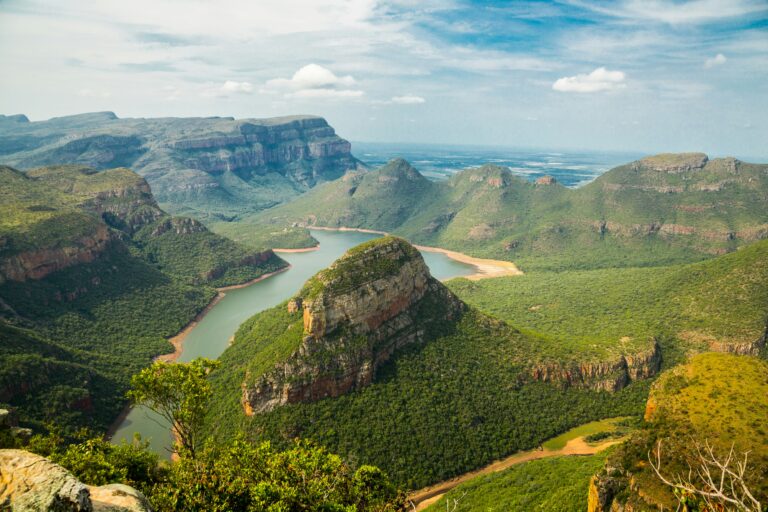
South Africa, a land of diverse landscapes and rich cultural heritage, offers a unique blend of adventure, wildlife, and cosmopolitan experiences. From the vibrant city life of Cape Town to the vast savannas of Kruger National Park, South Africa is a destination that caters to every type of traveller.
Popular Things to Do in South Africa
- Cape Town : Explore the iconic Table Mountain, stroll along the V&A Waterfront, and visit Robben Island, where Nelson Mandela was imprisoned. Don’t miss the scenic drive along Chapman’s Peak and the colourful Bo-Kaap neighbourhood.
- Kruger National Park : Experience a thrilling safari in one of Africa’s largest game reserves, home to the Big Five and a diverse array of wildlife.
- Garden Route : Drive along this stunning coastal route, exploring charming towns, lush forests, and pristine beaches. Key stops include Knysna, Plettenberg Bay, and Tsitsikamma National Park.
- Johannesburg : Visit the Apartheid Museum and Constitution Hill to learn about South Africa’s history. Explore the vibrant Maboneng Precinct and enjoy shopping and dining in Sandton.
- Winelands : Tour the beautiful vineyards of Stellenbosch, Franschhoek, and Paarl. Enjoy wine tastings, gourmet meals, and picturesque landscapes.
Hidden Gems in South Africa
- Drakensberg Mountains : Discover the dramatic landscapes of the Drakensberg, ideal for hiking, rock climbing, and breathtaking views. Visit the Amphitheatre and explore the San rock art sites.
- Blyde River Canyon : One of the largest canyons in the world, offering spectacular views and hiking opportunities. Don’t miss the Three Rondavels and God’s Window.
- Wild Coast : A rugged and remote coastline offering stunning beaches, traditional Xhosa villages, and opportunities for hiking and horseback riding.
- Namaqualand : Visit during spring to witness the spectacular wildflower bloom, transforming the arid landscape into a vibrant carpet of colours.
- Cederberg Mountains : Explore ancient rock art, dramatic rock formations, and enjoy hiking and star-gazing in this less-visited region.
Hiring a Car in South Africa
Hiring a car in South Africa allows you to explore the country’s diverse landscapes at your own pace. Major airports and cities offer a range of car hire options from international and local providers. Ensure you have a valid driving licence and be prepared for driving on the left side of the road. For added peace of mind, consider taking out a Vehicle Hire Excess Waiver Insurance from Leisure Guard to cover any potential excess charges.
Greek Islands Travel Checklist
- Travel Insurance : Essential for covering medical emergencies, trip cancellations, and other unforeseen events. Get a quote from Leisure Guard for comprehensive coverage.
- Passport and Visa : Ensure your passport is valid for at least six months. Check if you need a visa based on your nationality.
- Currency : The local currency is the South African Rand (ZAR). Inform your bank of your travel plans to avoid issues with card transactions.
- Local SIM Card : Purchase a local SIM card for affordable data and communication.
- Appropriate Clothing : Pack light, breathable clothing for warm climates, and warmer layers for cooler regions and evenings. Modest attire is recommended for visiting cultural sites.
- Travel Adaptors : South Africa uses the standard plug types C, D, M, and N.
Discover the beauty and diversity of South Africa with confidence by securing comprehensive travel insurance from Leisure Guard. Get a quote today and ensure you’re covered for all eventualities, so you can relax and enjoy your trip.
Share this post
Ready to start your travel insurance quote.
- Comprehensive Cancellation and Medical cover, including cover for COVID-19
- Cover for Missed Departure and Travel Delay included with All Policies
- 24/7 Access to an online doctor at home and whilst overseas
Terms and conditions apply

More from Leisure Guard

Travel Agents
Our travel experts will source your perfect holiday, from a package holiday to a bespoke tailor-made trip. ABTA, ATOL & CLIA protected.

Vehicle Hire Excess Cover
Vehicle hire companies charge large excesses if something happens to your hire vehicle. Let us help you save money with our standalone cover.

At Leisure Guard we find the best value car rental at over 30,000 pick-up locations worldwide. Find your vehicle today.
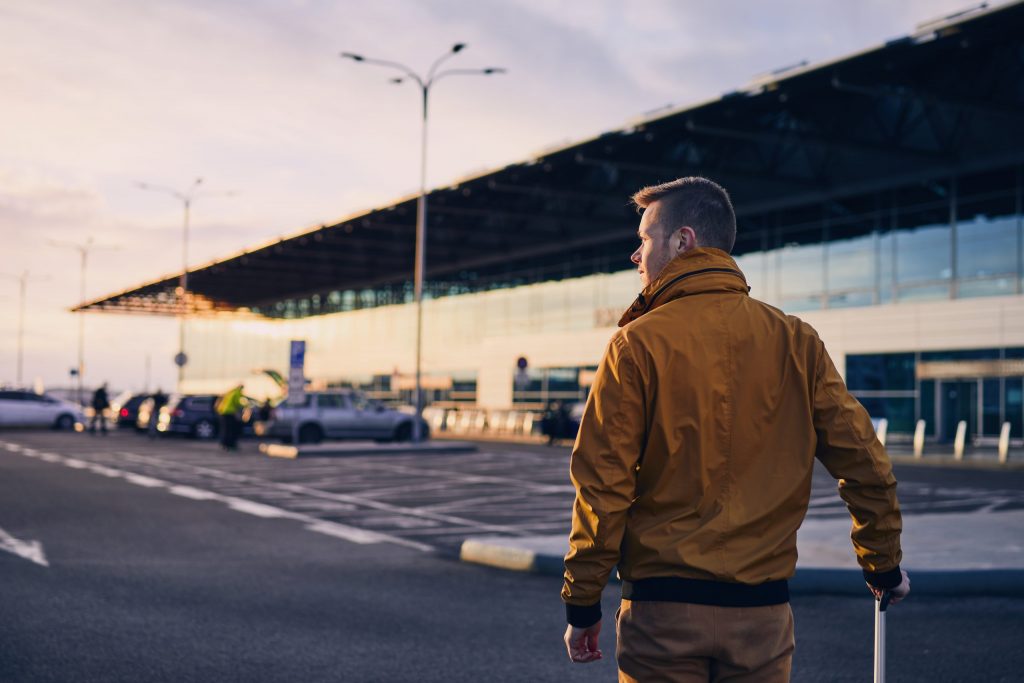
Airport Parking
With competitive rates at all UK airports, book your parking space in advance with Leisure Guard to save up to 60% on gate prices.

Currency Club
Order your travel money with 0% commission and free next day delivery with The Currency Club.
Search the latest deals now and get up to 40% off Hotel Rates
Leisure guard insurance, important information, leisure guard brands.
© Copyright 2024 Leisure World Developments Ltd. Leisure Guard Group and Leisure Guard Insurance Services are trading styles of Leisure World Developments Ltd. Leisure World Developments Ltd is authorised and regulated by the Financial Conduct Authority (FCA), under FCA number 927718. Leisure Guard Travel Insurance is arranged and administered by ROCK Insurance Group. ROCK Insurance Group is a trading style of Rock Insurance Services Limited who is authorised and regulated by the Financial Conduct Authority (FCA No. 300317).
*Discount only available when purchasing through Leisure Guard direct. Discount does not apply to add-ons or any additional premium for pre-existing medical conditions. This discount is only available to new travel insurance policies and must be added at time of purchase.
You can enter the discount code on the ‘Select Policy’ Page, by clicking on ‘Enter a promotion code’ and inputting the promotion code above.
The discount code will expire after 30/09/2024.
Privacy Overview
Necessary cookies are absolutely essential for the website to function properly. This category only includes cookies that ensures basic functionalities and security features of the website. These cookies do not store any personal information.
Analytical cookies are used to understand how visitors interact with the website. These cookies help provide information on metrics the number of visitors, bounce rate, traffic source, etc.
Sign up to our newsletter
By clicking SIGN UP you are consenting to receive information and promotions from us (e.g. periodic newsletters, communications on new products or services, updates on market developments). Occasionally these will contain advertisements from trusted partners. However, we will never give, sell or rent your e-mail to any other companies. If you want to stop receiving our free emails you can unsubscribe at any time by clicking on the link at the bottom of each email. For further information see our privacy policy.
20 Best Cities to Visit in the World
Customers rate Zicasso's travel referral service 4.9 on a scale of 1 to 5 based on 1587 reviews on Trustpilot
We match you with top tour companies that specialize in the trip you want, whether it's a customized private tour or a group tour.
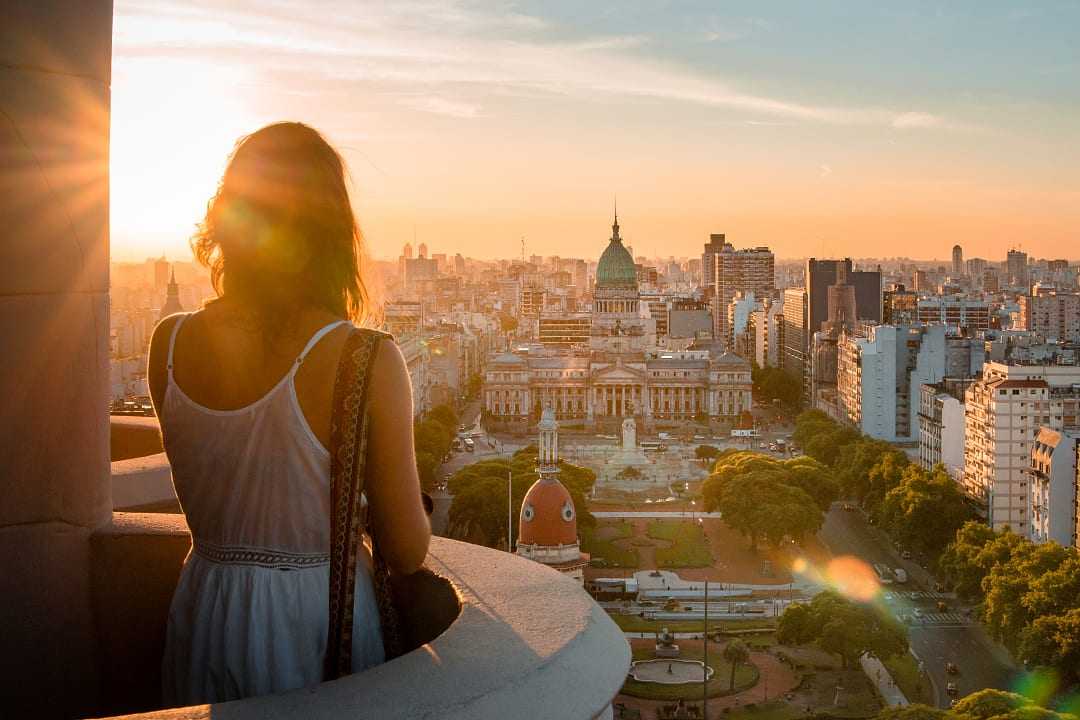
Buenos Aires, Argentina
Exploring the 20 best cities in the world gives you a wealth of diverse experiences, from cultural landmarks to vibrant nightlife and scenic landscapes. The destinations on this list each have unique charm, making them ideal for different types of travelers, whether you're seeking history, adventure, or relaxation.
From the artistic heritage of Florence to the futuristic allure of Tokyo, each city provides unforgettable experiences that cater to a wide range of interests. Whether it's a serene lakeside retreat in Annecy or the bustling energy of Buenos Aires, every city has its own immersive charm.
Let us help you plan your dream trip by offering insights and highlights from each incredible city to help you craft the perfect itinerary.
1. Lisbon, Portugal
2. tokyo, japan, 3. buenos aires, argentina, 4. rio de janeiro, brazil, 5. udaipur, india, 6. florence, italy, 7. annecy, france, 8. ubud, indonesia, 9. istanbul, turkey, 10. marrakech, morocco, 11. edinburgh, scotland, 12. helsinki, finland, 13. hobart, australia, 14. ljubljana, slovenia, 15. cape town, south africa, 16. budapest, hungary, 17. hanoi, vietnam, 18. valletta, malta, 19. panama city, panama, 20. zaragoza, spain, explore the best cities to visit in the world.

Belém Tower in Lisbon, Portugal
Lisbon is the capital of Portugal and a city that blends old-world charm with a modern ambiance. Known for its hilly landscape, the city offers stunning viewpoints, known as miradouros , where you can soak in panoramas of the cityscape overlooking the Tagus River. Lisbon's rich maritime history is celebrated in the eponymous museum, while the iconic Tram 28 gives you a unique way to traverse the undulating hills as it winds through narrow streets past historic landmarks. From a live fado performance in Alfama, where the soulful music captures the essence of Portuguese culture, to witnessing the Age of Discoveries statue, Lisbon stands out as one of the best cities to visit in the world.
Highlights: Belém Tower • Jerónimos Monastery • Alfama District • São Jorge Castle • Praça do Comércio
Recommended length of stay: 3-4 days
Learn more: Portugal Tours & Vacations • Portugal Travel Guide
Expert Tips for Discerning Travelers

Shibuya Crossing in the Ginza District of Tokyo, Japan
Tokyo is a city of contrasts, where ancient traditions meet futuristic technology. As the most populous city in the world, Tokyo offers a diverse range of experiences, from participating in a traditional tea ceremony to exploring the vibrant Akihabara district known for electronics shops and otaku culture. Tokyo's culinary scene is unmatched, boasting more Michelin-starred restaurants than any other city globally. Seasonal festivals, like the cherry blossom festivals in spring, add to its allure as you navigate efficient public transportation or dine in an izakaya with locals.
Highlights: Shibuya Crossing • Sensō-ji Temple • Meiji Shrine • Tokyo Tower • Tsukiji Outer Market
Recommended length of stay: 4-5 days
Learn more: Japan Tours • Japan Travel Guide

Avenida 9 de Julio in Buenos Aires, Argentina
Buenos Aires is often called the "Paris of South America”, focusing on how European elegance meets South American passion. Its European-style architecture, vibrant street art scene, and lively tango music define the cosmopolitan atmosphere. A tango lesson in San Telmo or a visit to a local milonga has its own way of introducing you to the city's cultural heart. The Recoleta Cemetery features Argentina's elite in eerie and beautiful ways, making it a unique attraction. Argentine cuisine, especially its world-renowned beef, is featured in parrillas found throughout a city blending history, culture, and flavor.
Highlights: La Boca Neighborhood • Recoleta Cemetery • Teatro Colón • Plaza de Mayo • Giardino Garibaldi
Learn more: Argentina Tours & Vacations • Argentina Travel Guide

Rio de Janeiro, Brazil
Rio de Janeiro is synonymous with vibrant energy, stunning landscapes, and cultural richness. Famous for its Carnival, one of the largest festivals in the world, Rio is a city that knows how to celebrate. The dramatic mountains, pristine beaches, and sprawling Tijuca National Park provide a perfect backdrop for your adventure. Take a cable car ride to the top of Sugarloaf Mountain for breathtaking views or indulge in Rio’s samba schools that are deeply rooted in Afro-Brazilian culture. Whether you're dancing or exploring along the colorful Selarón Steps, Rio is a city of layers.
Highlights: Christ the Redeemer • Sugarloaf Mountain • Copacabana Beach • Tijuca National Park • Maracanã Stadium
Learn more: Brazil Tours & Vacations • Brazil Travel Guide

Udaipur, India
Known as the "City of Lakes,” Udaipur is one of India's most romantic and picturesque cities. Its beautiful artificial waterways include Lake Pichola, which reflects the surrounding scenery at the heart of the city. The City Palace is a blend of Rajasthani and Mughal architecture, overlooking the lake for a glimpse into the city's royal past. Udaipur is also famous for its vibrant culture, with markets brimming with handicrafts, textiles, and jewelry. Participate in a cooking class to learn about traditional Rajasthani cuisine or take a boat ride at sunset on Lake Pichola to embrace the rich history and cultural vibrancy that echoes the city’s lasting regal memories.
Highlights: City Palace • Lake Pichola • Jag Mandir • Saheliyon-ki-Bari • Jagdish Temple
Recommended length of stay: 2-3 days
Learn more: India Tours & Vacations • India Travel Guide
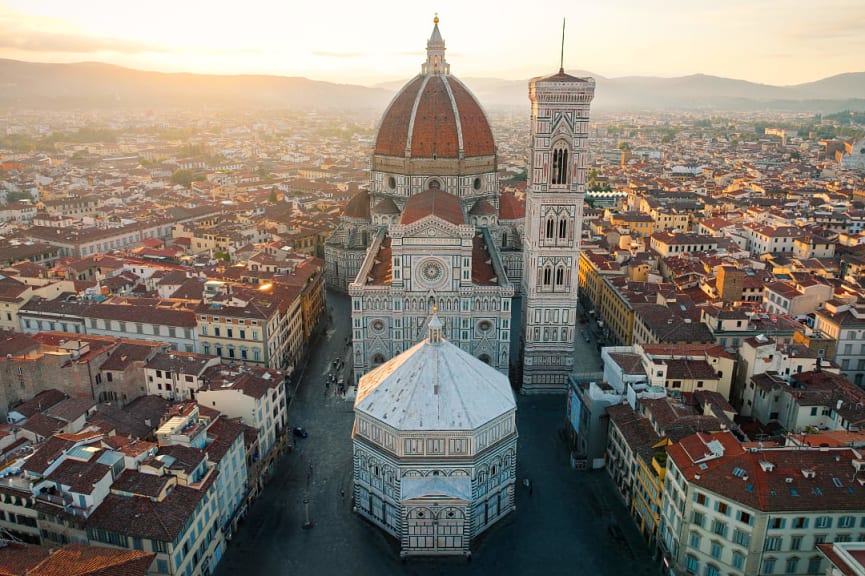
Florence Cathedral in Florence, Italy
Florence is famous as the birthplace of the Renaissance, creating a city where art and history come alive. Home to masterpieces by Michelangelo, Botticelli, and other masters of art, Florence's museums remain world-renowned. The city's historic center is a UNESCO World Heritage Site, featuring a treasure trove of architectural marvels. Famous for its leather goods, visiting a local artisan workshop to see traditional leather-making techniques depicts a bygone era. Whether you're exploring the Boboli Gardens or attending a cooking class to make traditional Tuscan dishes, Florence solidifies its place as one of the best cities to visit in the world.
Highlights: Florence Cathedral • Uffizi Gallery • Ponte Vecchio • Palazzo Vecchio • Accademia Gallery
Learn more: Italy Tours • Italy Travel Guide

Château de Duingt on Lake Annecy, France
Often referred to as the "Venice of the Alps,” Annecy is a charming city nestled at the foot of the famous mountain chain. The city's picturesque canals, colorful old town, and stunning alpine views make it a favorite destination for travelers of all types. Lake Annecy is one of the cleanest lakes in Europe, perfect for swimming, boating, or cycling around its scenic shores. With its beautiful setting and vibrant culture, Annecy offers relaxation and adventure.
Highlights: Lake Annecy • Palais de l'Isle • Château d'Annecy • Old Town • Annecy Market
Learn more: France Tours & Vacations • France Travel Guide

Ubud, Indonesia
Ubud is celebrated as the cultural heart of Bali, known for blending natural beauty, spirituality, and artistic expression. The Sacred Monkey Forest is home to hundreds of playful monkeys and ancient temples, while wellness retreats, yoga centers, and traditional Balinese dance performances have gained popularity over the years. The Tegalalang Rice Terraces have become a UNESCO World Heritage Site, showcasing the island's agricultural heritage. Whether you're exploring the local art scene, taking a Balinese cooking class, or simply enjoying the tranquil scenery, Ubud is a peaceful yet enriching getaway.
Highlights: Sacred Monkey Forest Sanctuary • Tegalalang Rice Terraces • Ubud Palace • Campuhan Ridge Walk • Ubud Art Market
Learn more: Bali Vacations & Tours • Bali Travel Guide

Blue Mosque in Istanbul, Turkey
Istanbul is a city that straddles two continents, offering a unique blend of cultures from East and West. Its rich history as the capital of the Roman, Byzantine, and Ottoman empires is reflected in its stunning architecture and cultural landmarks. The Grand Bazaar is one of the largest and oldest covered markets in the world, offering you a shopper's paradise. A traditional Turkish bath provides a relaxing and cultural experience, while the culinary scene represents flavors from various cultures, offering a mouthwatering treat for food lovers. Whether you're cruising the Bosphorus or exploring historic sites, Istanbul is undoubtedly one of the most exciting cities in the world.
Highlights: Hagia Sophia • Topkapi Palace • Blue Mosque • Grand Bazaar • Bosphorus Strait
Learn more: Turkey Tours & Vacations • Turkey Travel Guide

Jemaa el-Fnaa Square in Marrakech, Morocco
The "Red City" of Marrakech is a sensory feast famous for its vibrant markets, stunning architecture, and rich history. The souks are a labyrinth of stalls selling spices, textiles, and handicrafts, providing a glimpse into historic Moroccan culture. A traditional Moroccan tea ceremony in a local riad or exploring the city's historic gardens and palaces blend modern life with celebrated heritage. Marrakech's unique mix of old and new, along with its gateway to the Atlas Mountains, makes the city endlessly alluring.
Highlights: Jemaa el-Fnaa Square • Koutoubia Mosque • Saadian Tombs • Majorelle Garden • Bahia Palace
Learn more: Morocco Tours & Vacations • Morocco Travel Guide

Edinburgh Castle in Scotland. Photo courtesy of Visit Scotland
Edinburgh is Scotland's capital and a city where history and culture thrive. It is a UNESCO World Heritage Site known for its medieval Old Town and neoclassical New Town, with literary heritage connected to famous authors like Sir Arthur Conan Doyle. The Edinburgh Festival Fringe remains the world's largest arts festival, acting as a highlight of the city's cultural calendar. A ghost tour through the city's haunted streets or a visit to a local whisky distillery provides unique ways to experience local folklore, culture, and history.
Highlights: Edinburgh Castle • Holyrood Palace • Arthur's Seat • The Royal Mile • National Museum of Scotland
Learn more: Scotland Tours & Vacations • Scotland Travel Guide

Helsinki, Finland. Photo courtesy of Jussi Hellsten / Visit Finland
The capital of Finland is a city that beautifully blends nature with design. Surrounded by water, with numerous islands and waterfronts, Helsinki offers a serene environment for exploration. The city's design and architecture are recognized by its UNESCO City of Design designation. The local food scene focuses on sustainability and local ingredients, offering a treat for food lovers from around the world. Visiting a traditional Finnish sauna or exploring the Design District accentuates the unique blend of natural beauty and modern culture, allowing Helsinki to stand out as one of the best cities to visit.
Highlights: Helsinki Cathedral • Suomenlinna Fortress • Market Square • Temppeliaukio Church • Uspenski Cathedral
Learn more: Finland Vacations & Tours

Hobart, Australia
Hobart is often overlooked when visiting Australia, but as the capital of Tasmania, it is a city that offers stunning natural beauty and rich cultural scenery. The waterfront stands as a hub of activity, known for its markets, cafés, and restaurants showcasing the best of Tasmanian produce. The Museum of Old and New Art is often referred to as MONA, offering a provocative and unique art collection, with exciting exhibits throughout the year. The growing food and wine scene, along with the vibrant arts culture, easily connects with nearby Mount Wellington, celebrated for its panoramic views of the city and beyond. The surrounding wilderness is perfect for hiking and exploring, often acting as the inspiration for much of the art and culinary culture within the city. Hobart's blend of art, food, and nature makes it a top destination for travelers seeking a unique experience.
Highlights: Museum of Old and New Art • Mount Wellington • Food and Wine • Tasmanian Museum and Art Gallery • Salamanca Market
Learn more: Australia Tours • Australia Travel Guide

Ljubljana, Slovenia
Slovenia’s capital city is a delightful blend of history, culture, and natural beauty. The centerpiece is the Ljubljana Castle, perched on a hill and offering panoramic views of the cityscape and beyond. Tivoli Park is the largest and most beautiful park in the city, perfect for a leisurely stroll and to experience the rhythm of daily urban life in the country. The iconic Triple Bridge connects the historical and modern parts of the city, the Dragon Bridge acts as a symbol of Ljubljana, and the Central Market is a great spot to experience local produce and seasonal delicacies.
Highlights: Ljubljana Castle • Tivoli Park • Triple Bridge • Central Market • Dragon Bridge
Learn more: Slovenia Tours

Lions Head Hike with view of Table Mountain in Cape Town. Photo courtesy of South Africa Tourism
Cape Town is a city that offers an incredible mix of natural beauty, cultural diversity, and adventure. Table Mountain dominates the skyline, offering stunning views and a chance to stretch your legs on a scenic hike near the city center. The V&A Waterfront is a lively area with shops, restaurants, and museums, while nearby Robben Island is a poignant reminder of South Africa's challenging history. Cape Town's beaches include the famous Clifton and Camps Bay, which are perfect for sunbathing and water sports. A visit to the nearby Cape Winelands for a wine tasting or a drive along the scenic Chapman's Peak Drive adds to the city's individuality.
Highlights: Table Mountain • Robben Island • Cape of Good Hope • Kirstenbosch National Botanical Garden • V&A Waterfront
Learn more: South Africa Safari Tours & Vacations • South Africa Travel Guide

Buda Castle in Budapest, Hungary
Budapest has been referred to as the "Paris of the East”, famous for its stunning architecture and neighborhoods uniquely divided by the Danube River into Buda and Pest. Known for its thermal baths, with numerous historic spas offering relaxation in beautiful settings, Budapest is culturally lively, with events like the Budapest Spring Festival and the Sziget Festival attracting visitors from around the world. The city’s famous ruin bars demonstrate the creative way entrepreneurs turned abandoned buildings and courtyards into thriving centers for nightlife.
Highlights: Buda Castle • Fisherman's Bastion • Széchenyi Thermal Bath • Chain Bridge • Hungarian Parliament Building
Learn more: Hungary Tours

Trấn Quốc Pagoda in Hanoi, Vietnam
Hanoi is a rare city that beautifully blends history and modernity. Known for its rich history and bustling street life, Hanoi features a mix of French colonial architecture and traditional Vietnamese culture. The city's street food scene is legendary, offering a variety of delicious local dishes, from bánh mì to phở. The traditional water puppet shows demonstrate a unique Vietnamese art form dating back hundreds of years and the bustling streets also act as a gateway to the stunning karsts of Hạ Long Bay.
Highlights: Hoàn Kiếm Lake • Ho Chi Minh Mausoleum • Old Quarter • Temple of Literature • One Pillar Pagoda
Learn more: Vietnam Tours & Vacations • Vietnam Travel Guide

Valletta, Malta
Valletta can feel surprising when exploring the streets steeped in history and culture. As a UNESCO World Heritage Site, Valletta is known for its well-preserved historical architecture and rich heritage. Despite being one of the smallest capitals in Europe, the city is packed with things to see and do, all within walking distance. Whether hosting various cultural events and festivals, including the Valletta Film Festival, or touring Saint John’s Co-Catherdal, you can feel a remarkable influence in such a small capital city.
Highlights: St. John's Co-Cathedral • Upper Barrakka Gardens • Valletta Waterfront • Fort Saint Elmo • National Museum of Archaeology

Panama Canal, Panama
Panama City is a fascinating blend of old and new, with a skyline that features modern skyscrapers and historic buildings. While best known for its access to the engineering marvel of the Panama Canal that connects the Atlantic and Pacific Oceans, Panama City has emerged as a harbinger of character, heritage, and exciting experiences. The historic district of Casco Viejo is a UNESCO World Heritage site with colonial architecture and buzzing nightlife. Panama City's tropical climate makes it a year-round destination and its diverse culinary scene reflects the multicultural population that has grown over time. Whether exploring the historic district, watching ships pass through the canal, cycling along the waterfront, or visiting Monkey Island, Panama City offers a unique travel experience.
Highlights: Panama Canal • Casco Viejo • Miraflores Visitor Center • Amador Causeway • Biomuseo
Learn more: Panama Vacations • Panama Travel Guide

Basílica de Nuestra Señora del Pilar in Zaragoza, Spain
Zaragoza in Spain showcases influences from Roman, Moorish, and Christian civilizations. The Basilica del Pilar is one of Spain's most important Baroque temples and remains a major pilgrimage site. The city is also known for the Fiestas del Pilar, one of Spain's largest festivals and celebrated for the passing of flowers, when participants dress in period costumes and create elaborate floral displays. Zaragoza's position along the Ebro River provides scenic views and the vibrant culinary scene shaped around tapas features local specialties demonstrating an individual charm unlike anywhere else in the country.
Highlights: Basílica de Nuestra Señora del Pilar • Aljafería Palace • Plaza del Pilar • Goya Museum • Ebro River Walk
Learn more: Spain Tours & Vacations • Spain Travel Guide

Marrakech, Morocco
From the historic streets of Lisbon to the bustling markets of Marrakech, let us light the way to cities that offer diverse experiences for every type of traveler. Whether you're drawn to breathtaking landscapes, rich cultural heritage, or vibrant local scenes, each city on this list promises an unforgettable adventure. Their unique charms and standout attractions make them some of the best cities in the world to visit.
For more travel inspiration and tips on planning your next vacation, discover your preferred experiences with our trip ideas for the city enthusiast or find your next destination with our ideas on the top places to travel by each month of the year .
Life-Enriching Travel Designed Just for You
Trips curated by the world’s top destination experts
Concierge-level service leading up to and during your trip
Unique, exclusive experiences and insider access
Help Me Plan My Trip
Get Top Travel Specialists to Help Plan Your Trip

Troubadour Apex Compact Backpack 3.0 review: I’ve found my new favourite bag
I've found my perfect backpack

Slightly smaller than the regular Apex 3.0, this backpack from Troubadour strikes a perfect balance between design, comfort and practicality. I think it looks fantastic and the materials used give the impression this is a bag that’ll last and last. Neat details include an AirTag pocket and a handy bit of storage for your phone or passport in the shoulder strap. Troubadour bags are not cheap, but in the Apex 3.0 Compact you’ll find a backpack that comfortably sits among the very best we’ve ever used.
High quality
Excellent design
Comfortable
Exterior zips aren’t full-length
Lighter colours need more cleaning
Why you can trust T3 Our expert reviewers spend hours testing and comparing products and services so you can choose the best for you. Find out more about how we test .
When I reviewed the regular Apex Backpack 3.0 by Troubadour earlier this year, I described it as “almost perfect”. I loved the design, the quality and the comfort but I found it to be slightly too large, too bulky and, in the all-black colourway, a bit too businesslike.
Fortunately, I knew how all of these concerns could be addressed, and I’m pleased to report that the slightly smaller ‘compact’ version, newly available in a very pale blue colour Troubadour calls scree, is everything I look for in a premium backpack .
Troubadour Apex Compact Backpack 3.0 review: Price and availability

At £225, this is still very much a premium backpack, and it’s just £20 cheaper than the full-size Apex 3.0. But you get a lot for your money, as I’ll dive into through the rest of this review. It's available to buy at Troubadour and select retailers, like Amazon .
Colour options at the time of writing include black, navy and ‘Air Force Blue’. Troubadour tells me new colours including Basalt, Scree and Livid Green, plus a two-tone colourway called Green Smoke & Obsidian Green, will be available in the coming weeks (as of September 2024). Basalt and Scree will be coming to the original, full-size Apex 3.0 too.
Troubadour Apex Compact Backpack 3.0 review: Design and features

The Compact is exactly the same as the regular Apex 3.0, apart from being slightly smaller in every dimension. The full-size bag measures 48 x 32 x 15 cm, has a capacity of 25 litres, weighs 1 kg and can carry laptops up to 17 inches. The Apex 3.0 Compact measures 41 x 29 x 14 cm, has a capacity of 16 litres, weighs 0.9 kg and can accommodate laptops up to 16 inches. Both bags fit inside easyJet’s small cabin bag limit, but even the Compact is slightly too large for RyanAir’s free baggage allowance (40 x 20 x 25 cm).
Just like the regular Apex 3.0, the Compact is made from a waterproof fabric called FortiWeave, which is spun from recycled plastic bottles. It feels incredibly hard-wearing while still having the sort of premium texture you’d expect from a £225 backpack. There’s a nice bit of vegan leather trim above the rear zip, adding a pleasing bit of contrast to the external aesthetics, and the handle has a rubber inner that makes it both comfortable and sturdy.
The bag has a pair of elasticated bottle pockets that sit flush against the bag when empty, and a zipped pocket on the front that has a soft lining that is sure to keep your phone and sunglasses safe.
Inside this pocket there’s a small pocket for an AirTag (although I wish Troubadour wouldn’t decorate it with the message ‘Track with AirTag’, since that’s just asking a thief to remove your Apple tracker), and a handy clip for attaching your keys.

The rear of the bag has a slot for attaching it to the handle of a cabin suitcase , plus three large areas of padding. These make the bag very comfy (and keep your laptop safe in the rearmost compartment), while the deep grooves between them help keep your back ventilated. The rearmost compartment has a dedicated slot for a laptop, plus another for a tablet, then a further space for items like magazines or an eBook reader .
Before we dive into the main compartment, I need to talk about the shoulder straps. They are slightly stiffer than those used by most other backpacks, and at first they feel a bit strange, almost like you’re strapping on a parachute. But you’ll soon realise they are incredibly comfortable, despite being a little bulky, and I love how the excess lengths of adjustable strap are tethered to themselves, so they don’t dangle loose.

The left-hand shoulder strap has an integrated zipped pocket, which expands to neatly fit your phone, wallet or passport. It’s an incredibly convenient place to put such items, especially when passing through an airport, but I struggled to get used to the feeling of my phone being pressed to my chest. Although I prefer my phone in my trouser or jacket pocket, the shoulder strap is still a great place for a passport while travelling.
Open the Compact and you’ll find the interior layout is the same as the full-size Apex 3.0, but slimmed down slightly. This means there are five pockets, two of which are zipped, plus a pen/stylus holder. The pockets are all neatly arranged and their various sizes makes them handy for carrying a broad range of items.
Then of course there’s the main interior space itself, which benefits from a broad, flat floor that holds its shape even when the bag is empty. This sounds like a small detail, but it means the bag stands up on its own – and anyone who commutes on busy trains or spends their lives queuing at airports will appreciate this, since the Apex 3.0 Compact can be placed by your feet without falling over.
Troubadour Apex Compact Backpack 3.0 review: Performance

I’ve used the Apex 3.0 Compact for a couple of weeks now. It has accompanied me on trips to the shops, journeys into London for work and on a couple of overnight stays away from home. For me, this bag is the perfect size. I know such a parameter is entirely subjective, but for my use case it offers the ideal balance between capacity and portability.
It is comfortable, even when full, and takes heavier items like laptops in its stride, while retaining its sleek shape and feeling like it is made to last. The pale colour of this particular example is likely to attract dirt and stains over time, more so than a black bag, but a quick and occasional clean should see to that.
I love the attention to detail Troubadour has poured into this bag. For example: The pocket on the shoulder strap has two pairs of magnets that snap it closed when it’s not in use, stopping the lining from looking untidy. Being that bit smaller than the regular Apex 3.0 also means it’s safe to use with most budget airlines, since it’ll fit under the seat.
Troubadour Apex Compact Backpack 3.0 review: Verdict

I’ve used a lot of bags over the years. From messenger and shoulder bags , to laptop briefcases and all manner of backpacks. Each has its pros and cons, but this is the first time I’m willing to describe a bag as perfect. It’s the right size and the right design, with a good selection of pockets and a great range of colour options. It's clear Troubadour pays as much attention to aesthetics as practicality and comfort.
I also like the materials Troubadour has used, and I feel the price is justified even when typical luxury fabrics like genuine leather are shunned in favour of vegan and recycled alternatives. If you have the budget you will not be disappointed.
Upgrade to smarter living
Get the latest news, reviews, deals and buying guides on gorgeous tech, home and active products straight to your inbox.
Alistair is a freelance automotive and technology journalist. He has bylines on esteemed sites such as the BBC, Forbes, TechRadar, and of best of all, T3, where he covers topics ranging from classic cars and men's lifestyle, to smart home technology, phones, electric cars, autonomy, Swiss watches, and much more besides. He is an experienced journalist, writing news, features, interviews and product reviews. If that didn't make him busy enough, he is also the co-host of the AutoChat podcast.

The new Allroad Ti could be the ultimate titanium road bike
By Matt Kollat Published 19 September 24

The INSPELNING smart plug has a variety of energy monitoring capabilities
By Lizzie Wilmot Published 19 September 24
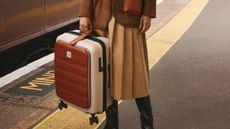
Antler celebrates 110 years with new leather travel goods collection
By Bethan Girdler-Maslen Published 14 September 24

The Dualit Espressivo Pro produces espressos every bit as good as the ‘pro’ moniker suggests
By Derek Adams Published 13 September 24

Keep your paws on the floor during downward dog with this stylish mat featuring an anti-sweat stain surface
By Joanna Ebsworth Published 12 September 24

A 2-in-1 self-empty robot vacuum from a well-respected household brand that comes with all the bells and whistles
By Rob Clymo Published 11 September 24

I tested out the FlexiSpot BS12 Pro office chair for three weeks. Can it cushion the impact of working at home?
By Jamie Carter Published 10 September 24

Philips' impressive LatteGo system delivers superb coffees – more than 20 different kinds
By Carrie Marshall Published 9 September 24

I’ll never go camping without the YETI Camino 20 Carryall again
By Bethan Girdler-Maslen Published 30 August 24

Although not suitable for every home, the EZVIZ RS20 Pro takes vacuum and mopping tech to new heights
By Derek Adams Published 30 August 24
Useful links
- When is the next Prime Day?
- Best 5G phones
- Best VPN services
- Best laptops
- Best smartphones
- Best mattresses
- Best phone deals
- Best mattress deals
- Best TV deals
- Discount codes

IMAGES
VIDEO
COMMENTS
Check out this year's Best in Travel winners. Black-maned lions framed against desert dunes, powdery beaches lapped by two oceans, star-studded night skies, jagged mountains - South Africa is the place to go wild. Best Time to Visit. Best Places to Visit. Attractions.
South Africa Travel Guide: The Best Booking Resources. These are my favorite companies to use when I travel. They consistently have the best deals, offer world-class customer service and great value, and overall, are better than their competitors. They are the companies I use the most and are always the starting point in my search for travel deals.
South Africa Travel Guide. Travel to South Africa, and two things will happen: 1.You'll realise you ran out of time. 2.You'll end up booking another trip with a much longer itinerary. With a ridiculous amount of incredible things to do in South Africa, it's impossible to fit all of the highlights into a single trip. After all, how do you ...
The best place to travel in South Africa for diving and snorkelling is the iSimangaliso Wetland Park on the northern KwaZulu-Natal coast, which has vibrant coral reefs and fluorescent fish. You won't find bright colours along the Cape coast, but the huge number of sunken vessels makes wreck diving popular.
Get information on South Africa Travel Guide - Expert Picks for your Vacation hotels, restaurants, entertainment, shopping, sightseeing, and activities. Read the Fodor's reviews, or post your own.
7. Go whale watching by land or sea. Some 37 species of whales and dolphins frequent South Africa's shores, so it's no wonder whale-watching is a popular activity. You can hop on a boat from plenty of places along the country's three coastlines to view these behemoths in their watery haunts.
5. Drakensburg. Best region for hiking. South Africa's largest mountain range is a paradise for hikers and outdoor enthusiasts. In addition to its rugged peaks, lush valleys and dramatic cliffs, the Drakensberg is also dotted with rock and cave art that dates back several thousand years.
South Africa is one of the most popular countries in Africa for tourism. Visitors can experience city life in Cape Town and Johannesburg, or get up close and personal with wildlife in safari destinations like Kruger National Park. Despite South Africa's painful past and certain areas of the country that have a reputation for crime, visitors ...
South Africa Travel Guide. Your ultimate South Africa travel guide, with tips, ideas on things to do, and best things to see in South Africa. Great for first-time and returning travelers. Found in the southernmost tip of Africa, South Africa is a great place for those looking for some excitement. Full of history and home to numerous forests ...
Day 2. After a leisurely breakfast, grab your camera and hop into your hire car for a tour of Cape Town's scenic suburbs. Drive south to Boulders Beach, home to a colony of endangered African penguins. Here, a boardwalk winds through the nesting site, allowing you to see these comical little birds up close. Next on the itinerary is Hout Bay, a ...
13 Top Things to Do in the Drakensberg, South Africa. How to Travel From Durban to Cape Town by Bus, Car, and Plane. West Coast National Park: The Complete Guide. Gansbaai, South Africa: The Complete Guide. Golden Gate Highlands National Park: The Complete Guide. Sodwana Bay, South Africa: The Complete Guide.
Planning Your Trip. Best Time to Visit: Although South Africa is a year-round destination, summer (December to February) is the hottest, wettest time of the year and the best time for a beach holiday. Winter (June to August) is the coolest, driest time of year and the best time to go on safari. Languages: Afrikaans, English, Ndebele, Northern ...
Local travel tips for South Africa. - U.S. citizens visiting South Africa for 90 days or less do not need to obtain a tourist visa. Just ensure that your passport is valid for at least 30 days after your intended return, and reserve at least two consecutive pages for entry stamps at customs. - South Africa has 11 official languages, but ...
Kgalagadi - Classic safari. Kruger - Classic safari. Sabi Sand - Classic safari, private reserve. MalaMala - Classic safari, private reserve. Phinda - Classic safari, private reserve. Hluhluwe-iMfolozi - Classic safari. Kgalagadi - Classic safari. All 42 South Africa Parks & Reserves.
South Africa Travel Guide. South Africa may be the most captivating country to travel through. It has vast mountain ranges, endless deserts, breathtaking coastline, amazing wildlife, and Cape Town one of our favorite cities in the world. You can take a safari in Kruger, climb the Drakensberg mountains, or sip world-class wine in Stellenbosch.
4. Kruger National Park. Without any doubt, Kruger National Park is one of the best-known places to visit in South Africa. If you want the best wildlife safari experience in South Africa, then Kruger NP is definitely the place to be. Kruger is the oldest and also the biggest National Park in South Africa.
To plan the absolute best trip to South Africa, it's worth also doing your own research. Check out a South Africa travel guide book, or a South Africa tourism guide! Keep reading: Where to go in Africa: Top 9 countries for an unforgettable experience. 1. Cape Town. If you're wondering where to go on holiday in South Africa, Cape Town is a must.
The Best Time To Visit: September-November & April-May. September to November and April to May are the best times to visit South Africa, but these times can change depending on your travel pursuits. For safaris, you'll want to visit in the winter (drier) months, for the mountains you'll want to come in the summer months and for Cape Town ...
7. Be prepared to tip. South Africa has a strong tipping culture. In many customer-facing industries, salaries are low and workers make much of their money from tips. Restaurant staff will expect a top of around 10%, but leaving 12-15% will generate bigger smiles.
The Insight Guides to South Africa is an in-depth guidebook to South Africa and comes with a free app and ebook. This is another of the best guidebooks for South Africa travel. This edition of the guidebook covers Johannesburg, Cape Town, national parks and game reserves. Local experts provide insider knowledge.
Still, every great journey begins with a single step. So if you're looking to get your feet wet, here are the best places to visit in South Africa. On This Page: Cape Town. Kruger National Park. Drakensberg Region. Stellenbosch and Franschhoek. Wild Coast. Blyde River Canyon.
The historic farms of nearby Constantia offer relaxing wine tasting, while game reserves promise sightings of Africa's wildlife. 2. Kruger National Park. When it comes to seeing Africa's best known species, there's little argument over the best place in South Africa to head - Kruger National Park.
You can see the best of South Africa in just under three weeks on this epic 18-day adventure from Cape Town and back. Spend a week in Greater Kruger and Kruger National Park with thrilling bush walks, safari drives, and unforgettable bush braais. Then, head south to hit the iconic Garden Route, trekking through national parks and spotting wildlife at every turn. Treat yourself to delicious ...
Travel Guide to South Africa. September 18, 2024; ... Travel Adaptors: South Africa uses the standard plug types C, D, M, and N. ... At Leisure Guard we find the best value car rental at over 30,000 pick-up locations worldwide. Find your vehicle today. Learn more. Airport Parking.
Lisbon is the capital of Portugal and a city that blends old-world charm with a modern ambiance. Known for its hilly landscape, the city offers stunning viewpoints, known as miradouros, where you can soak in panoramas of the cityscape overlooking the Tagus River.Lisbon's rich maritime history is celebrated in the eponymous museum, while the iconic Tram 28 gives you a unique way to traverse the ...
The Compact is exactly the same as the regular Apex 3.0, apart from being slightly smaller in every dimension. The full-size bag measures 48 x 32 x 15 cm, has a capacity of 25 litres, weighs 1 kg ...